Exhibition "Protect Yugoslavia" - Museum of Yugoslavia
After several weeks of not being able to organize myself, on the last Saturday in March, I found a few hours of time.
I visited the exhibition in the Museum of Yugoslavia, which was supposed to be installed by March 31.
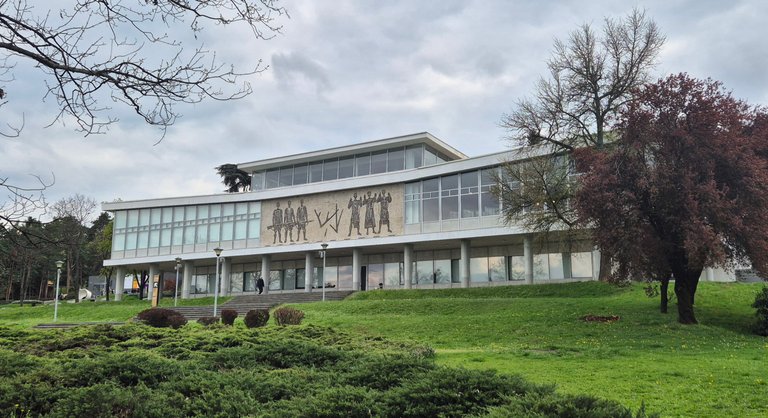
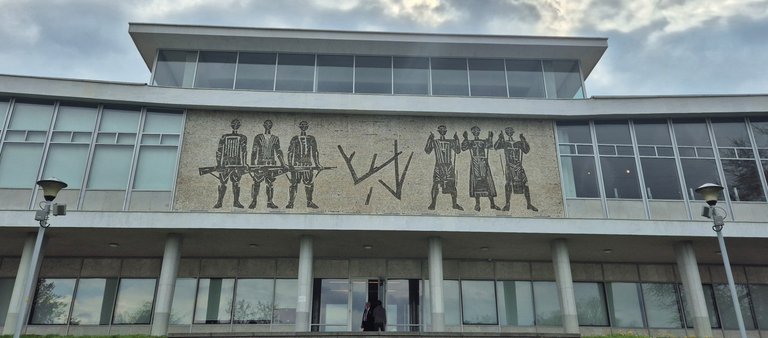
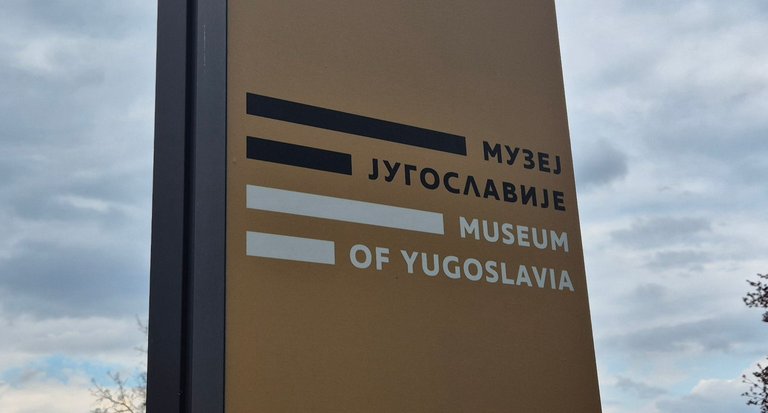
Today I see that the exhibition has been extended until May 4th, when a large visit to this museum is expected due to the visit of the "Kuća cveća(House of Flowers)" museum and the commemoration of the anniversary of the death of Josip Broz Tito.
I will present a tour of that part of the museum in a future post.
The disorganization almost cost me to miss that exhibit, which was on display from October 9, 2024.
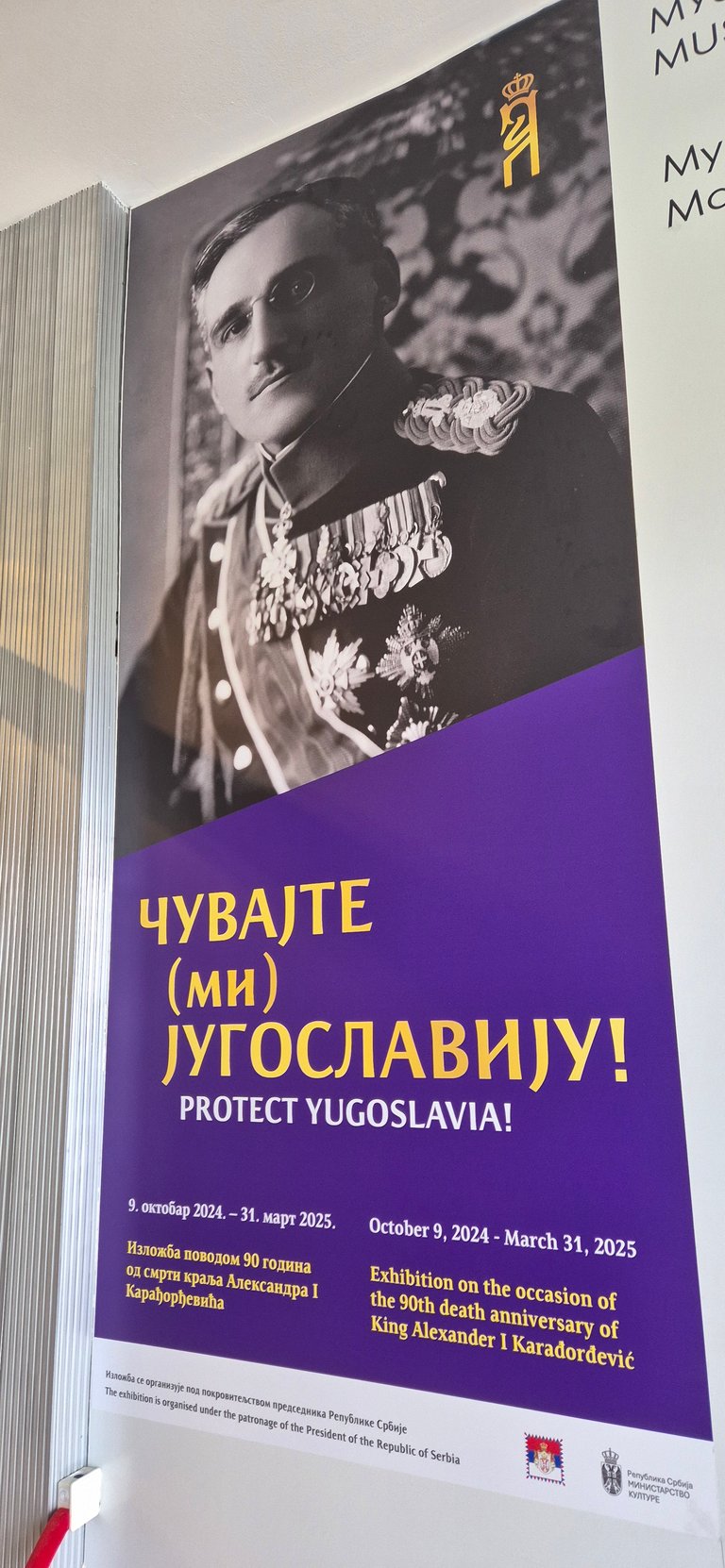
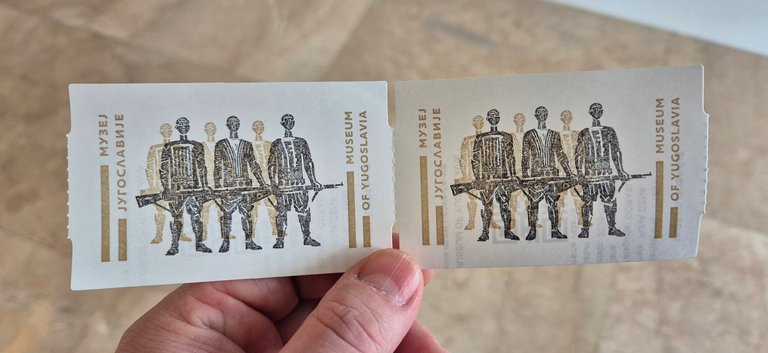
And why was it exhibited on that particular date?
To explain, I will go back to the end of the 19th and the first half of the 20th century.
In 1888, in Cetinje, Aleksandar I Karadjordjević was born, the son of the later Serbian King Peter I Karadjordjević (who ascended the throne of Serbia in 1903, after the murder of King Alexander and Queen Draga Obrenovic).
After World War I, the Kingdom of Serbs, Croats and Slovenes was formed, on whose throne is King Aleksandar I Karadjordjevic.
The formation of a common state was his idea.
In 1929, the Kingdom of Serbs, Croatia and Slovenes changed its name to the much better known Kingdom of Yugoslavia, and remained a monarchy until 1941.
Aleksandar I Karadjordjevic thus becomes the king of the majority of Slavs on the Balkan Peninsula, and Yugoslavia includes North Macedonia, Bosnia and Herzegovina, Montenegro, Serbia, and most of Croatia and Slovenia, that is to say, almost the entire later Yugoslavia. Yugoslavia that fell apart in 1991 in a bloody civil war.
October 9 was chosen as the date of the exhibition, because it represents 90 years since the assassination of King Alexander I Karadjordjević.
The last words he uttered as he breathed his last, before he died from his wounds, were: "Protect Yugoslavia".
The assassination of the Serbian King was carried out on October 9, 1934 in the French city on the coast of the Mediterranean Sea, Marseille.
The exhibition setting includes three parts.
The first, which is dedicated to the assassination, the second, which is dedicated to his funeral and the third, which represents the monuments that were built throughout the kingdom in his name.
I could visit the exhibition at any time, but I wanted it to be a guided tour, in order to hear some historical details and details that I did not know before.
I knew that the King was assassinated, that the Macedonian murderer Vlado Chernozemski, a member of the national movement for the liberation of Macedonia VMRO, was accused of it, with the help of Croatian nationalists and with the help of the leader of the Ustaše movement, Ante Pavelić, supported by the Italian fascist Muslolini.
But I didn't know that King Alexander was terminally ill at the time, just as I didn't know that 80 years after the assassination, when in 2014 France was supposed to remove the "Top Secret" mark from the file on the king's murder, that deadline for opening the documentation was postponed for another 80 years.
I guess only our great-grandchildren see it.
Until then, we can only remember King Alexander I through a story from history, the way and the place where his life ended.
Upon entering the museum, the group I was in was directed upstairs, next to the stone sculpture.
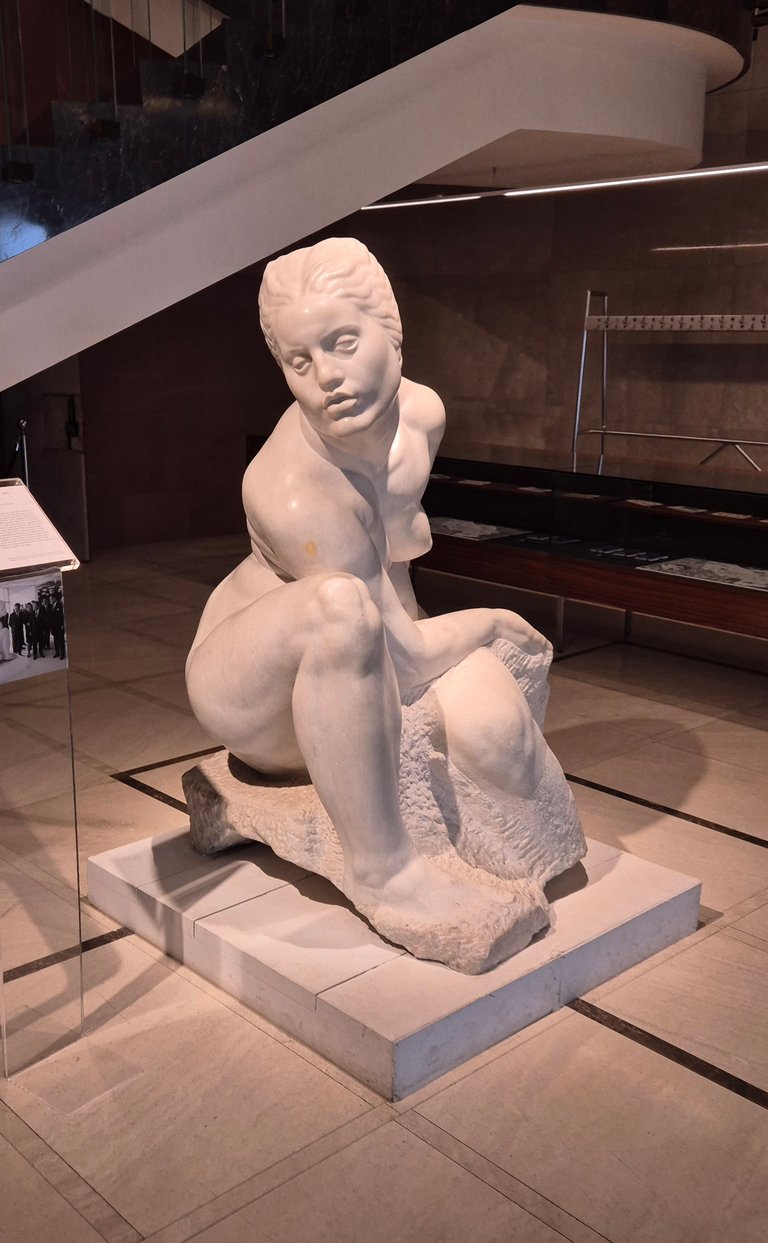
When you go upstairs, the central part is occupied by a poster with the theme of the exhibition and the image of King Alexander.
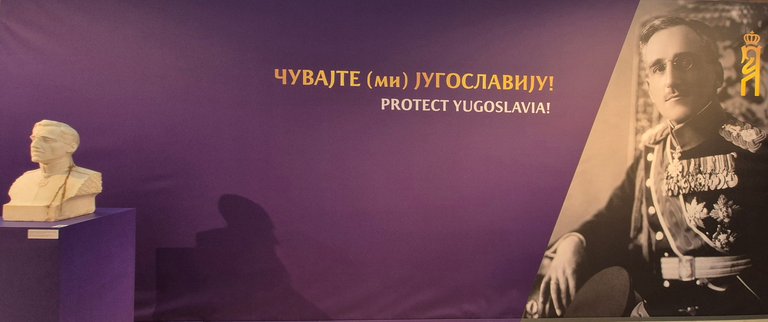
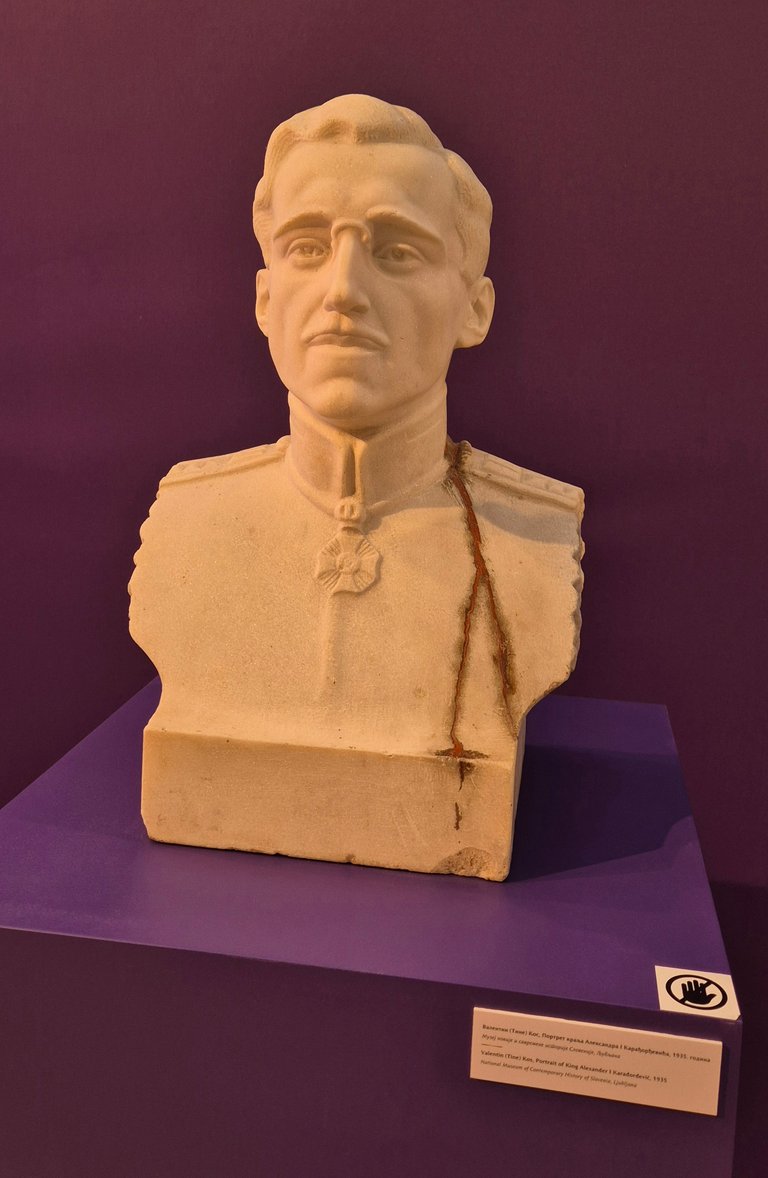
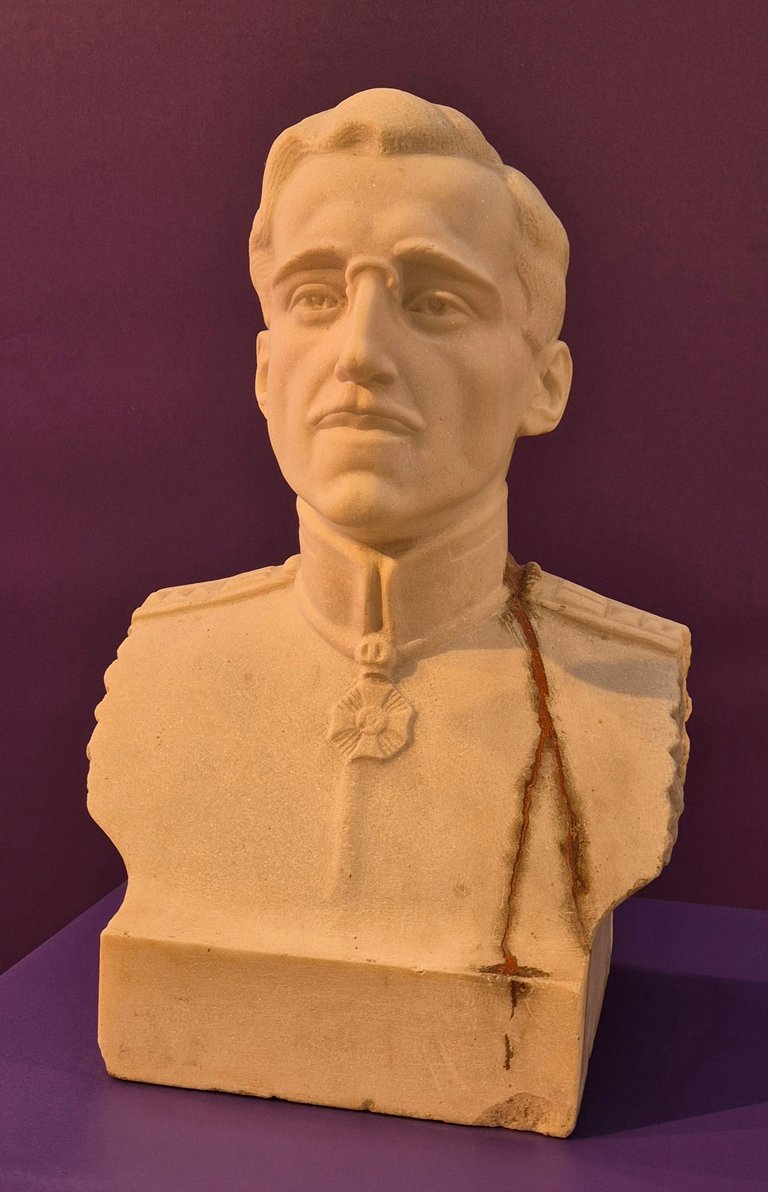
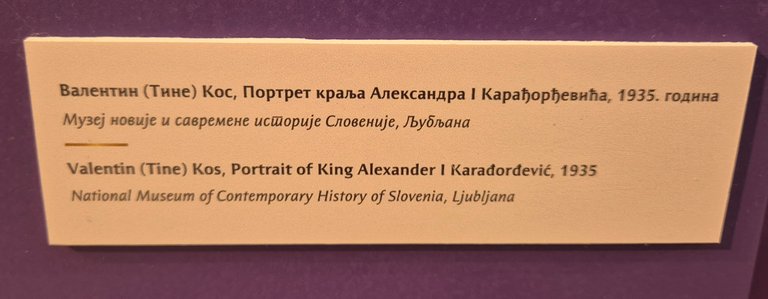
There is a bust of him on the side, as well as a large screen showing camera footage from the tour of Marseille that day in 1934.
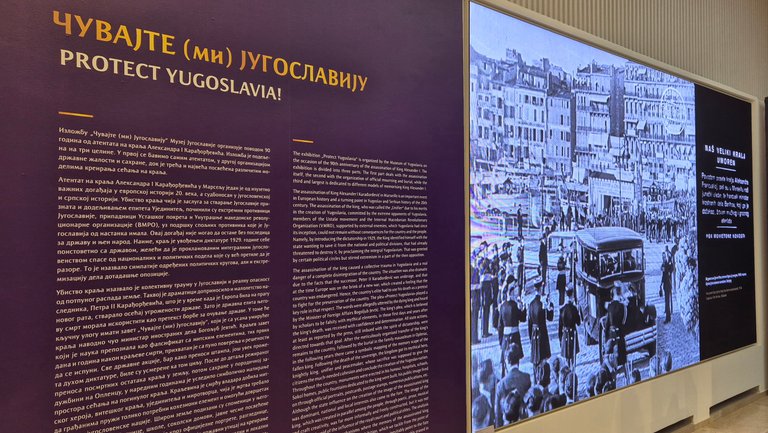

In the hall where our visit begins, in addition to that large poster, video wall and description of the exhibition, there are several props from the filming of the series about King Alexander.
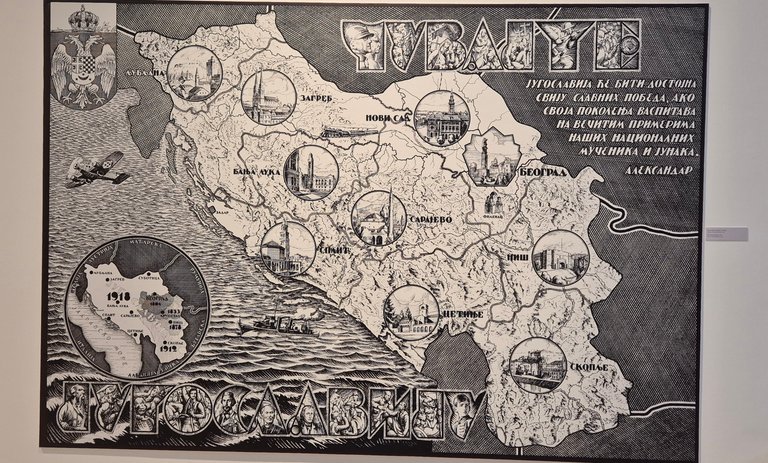
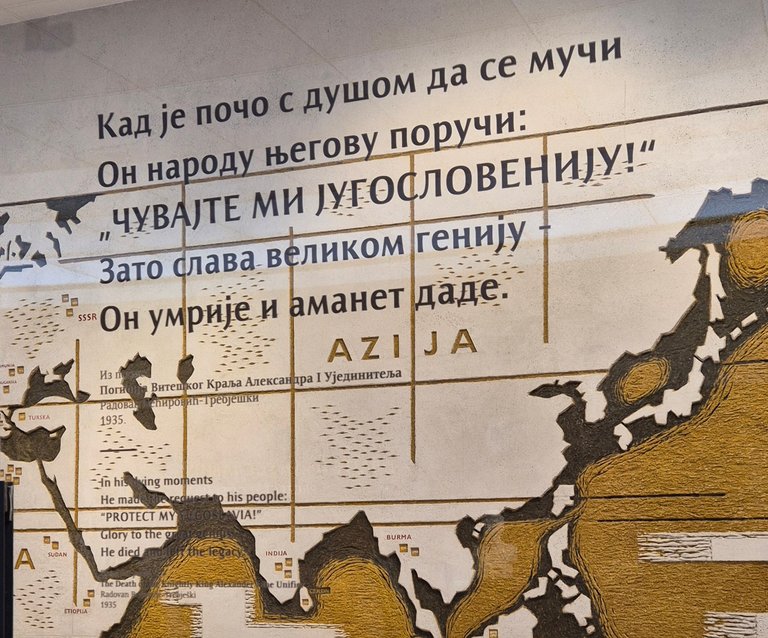
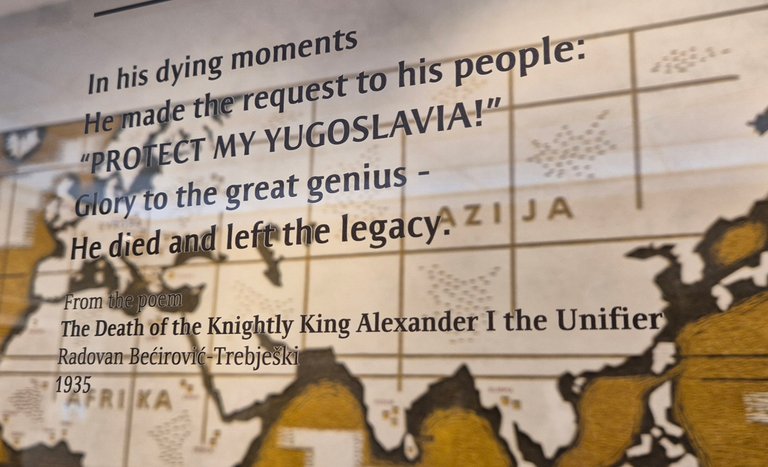
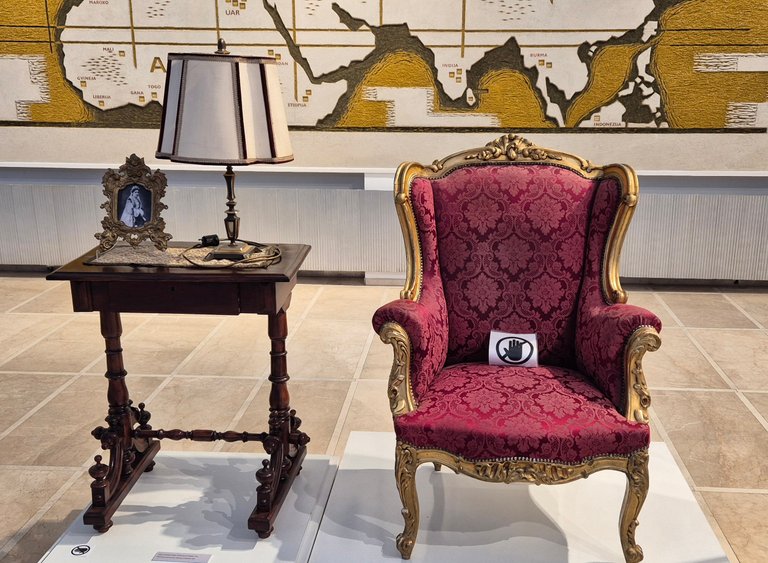

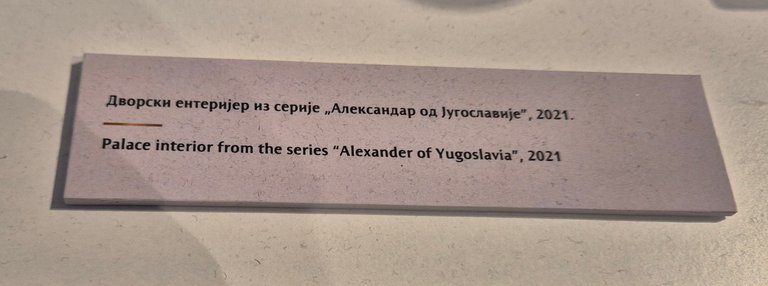
There is a large world map, as well as glass walls with parts of the lyrics of some songs.
In the first part of the exhibition, in a large room, exhibits related to the details and act of assassination were placed.
In the assassination, in addition to King Alexander, the French Prime Minister, Louis Barto, who was King Alexander's host, also died.
I have not seen the invitation, but it is probably similar to the one that King Alexander and Queen Mary sent to Mrs. George for a reception in Paris just a month before the events in Marseille.
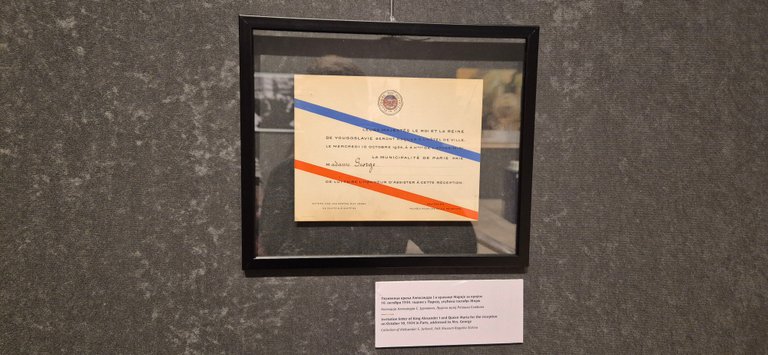
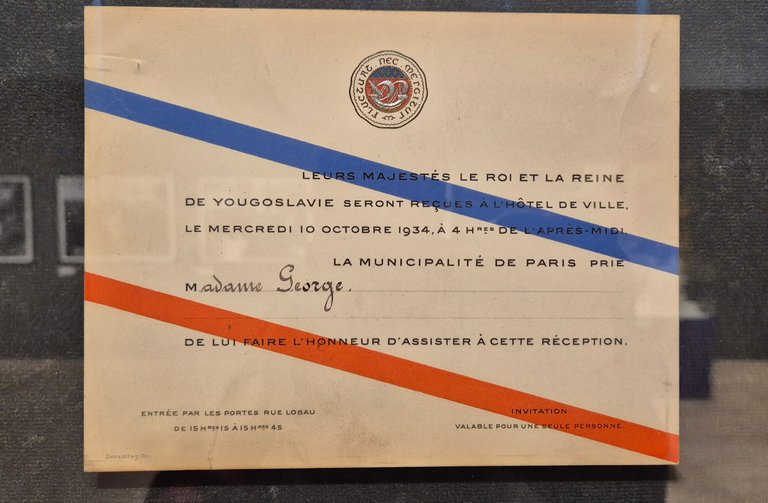
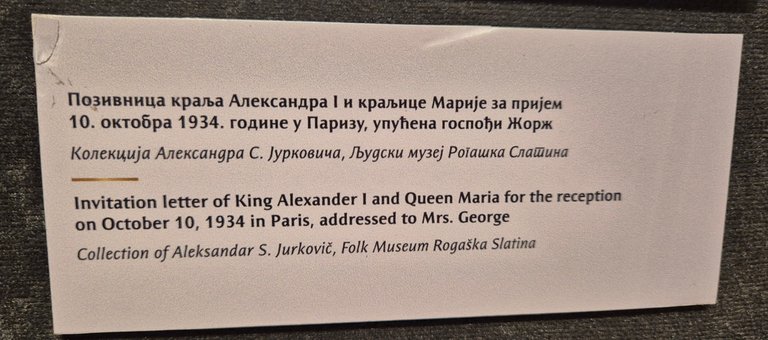
When the assassination happened, information moved slowly, and the public was informed only through newspapers and the loud reading of proclamations in the squares.
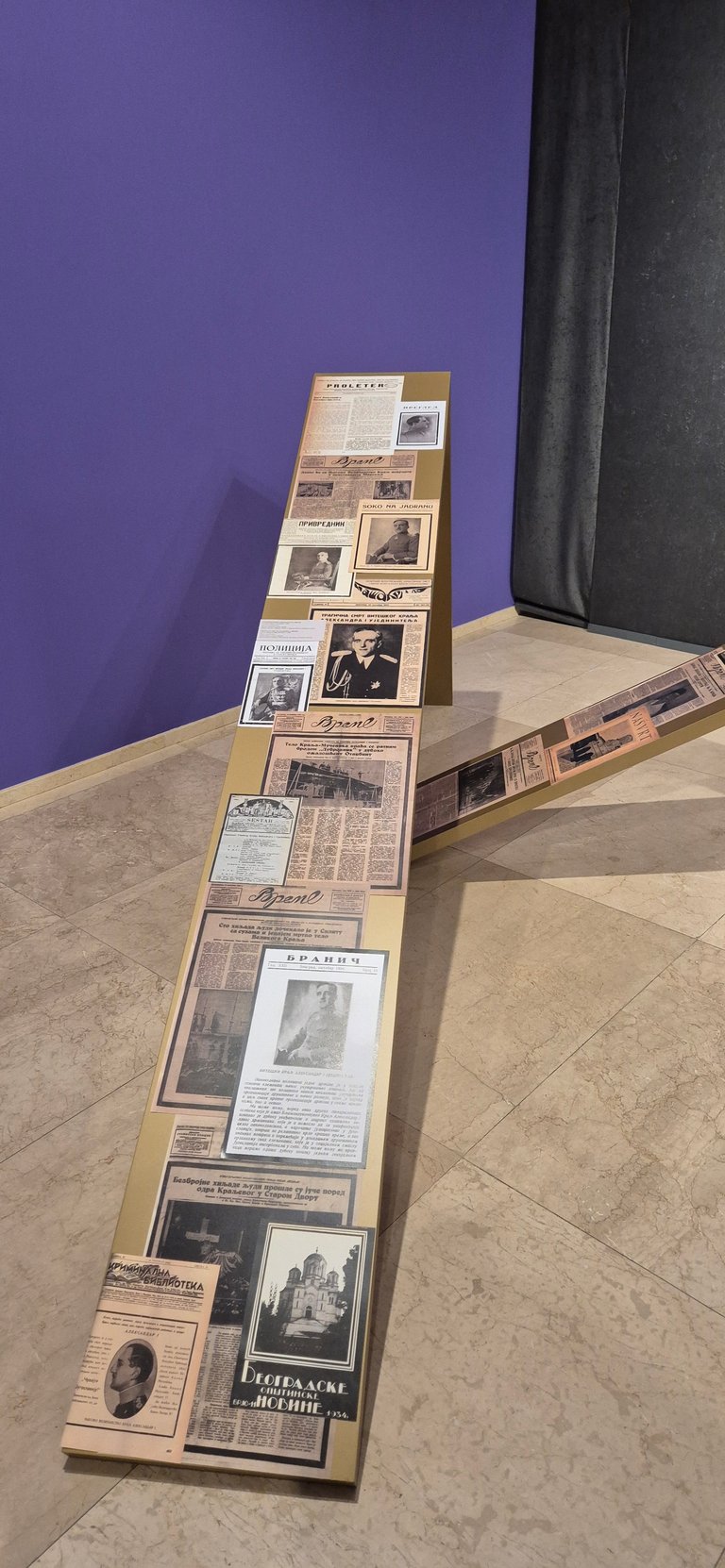


This is an example of a newsletter that informed the public about the death of the King.
At that moment, the world was afraid of the reaction of the Yugoslavs. Lest they start a war because of the murder of their King, and for that reason, spreading information was very careful.
Also interesting is the display of exhibits with newspapers that reported on the assassination.
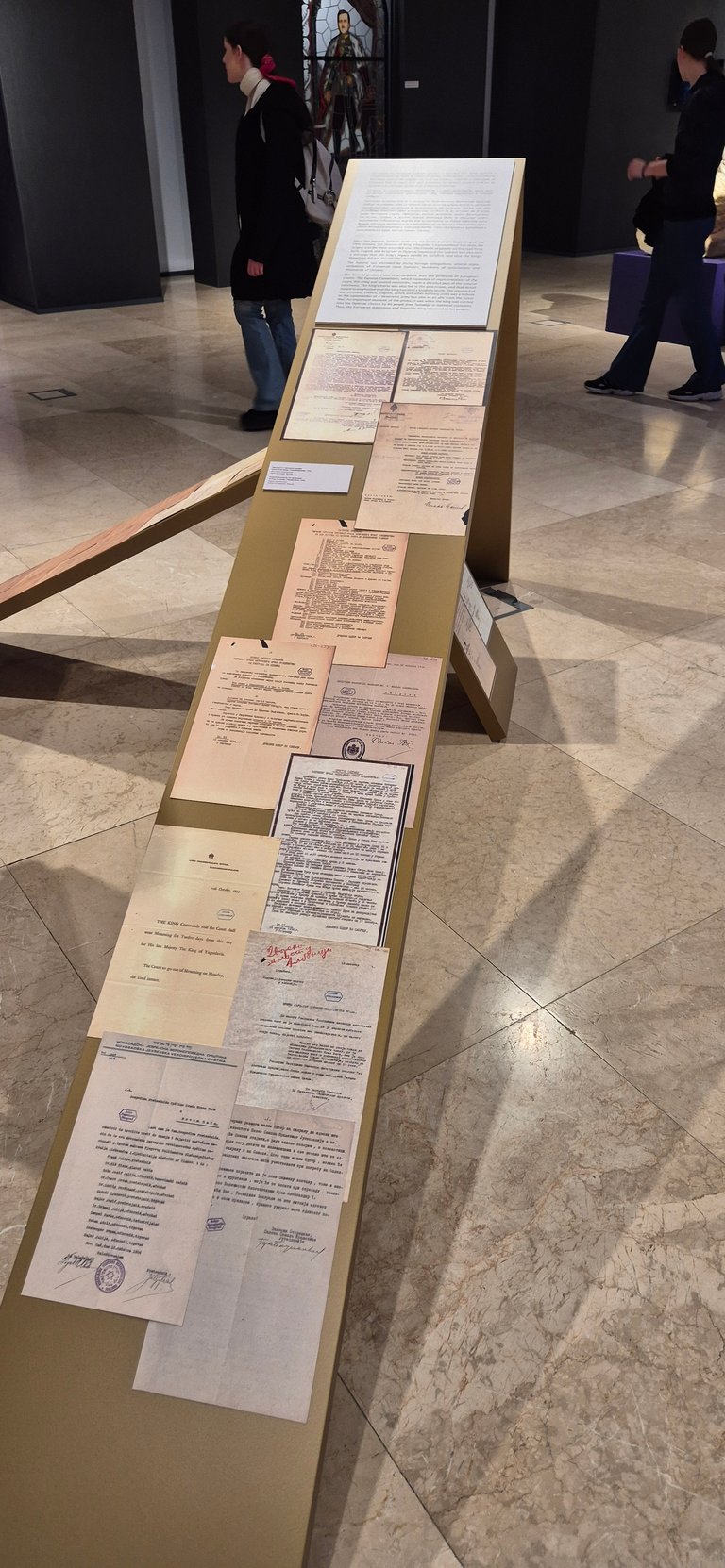
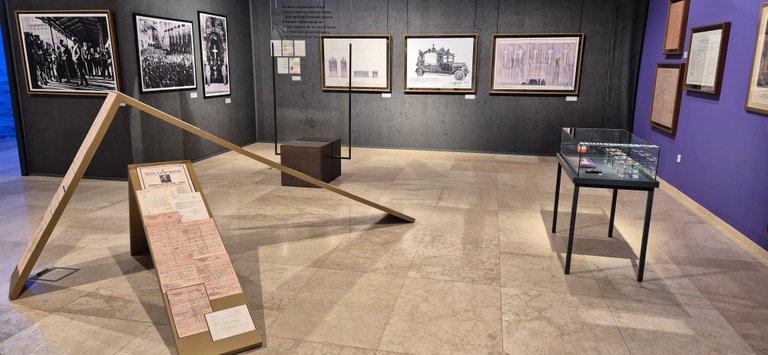
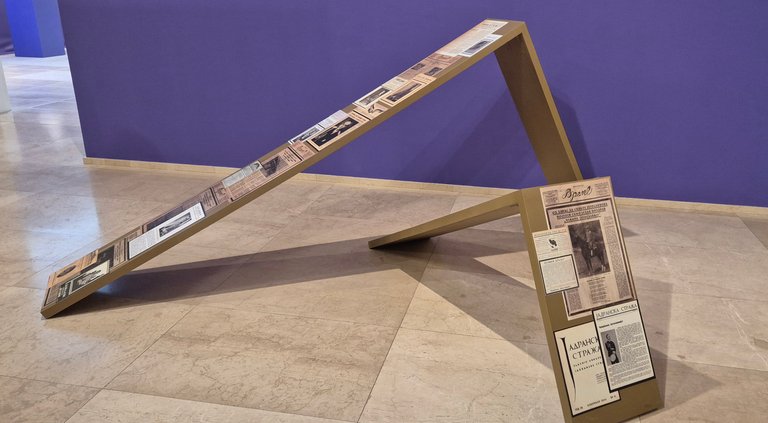
After the assassination of the king and the French prime minister, posthumous plaster casts of their faces were taken, for the later creation of sculptures that are kept together in a museum in Marseille.
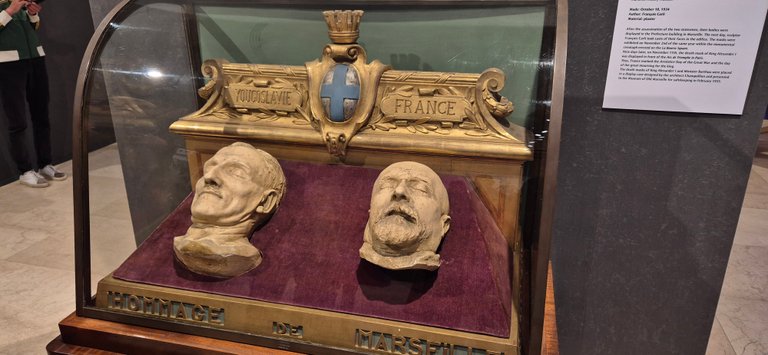
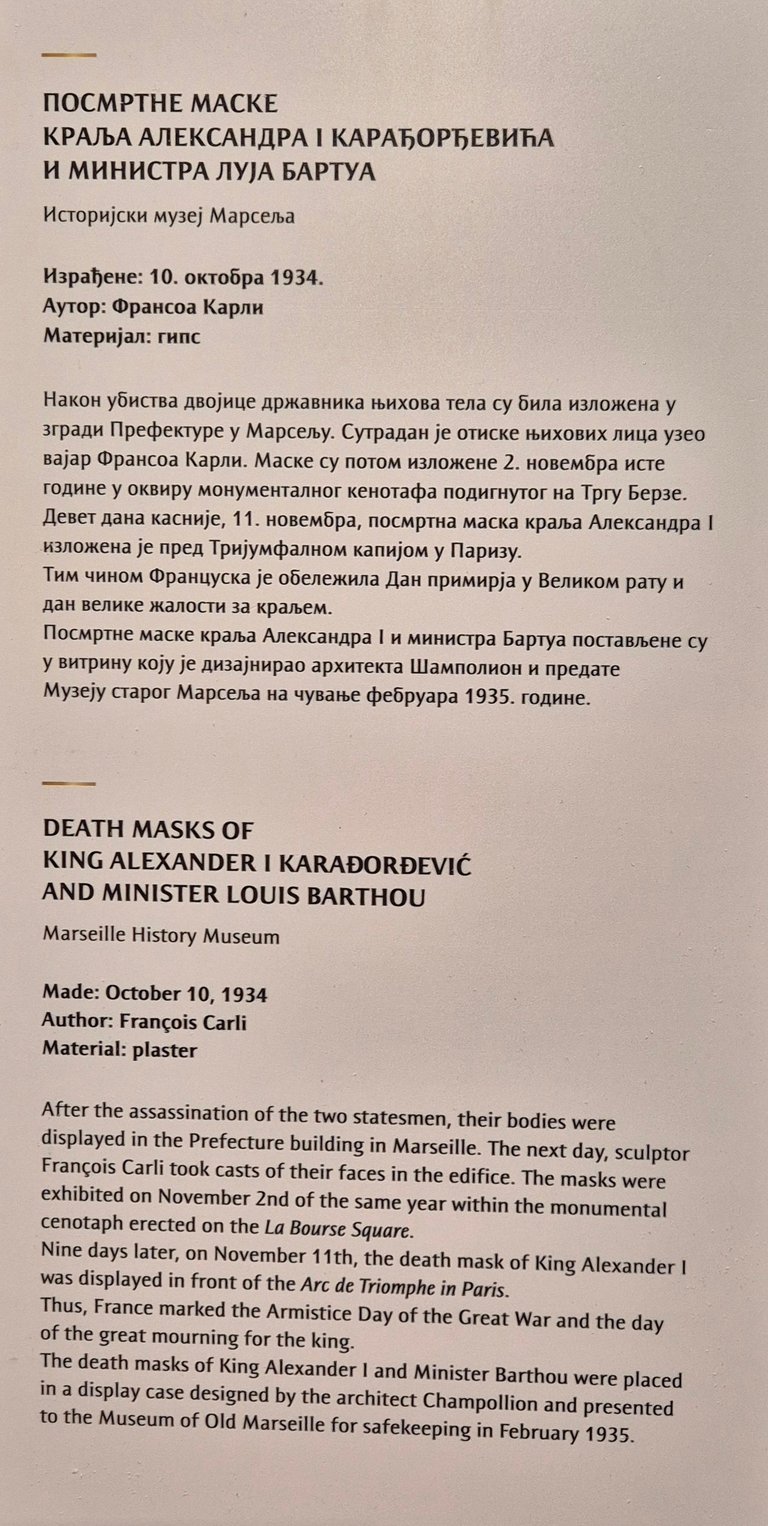
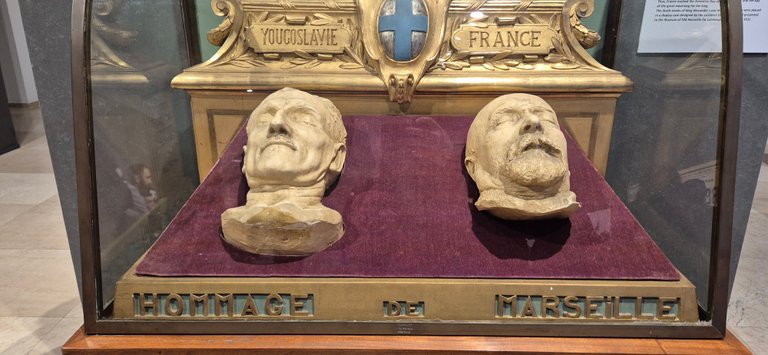
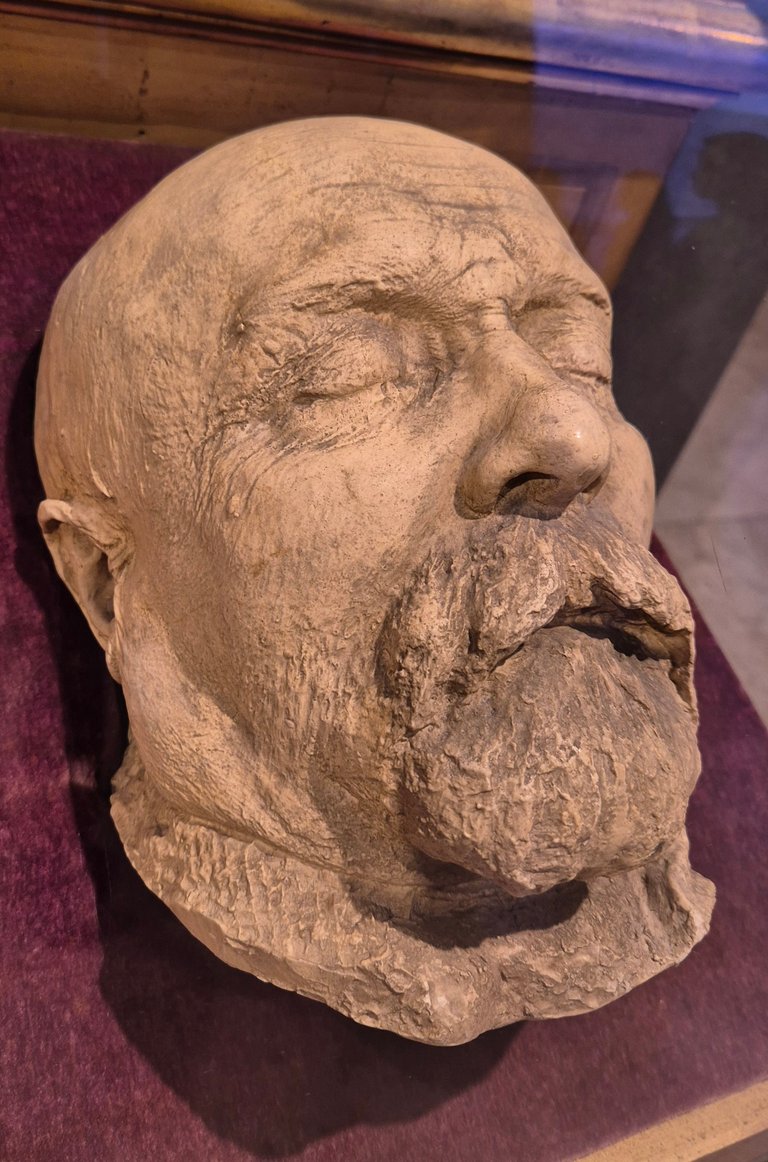
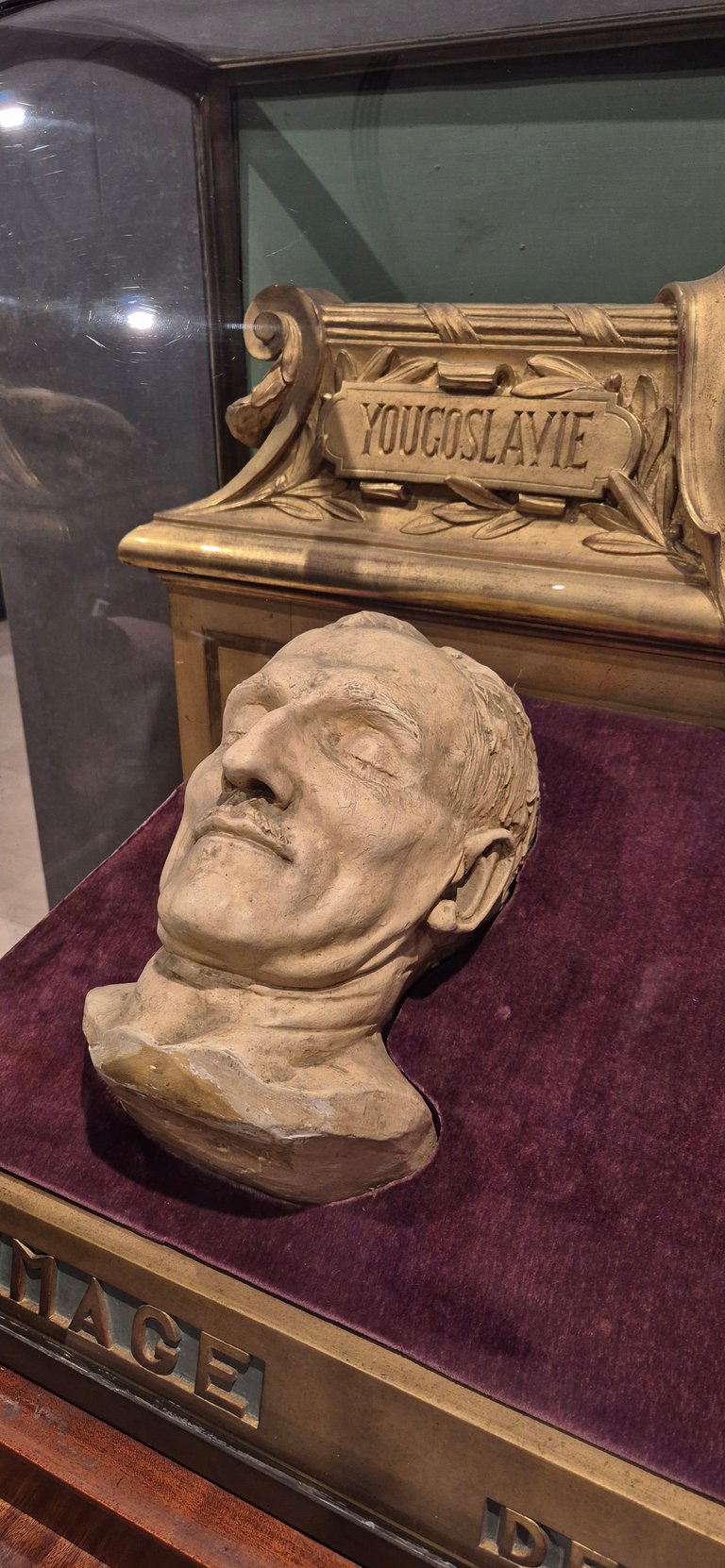
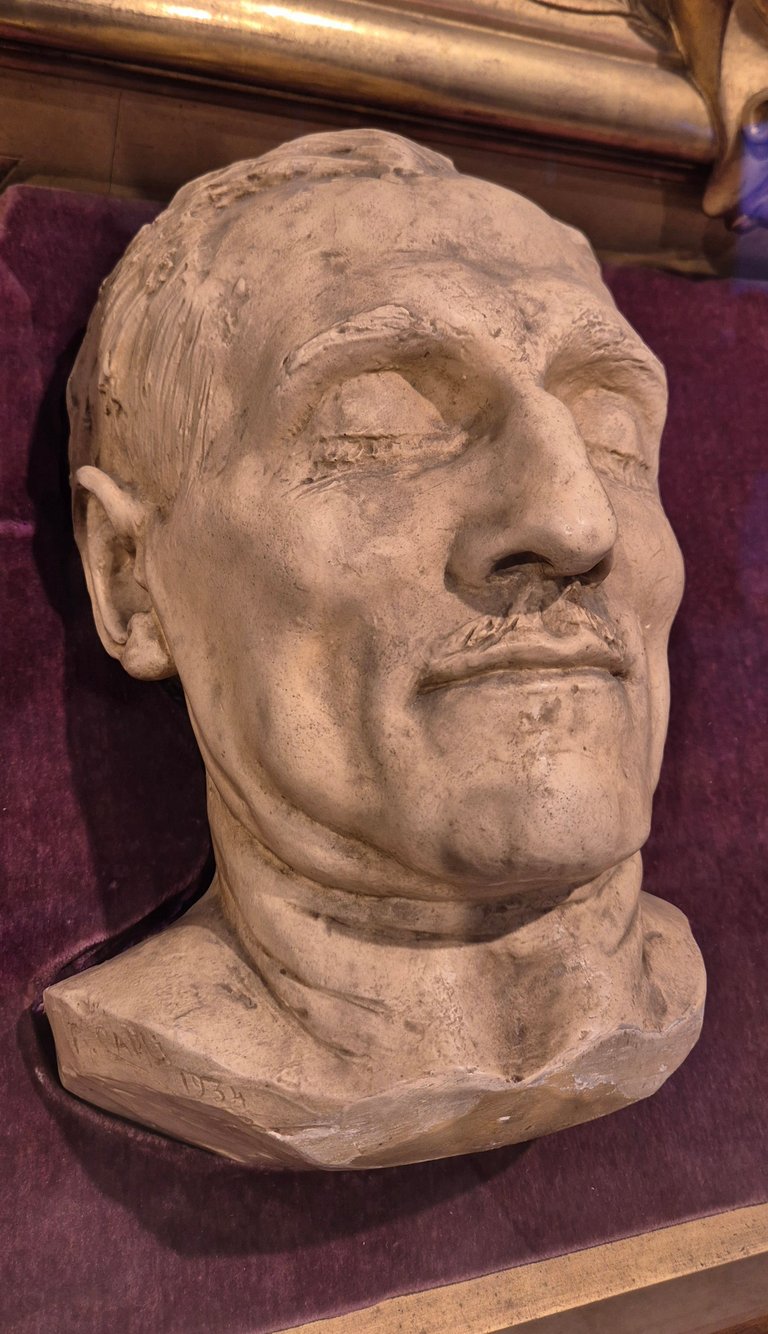
An interesting fact is that many sculptures of the prematurely martyred king were later made based on the samples of those masks.

As the host country where a terrible crime took place, France acted responsibly towards this event, commemorating the event with various monuments and sculptures.
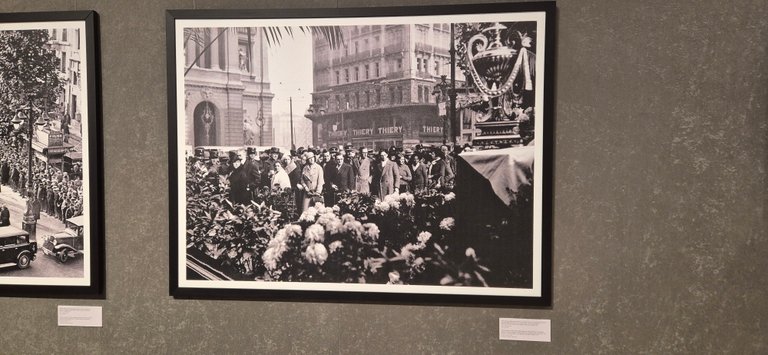
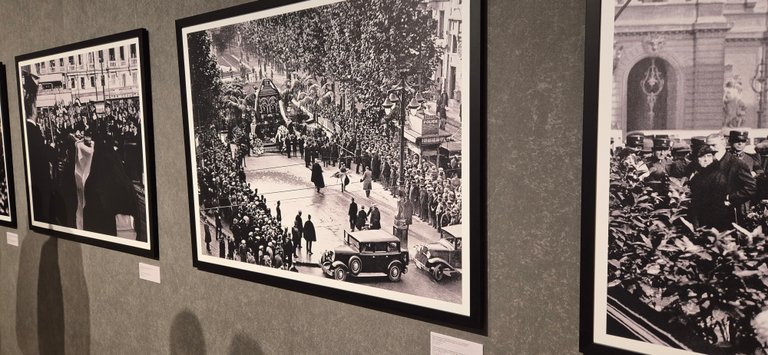
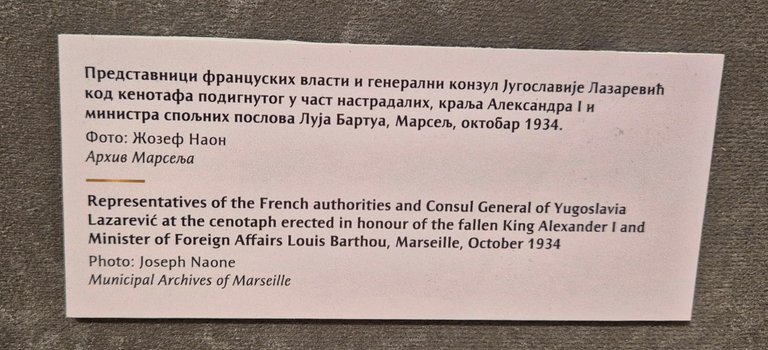
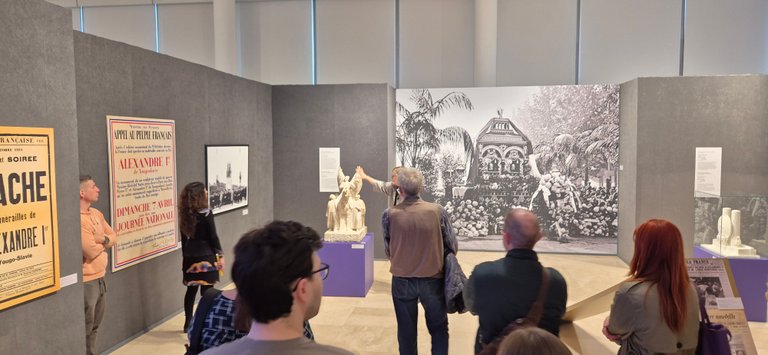


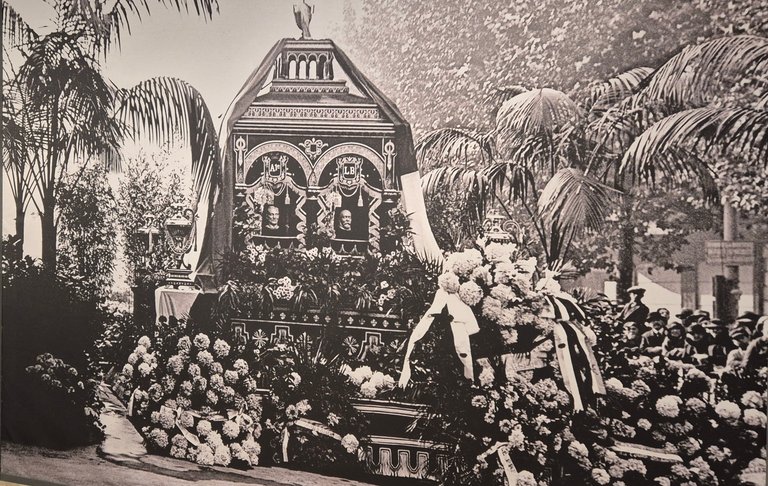


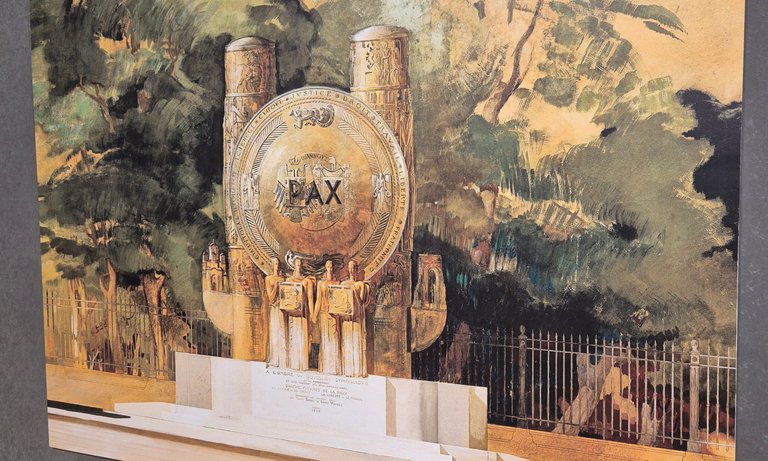
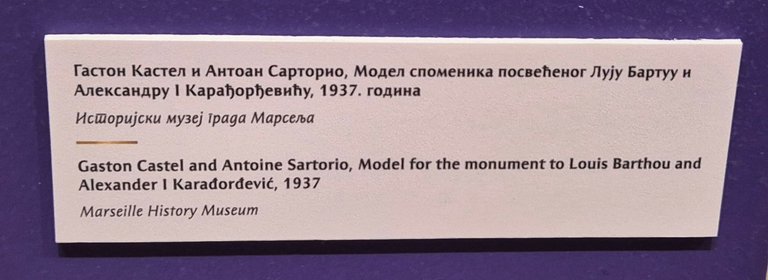
At the same time, they gave away tribute to their Prime Minister and the Serbian King.

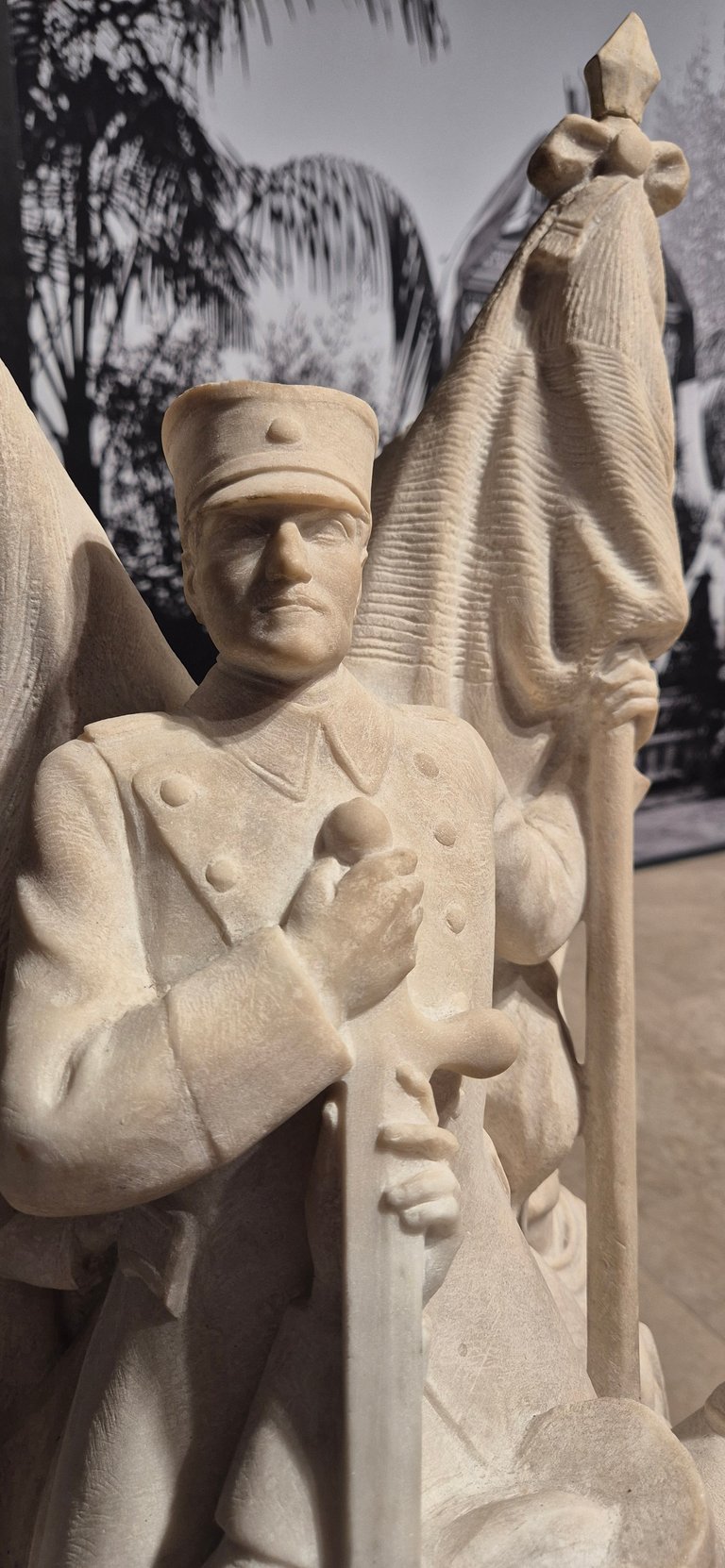
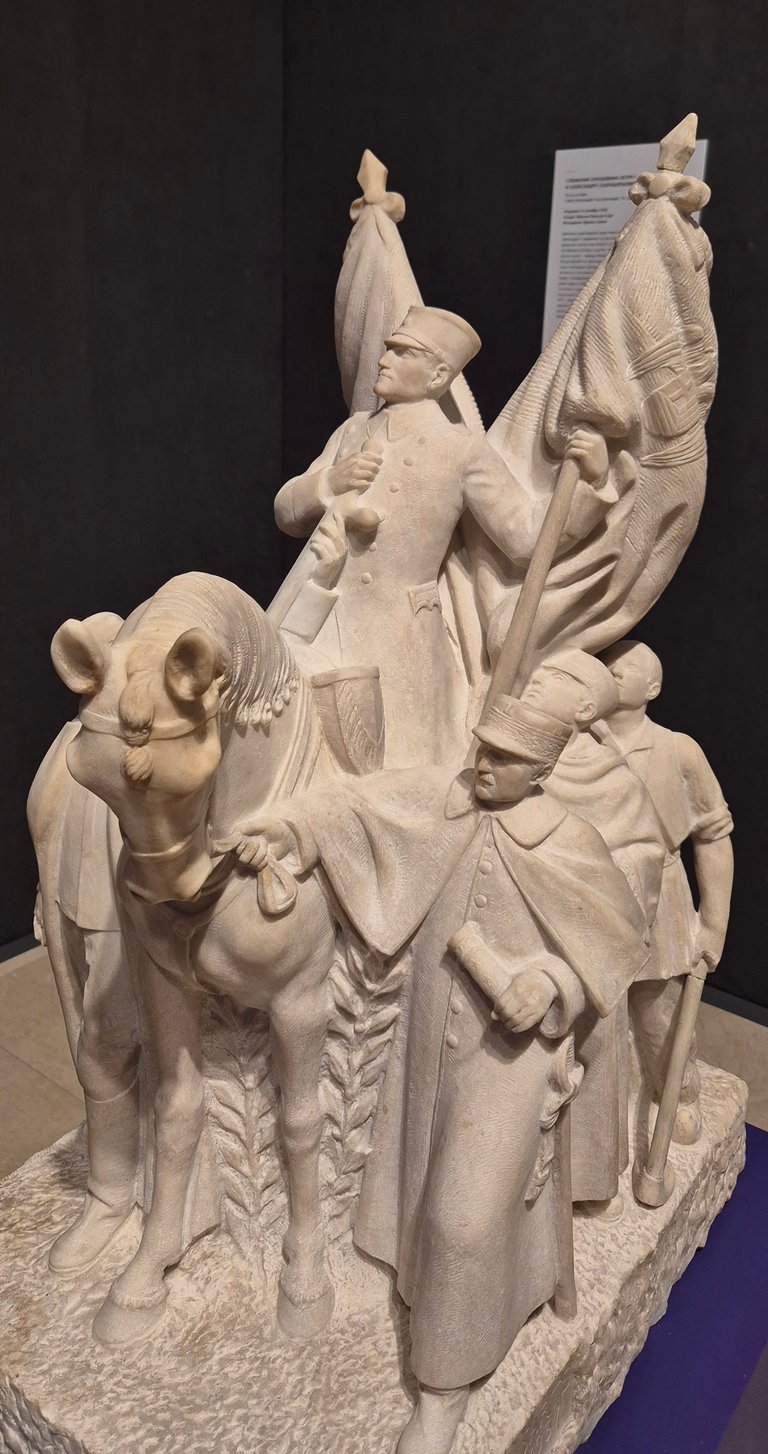
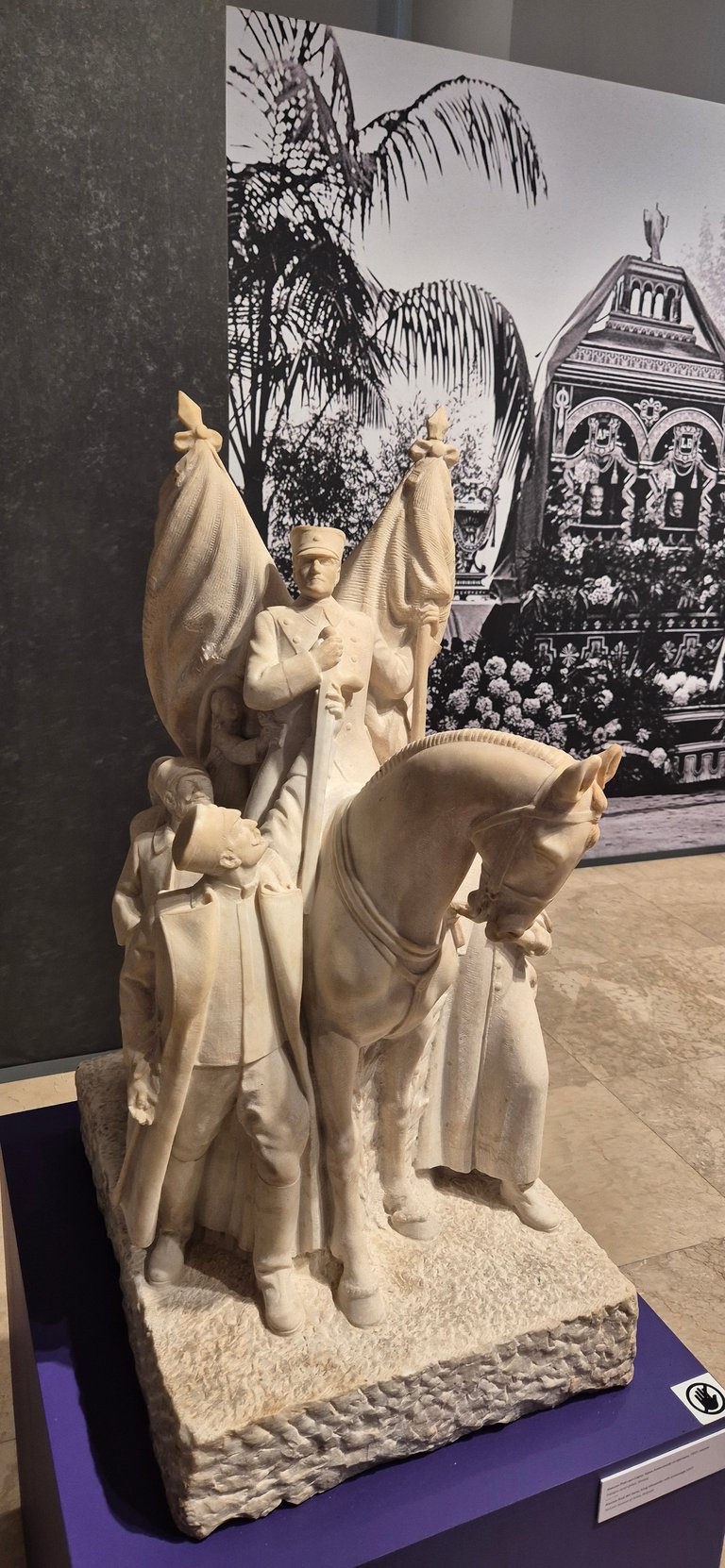
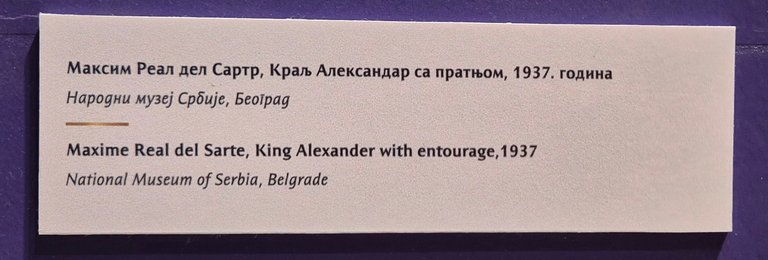
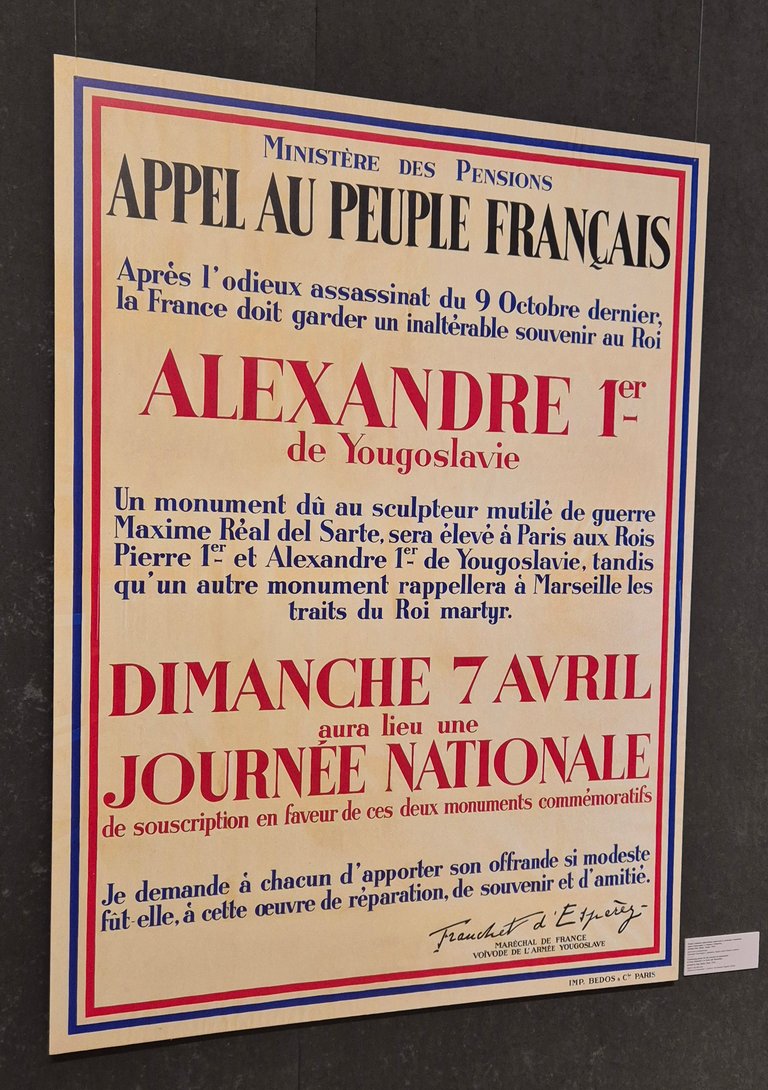
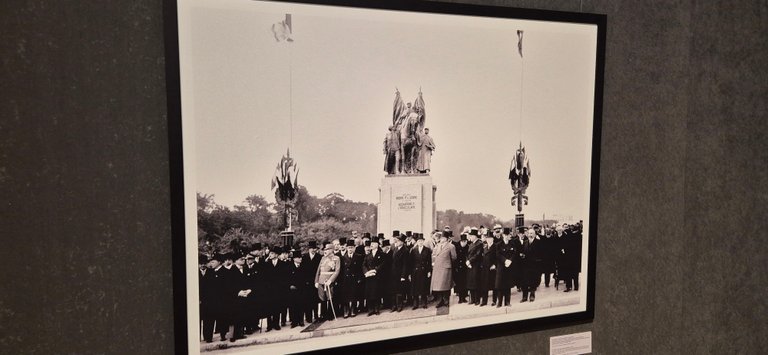
An interesting installation is the model of the destroyer Dubrovnik(with a large video wall of the turbulent sea in the background), which was used to transport the remains of King Alexander to the Kingdom of Yugoslavia.
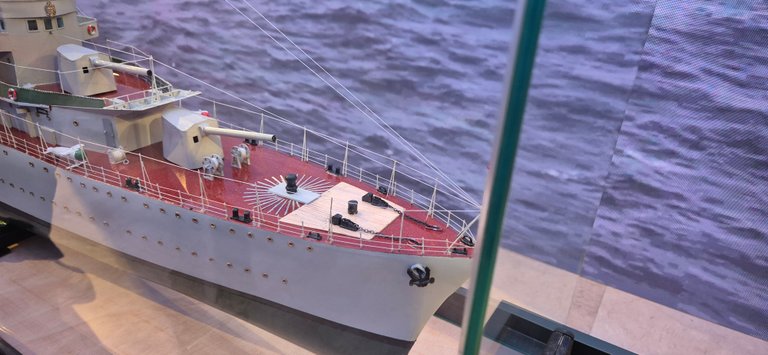
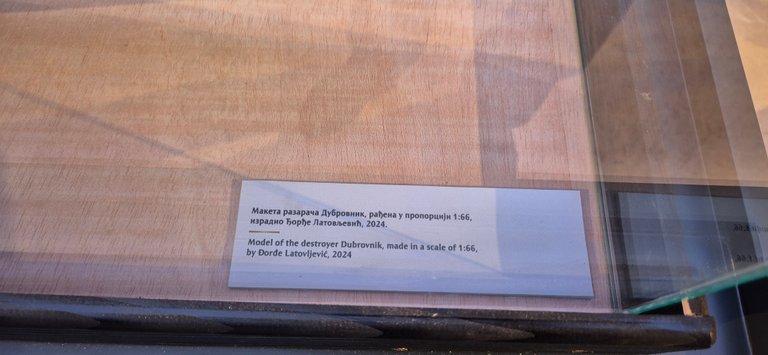
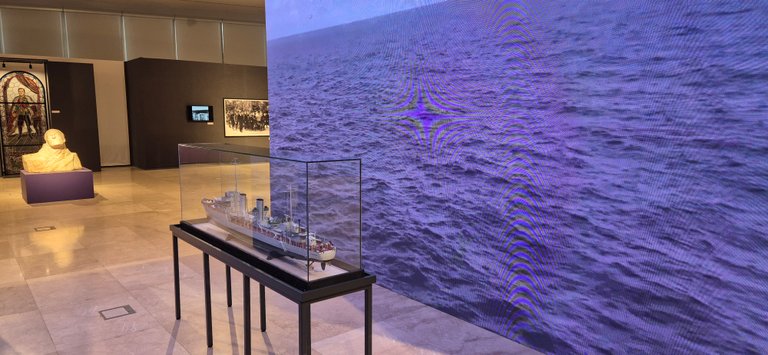
In the next room, there are exhibits related to the actual funeral ceremony of the king, as well as the same details of the funeral preparation.
The coffin with the remains was transported from town to town, in order to be buried in the mausoleum of the Karadjordjević dynasty, in Oplenac.

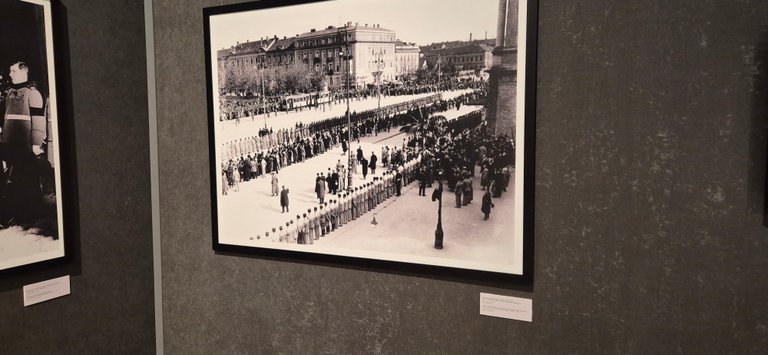
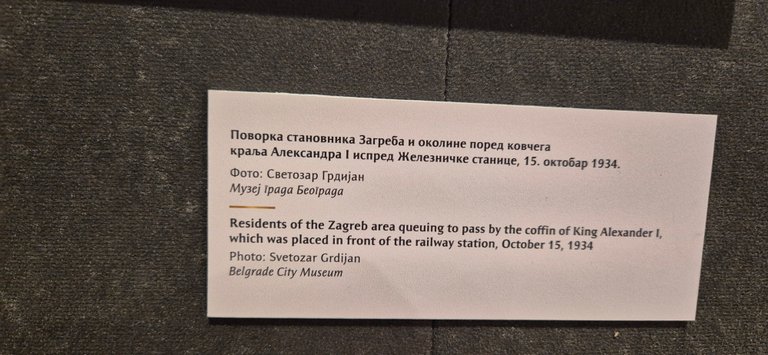
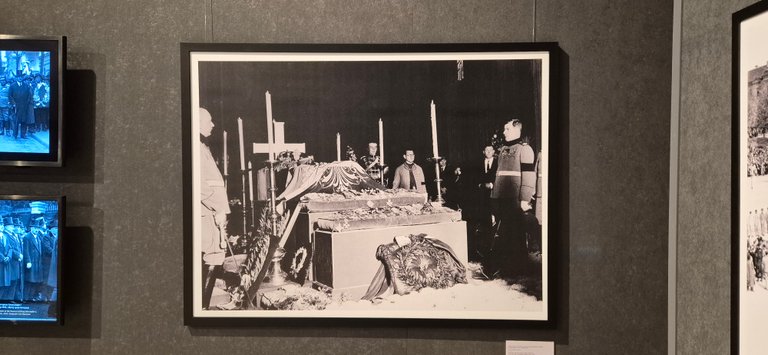
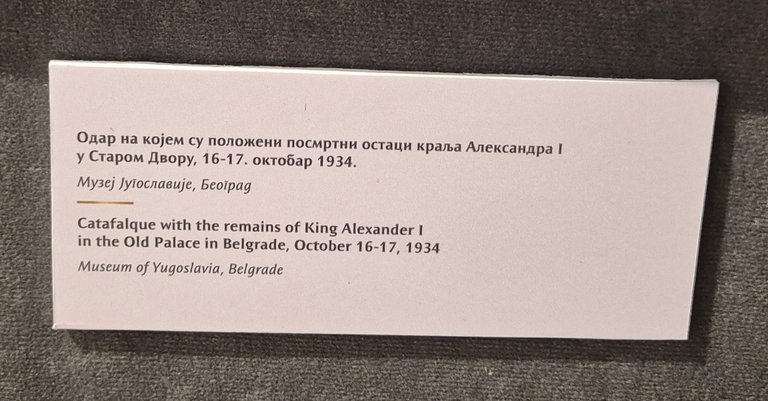
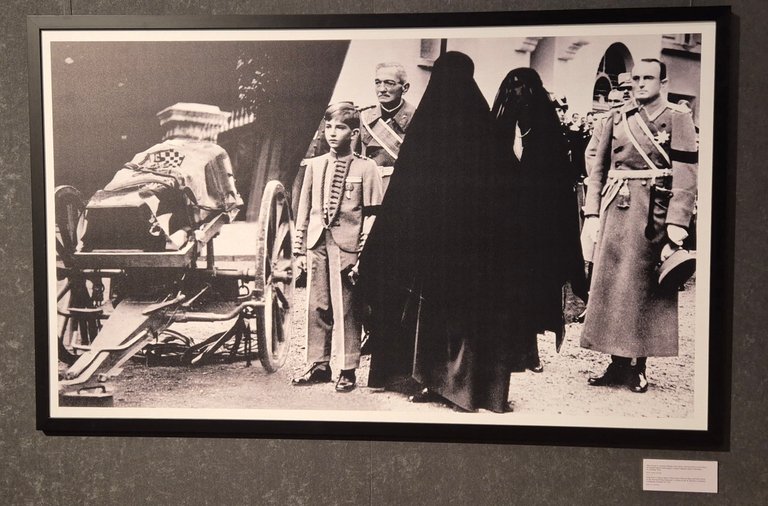
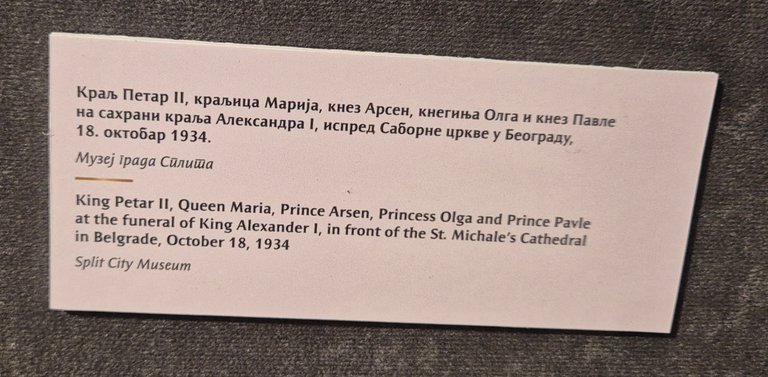
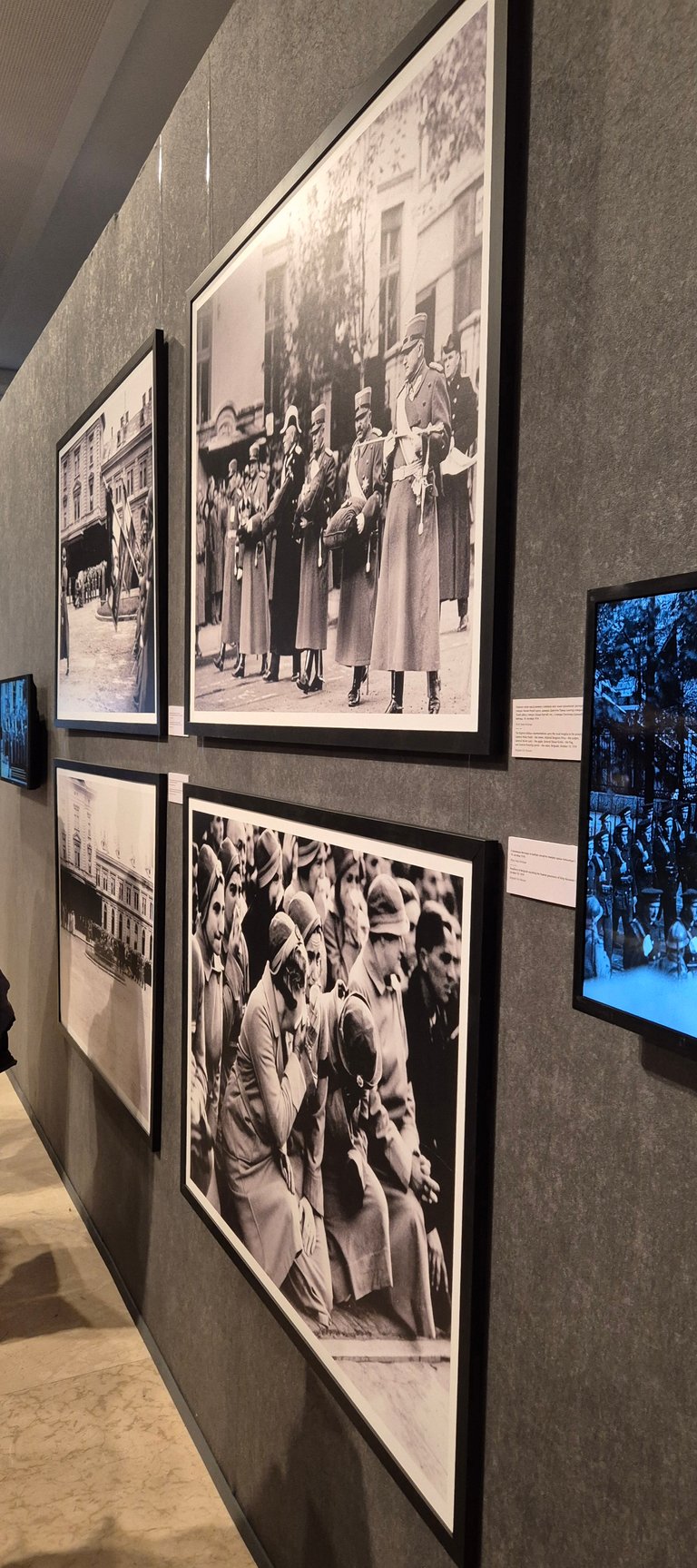
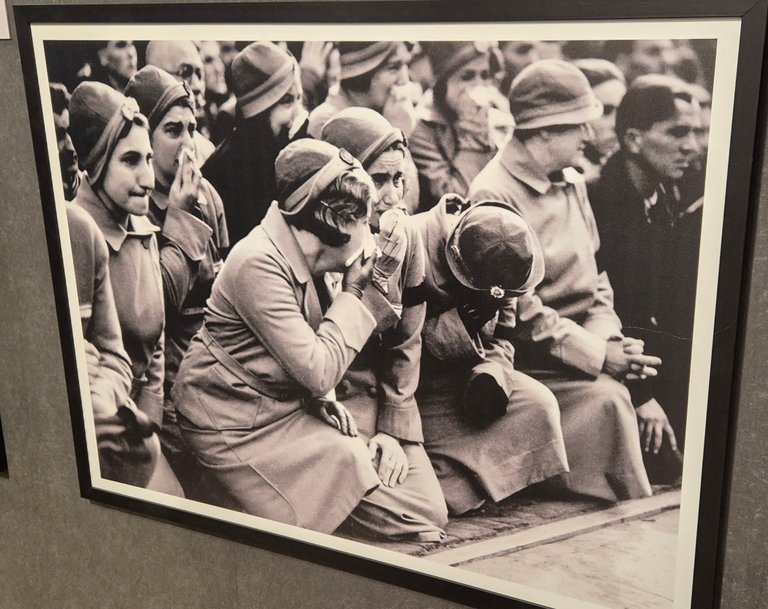
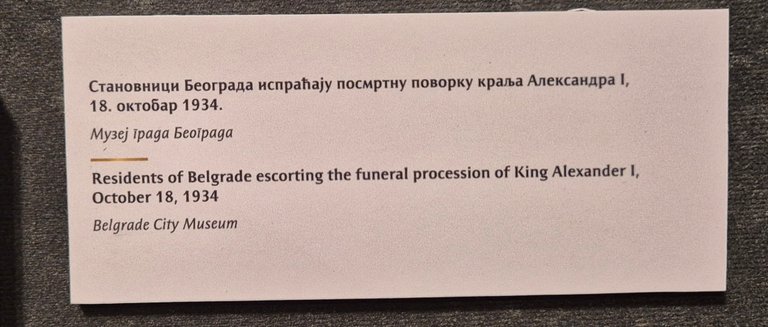
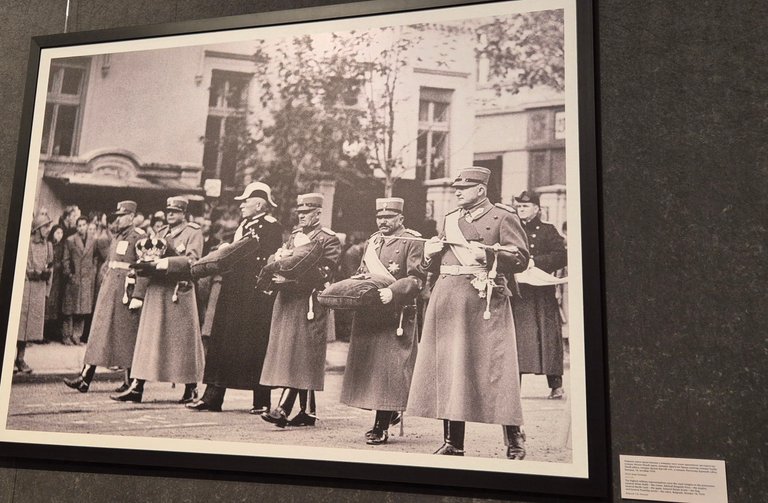
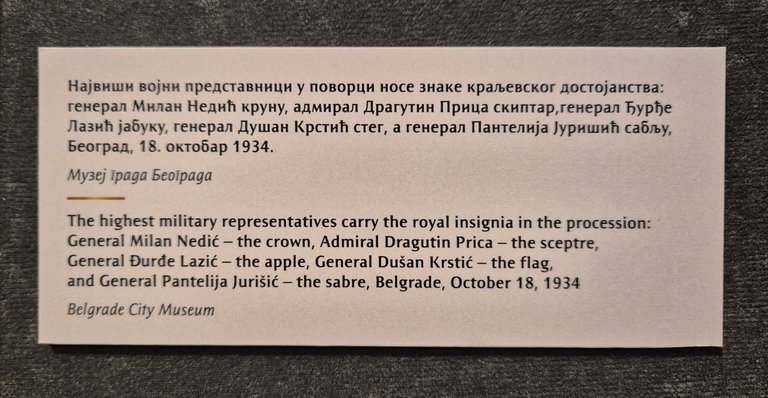
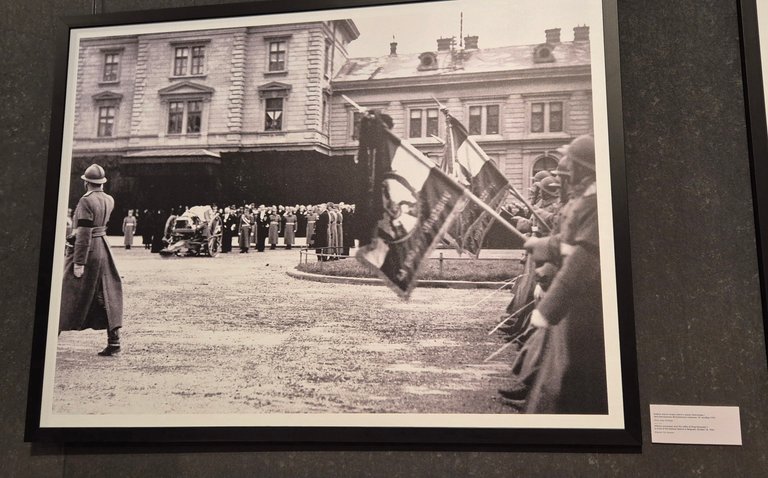

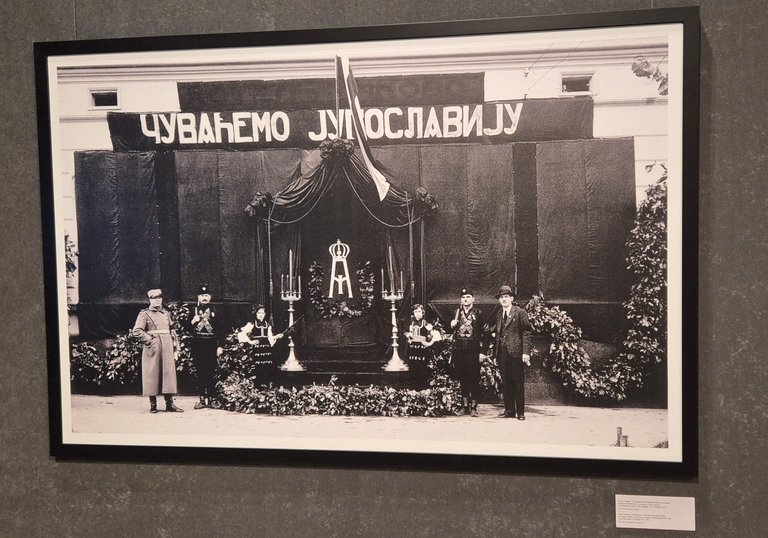

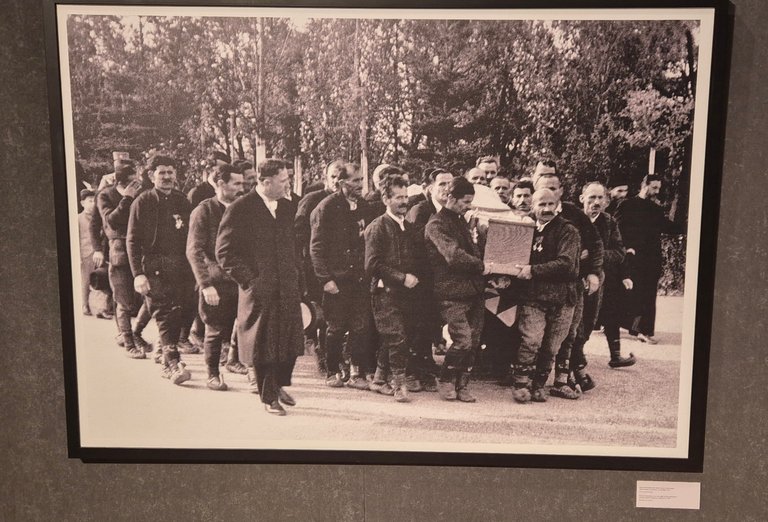
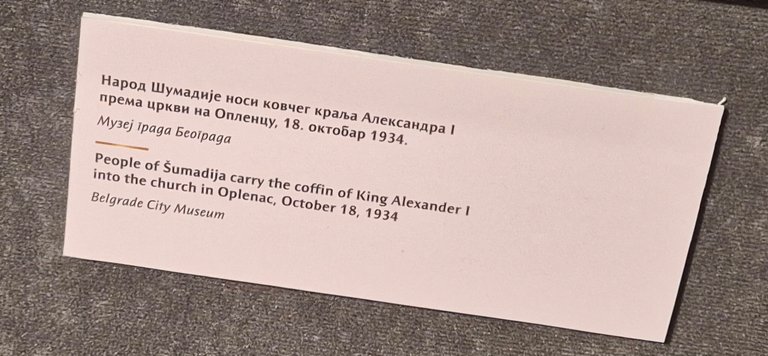
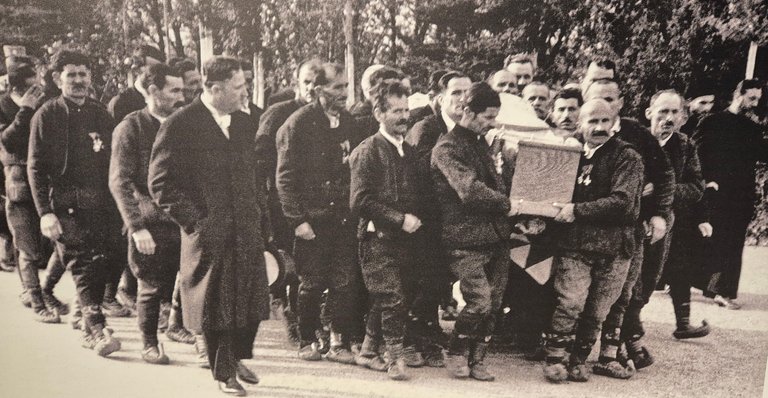
In this area, there are many photos from the funeral ceremony, on which you can recognize some buildings that still exist to this day.
Sculptures, stained glass windows, commemorative plaques, coins as well as some of the badges and badges from the king's collection, as well as some of his personal items, are displayed in this room.
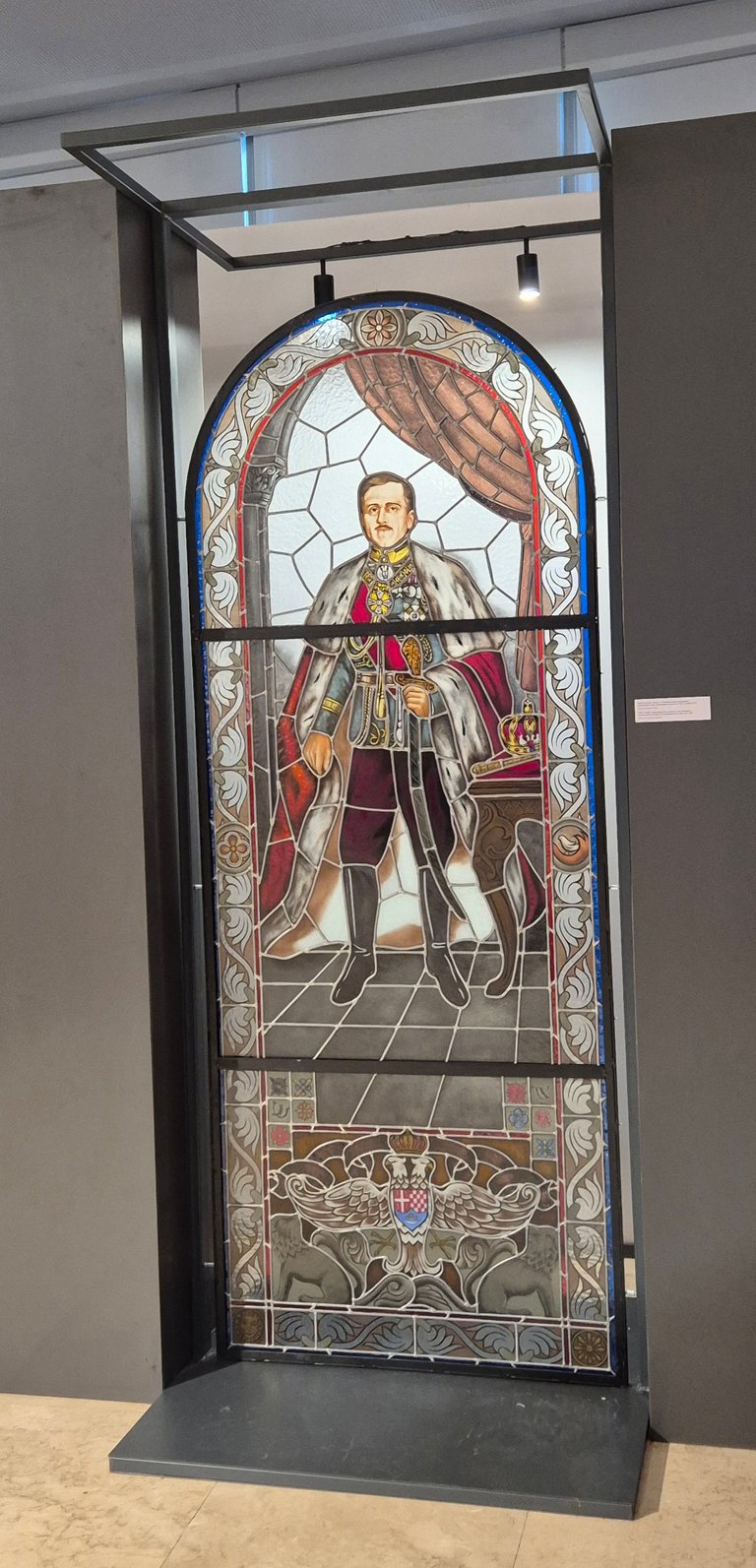
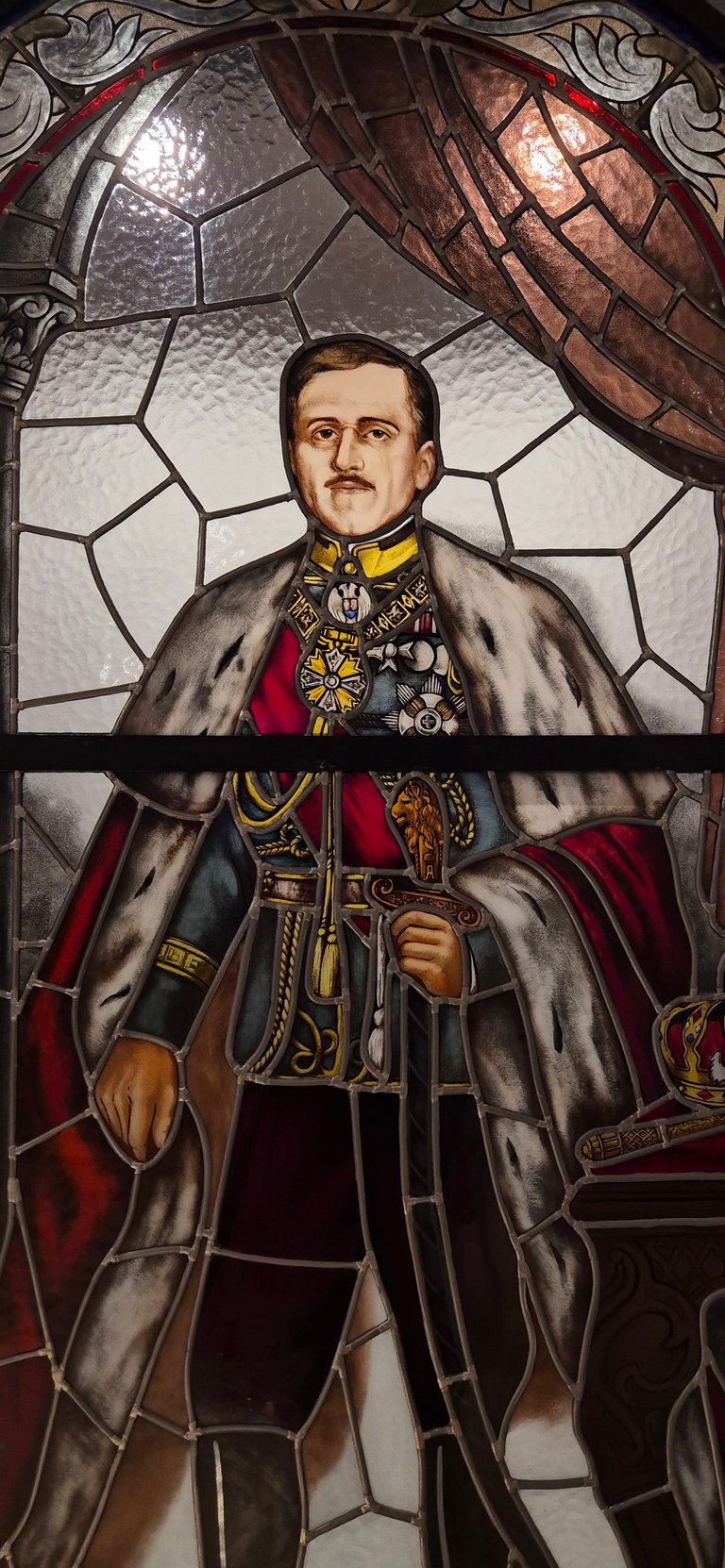
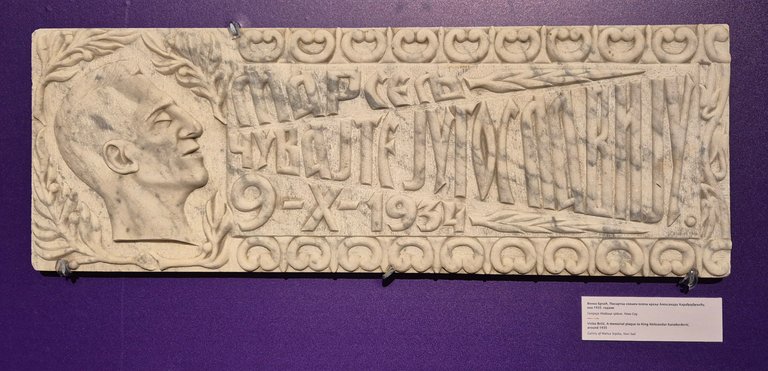
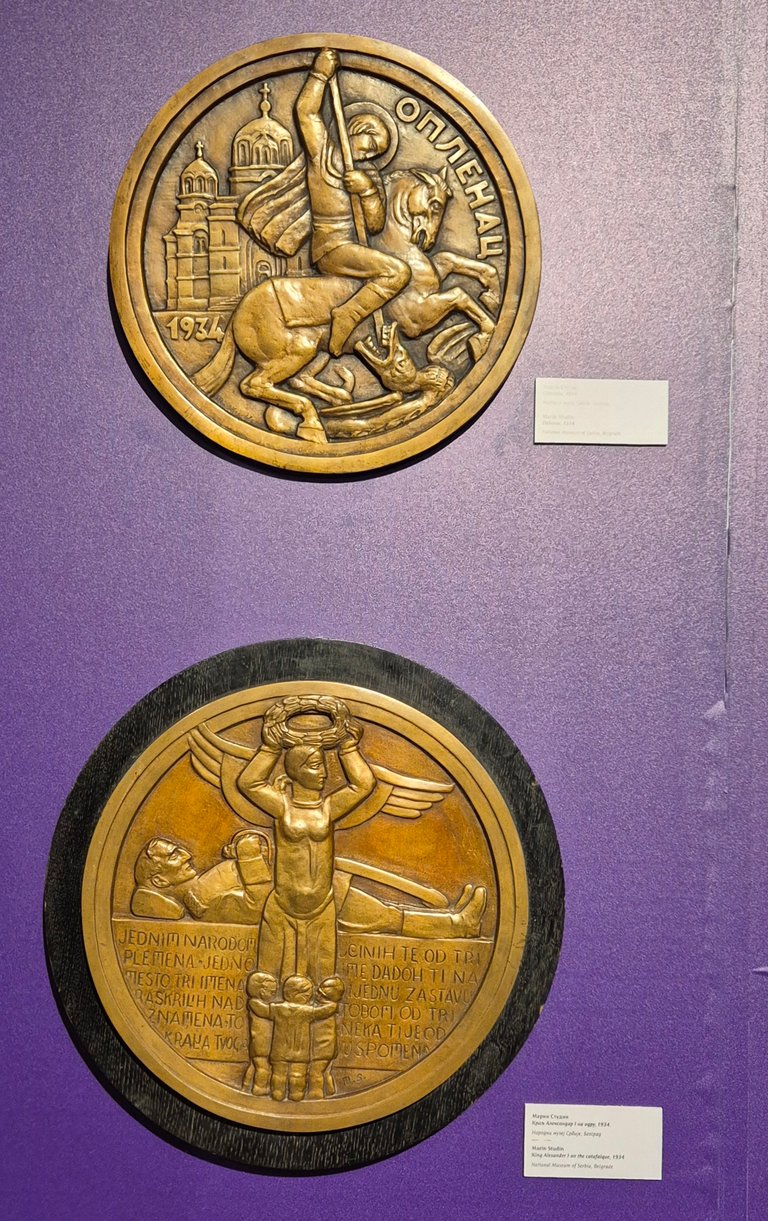
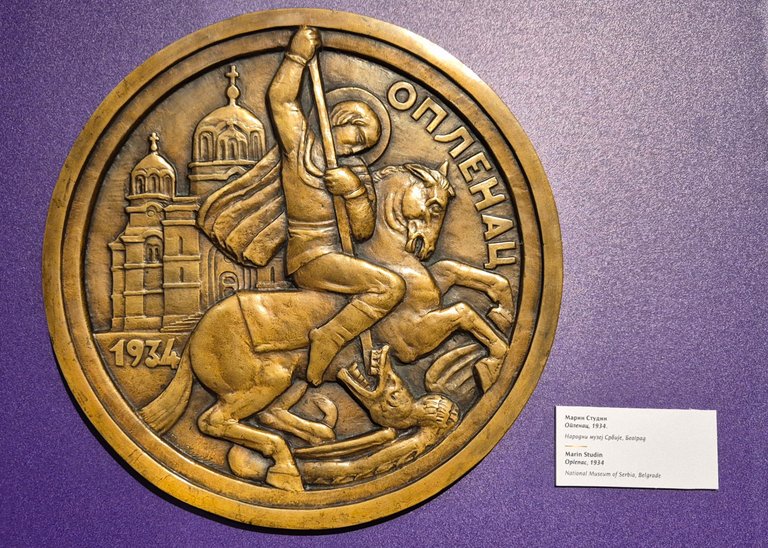

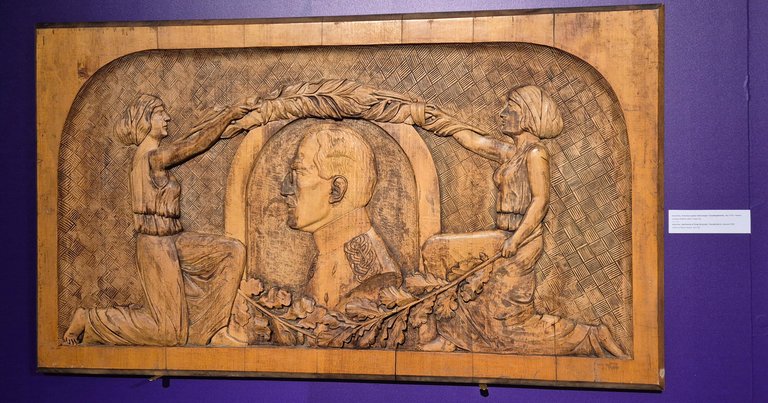
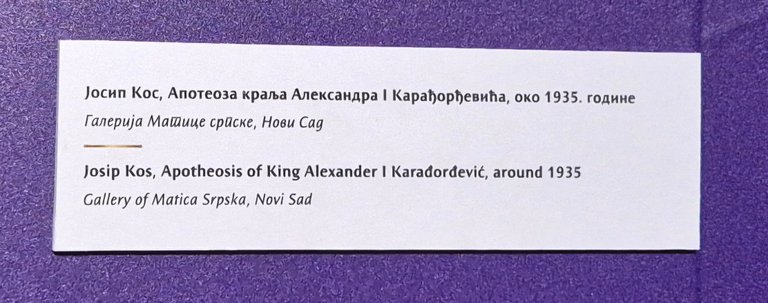

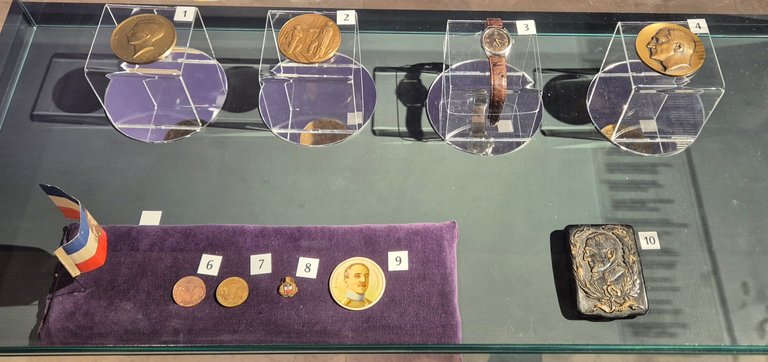
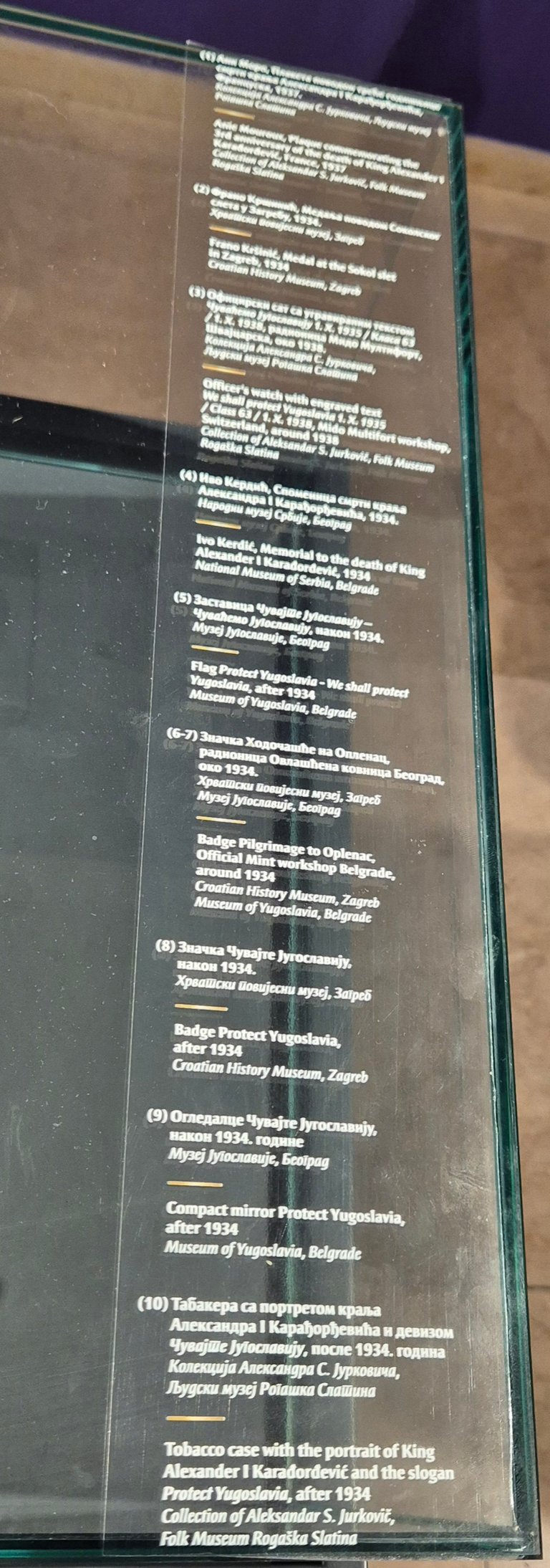

At the entrance to the next room, an interesting film was played on two screens.
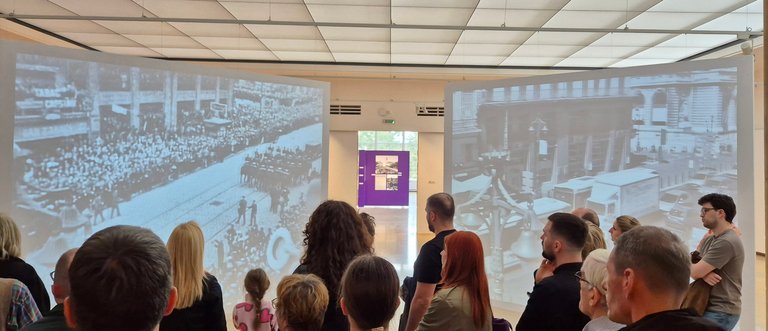
A short film from the same location in 1934 and from the beginning of the 21st century.
On one side, crowd, assassination and death, and on the other, crowd, walk and life.
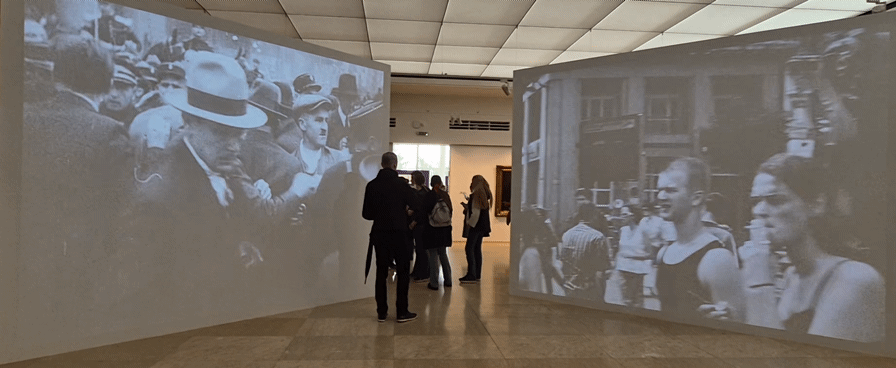

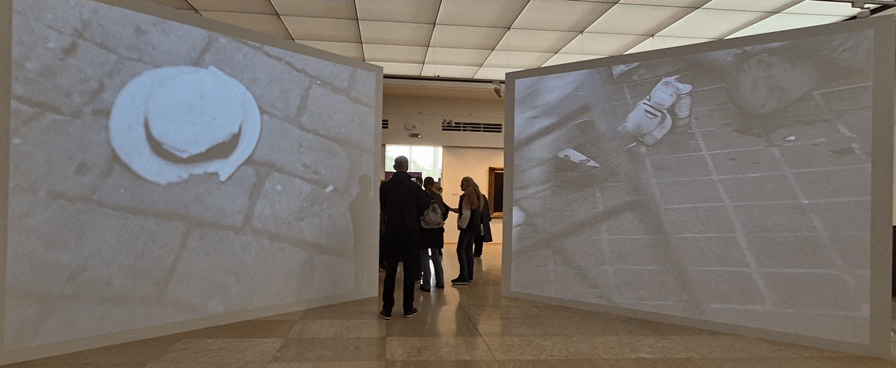
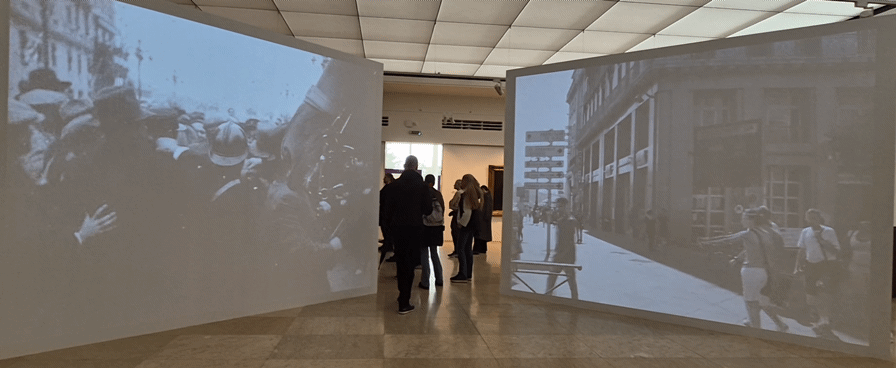
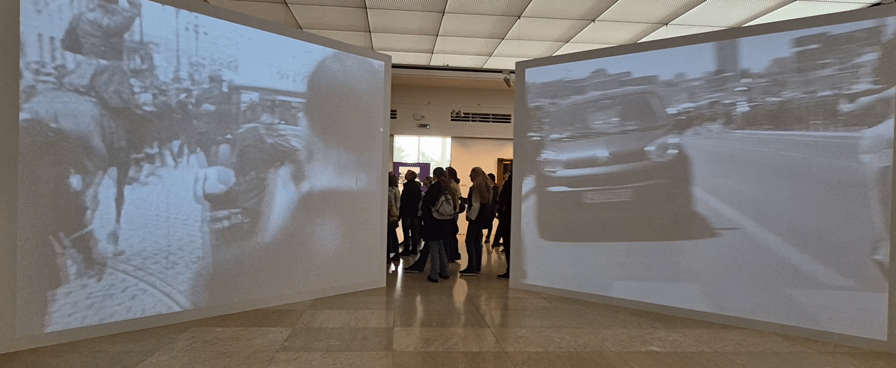
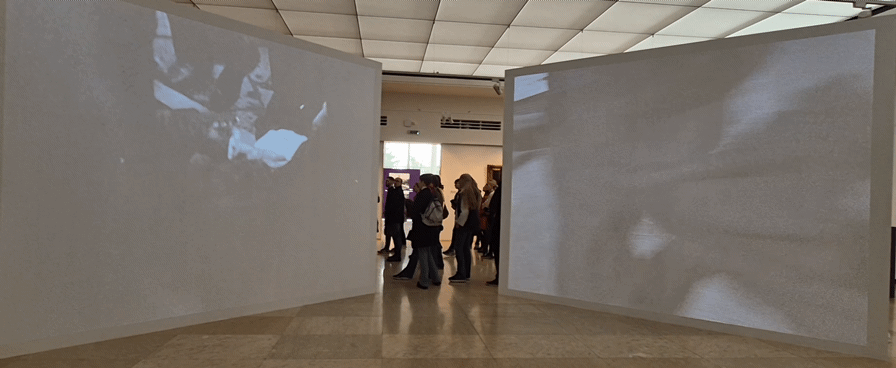
The same location, because the buildings and the street are recognizable, but a totally different plot.
Before entering the last room, on the wall are several royal portraits by our most famous painters as well as three busts. One plaster and two bronze...
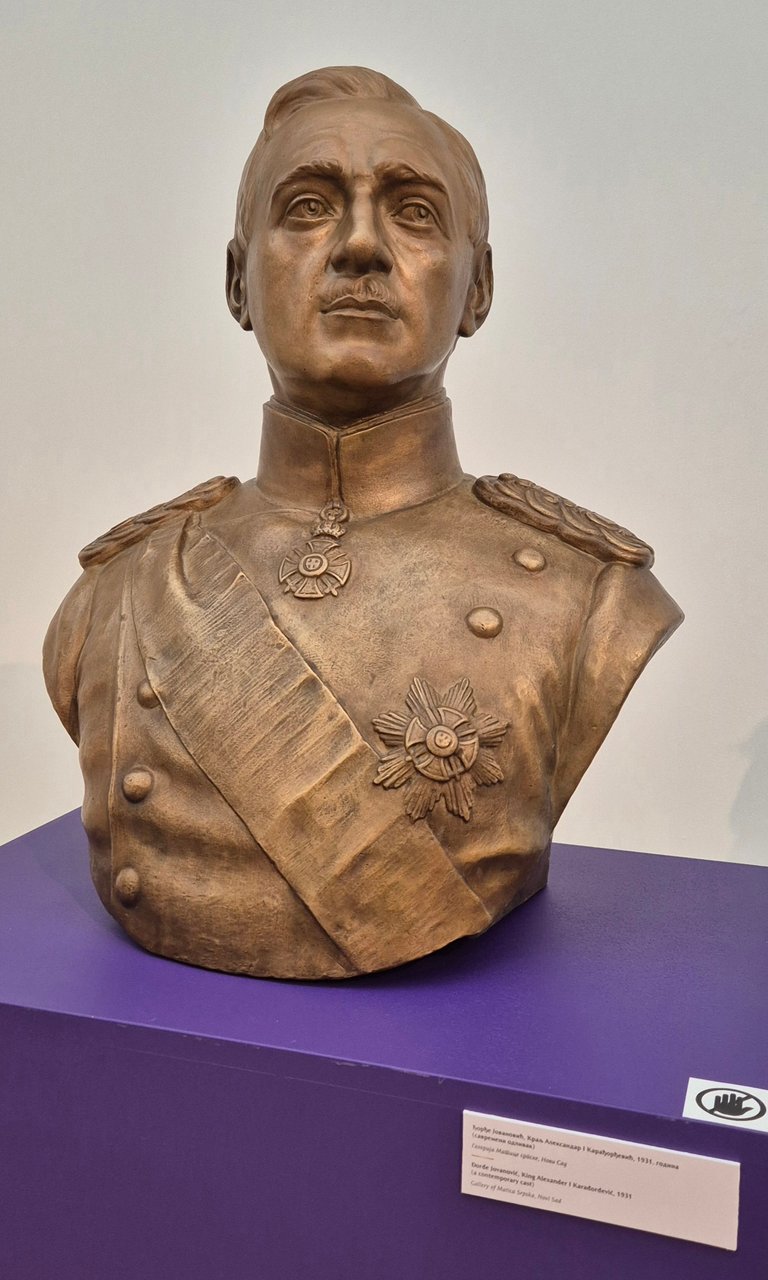
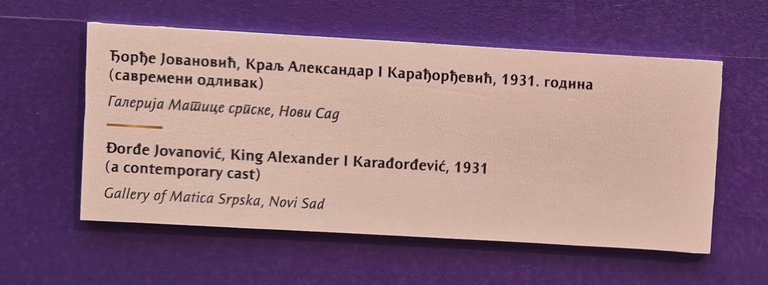


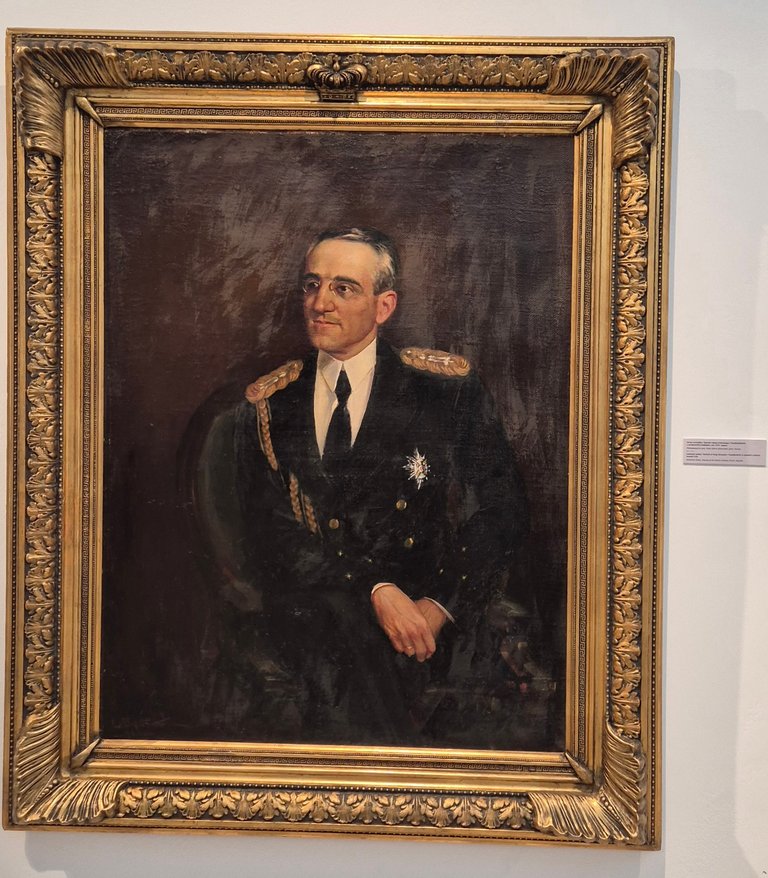

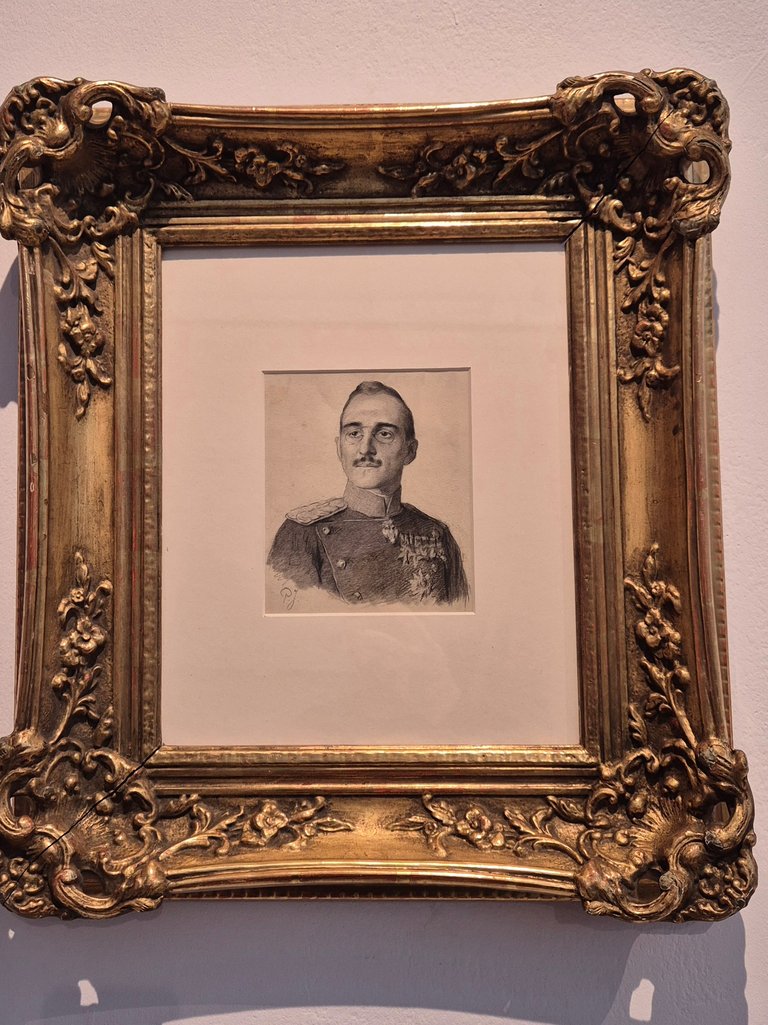
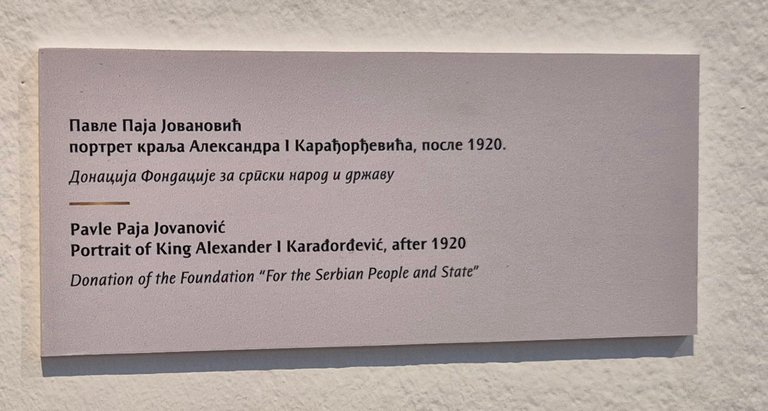


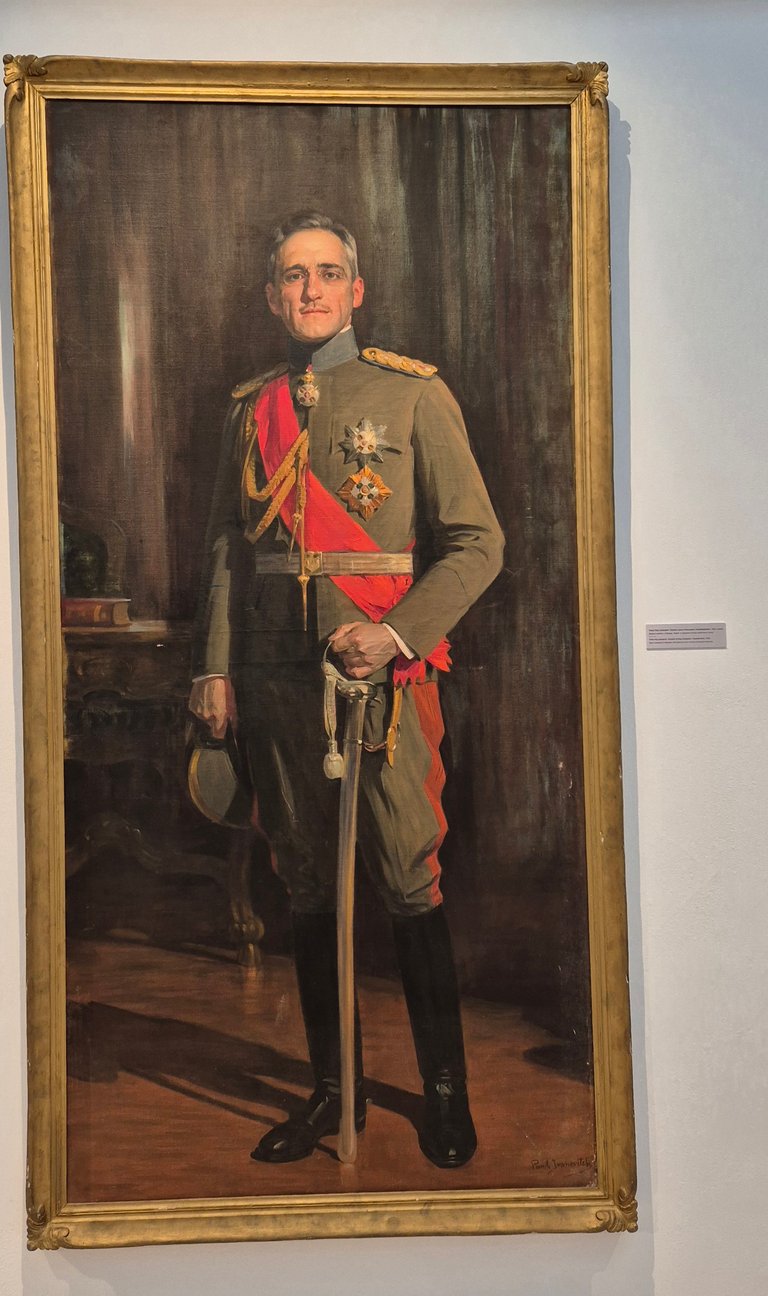
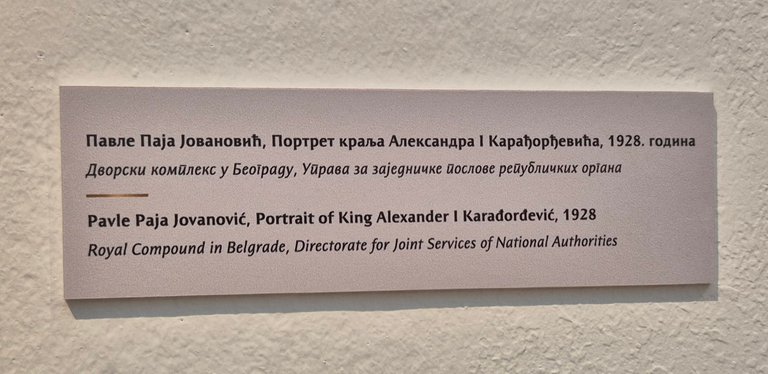
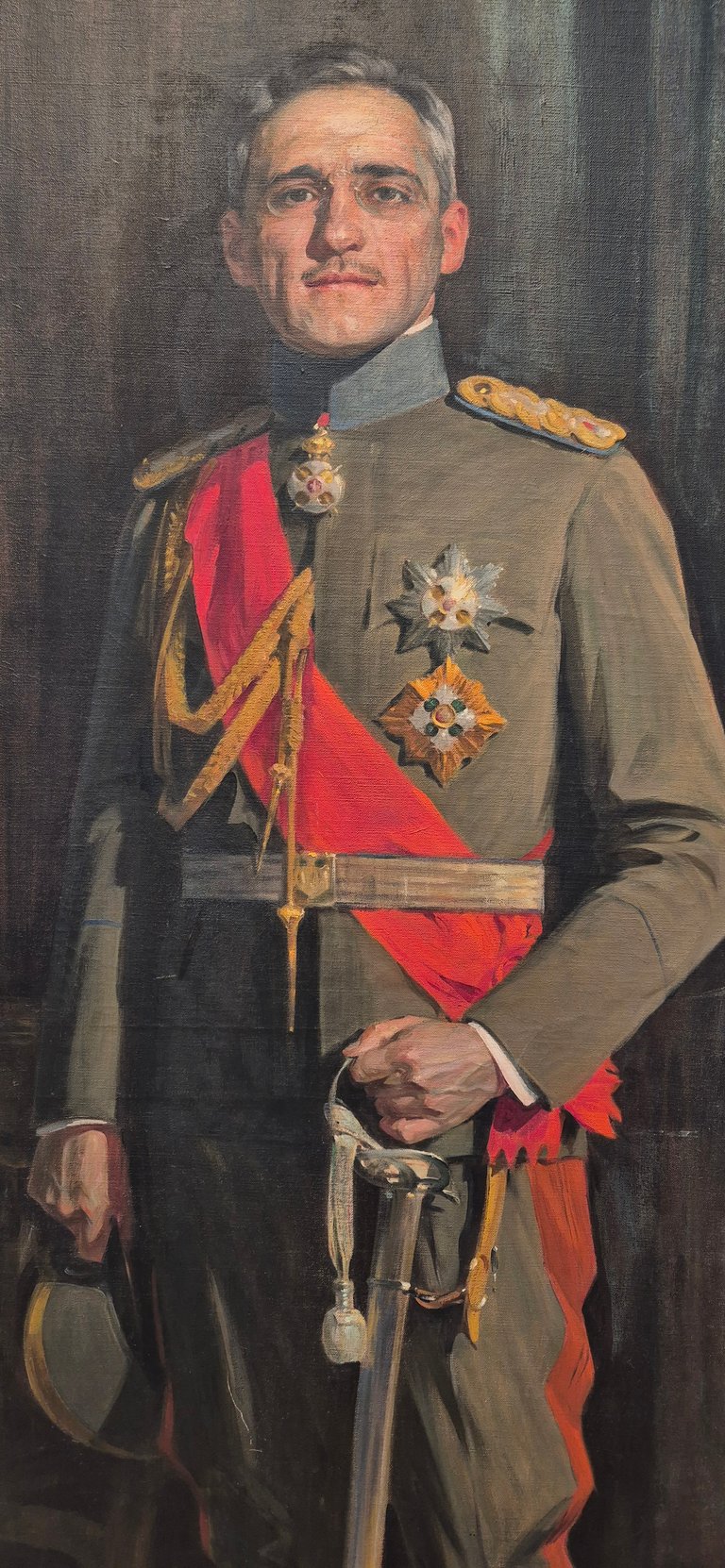

The third room of the exhibition is dedicated to the monuments to the King, which were erected in cities throughout the Kingdom of Yugoslavia in the years after his assassination.
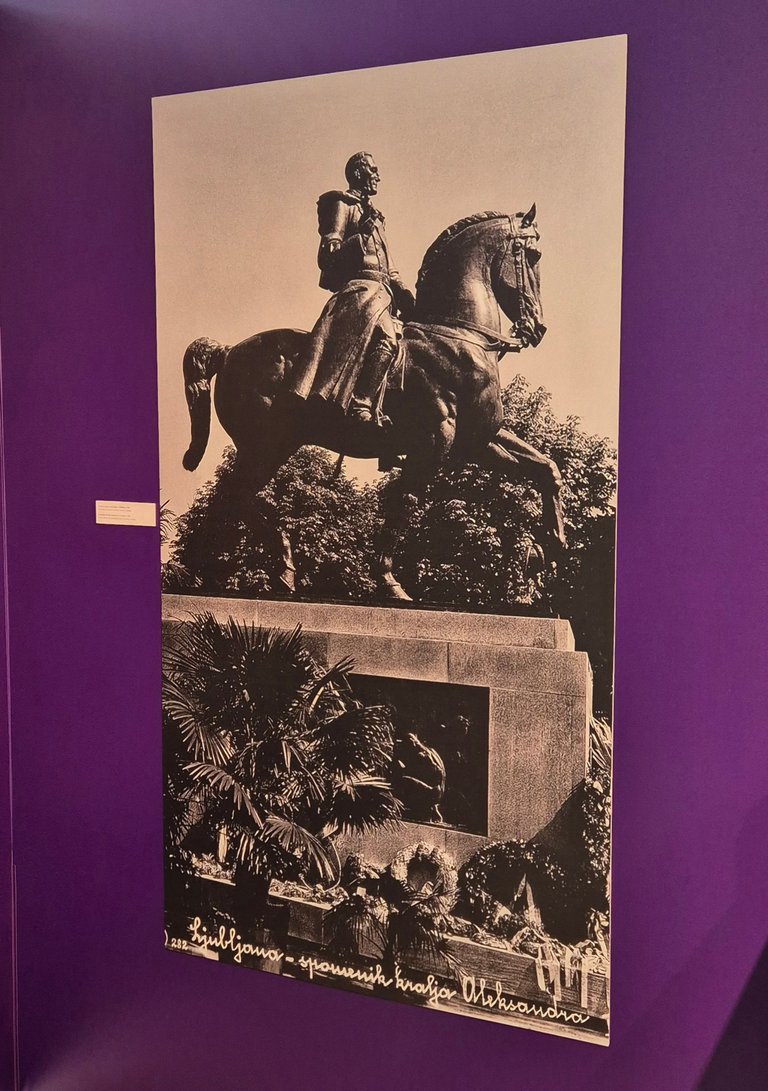
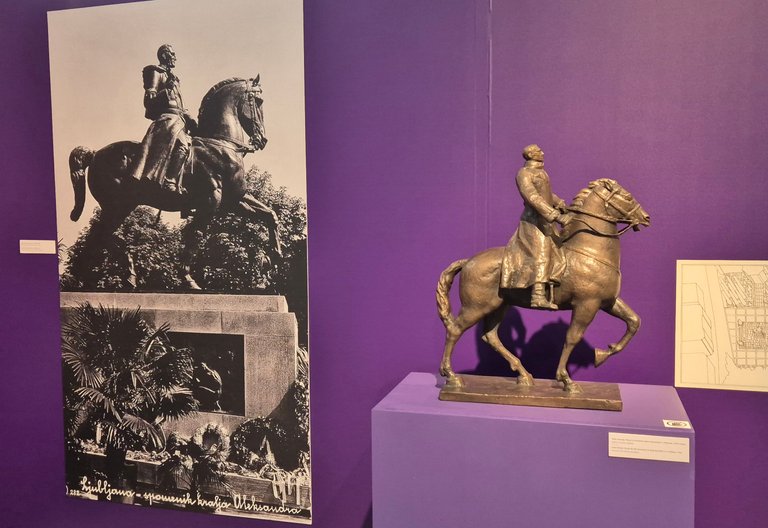
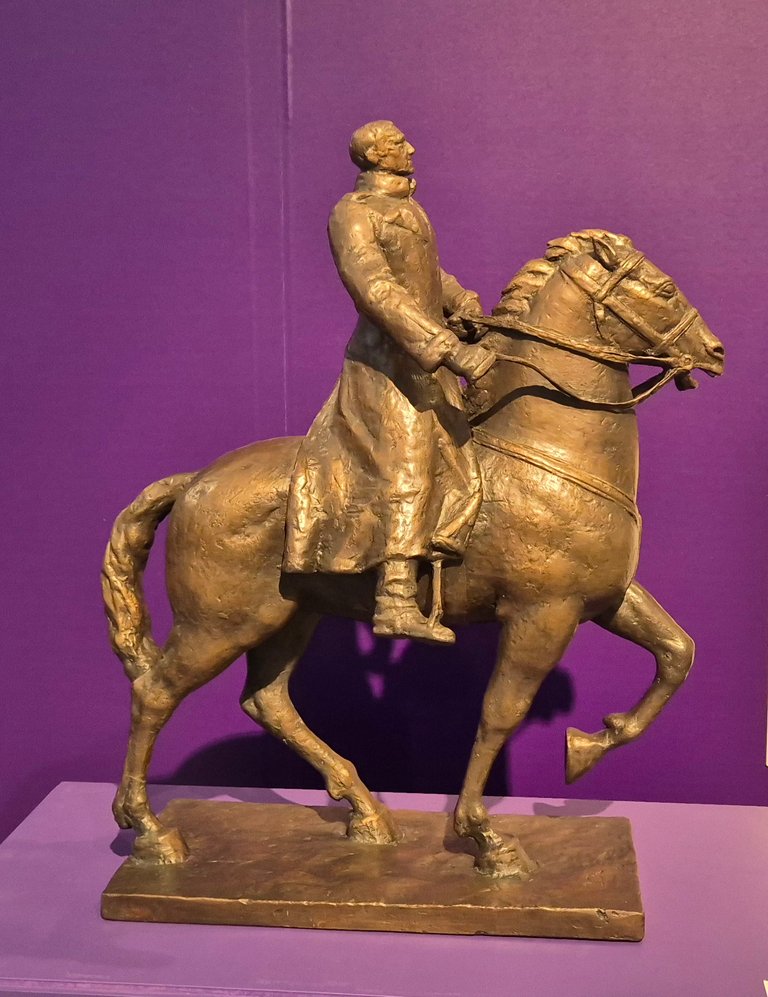
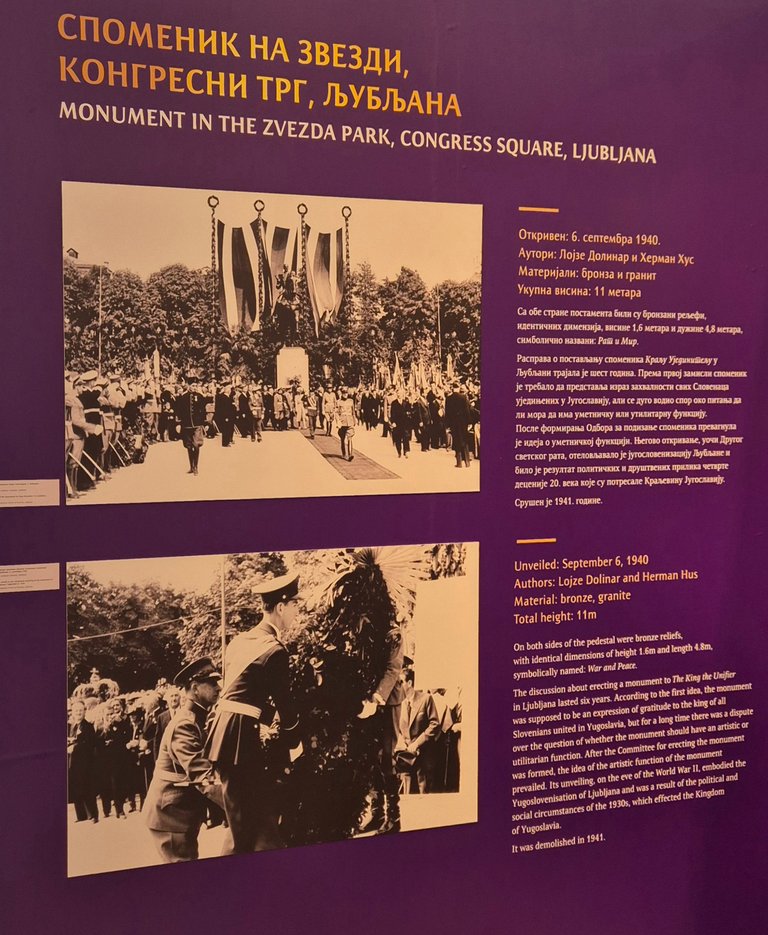
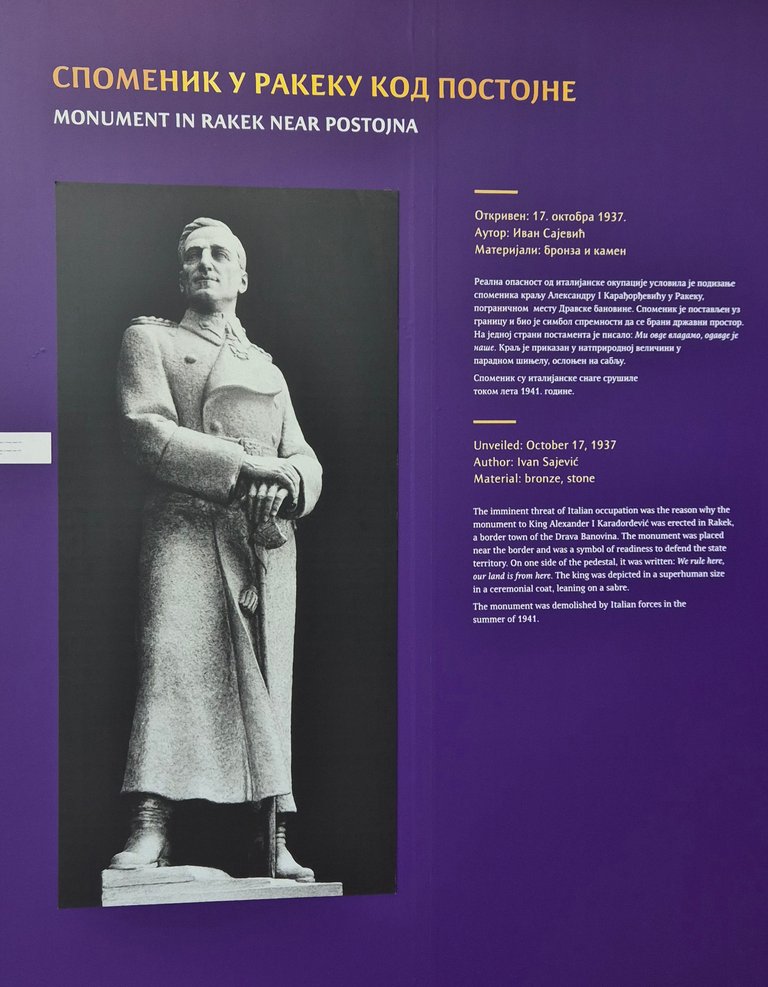
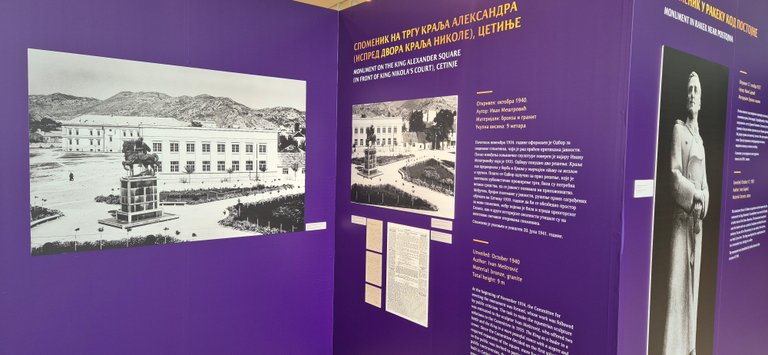
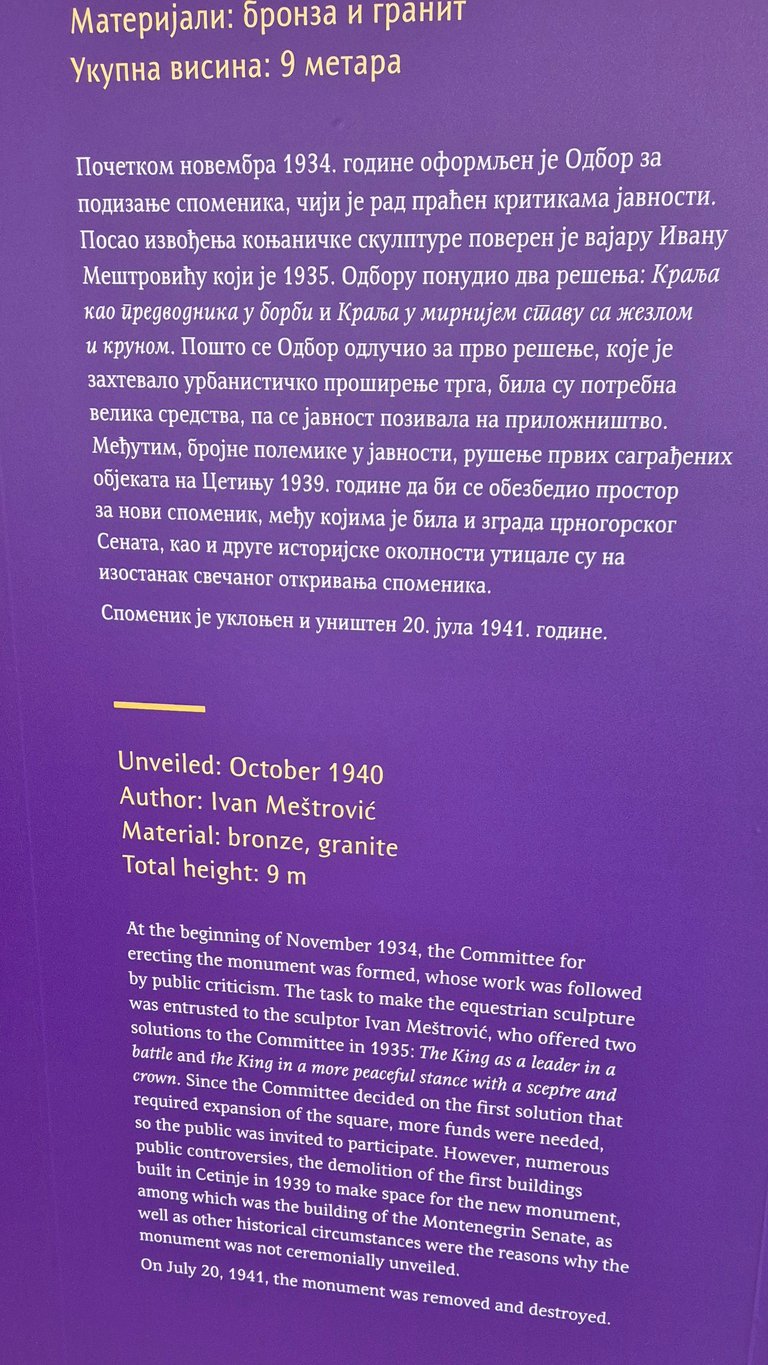
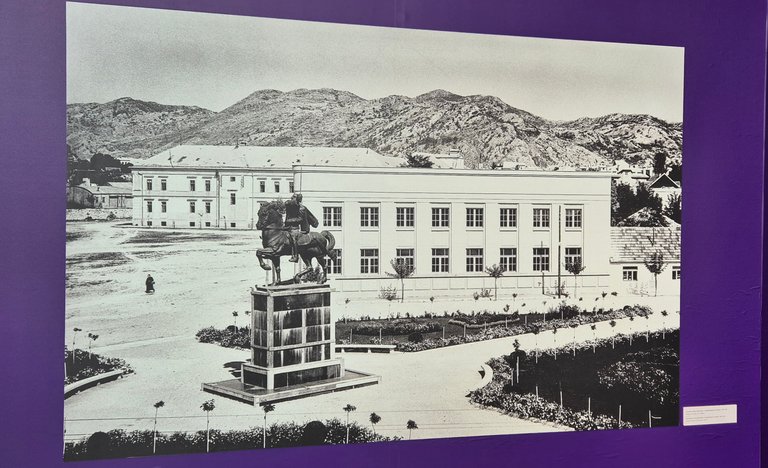
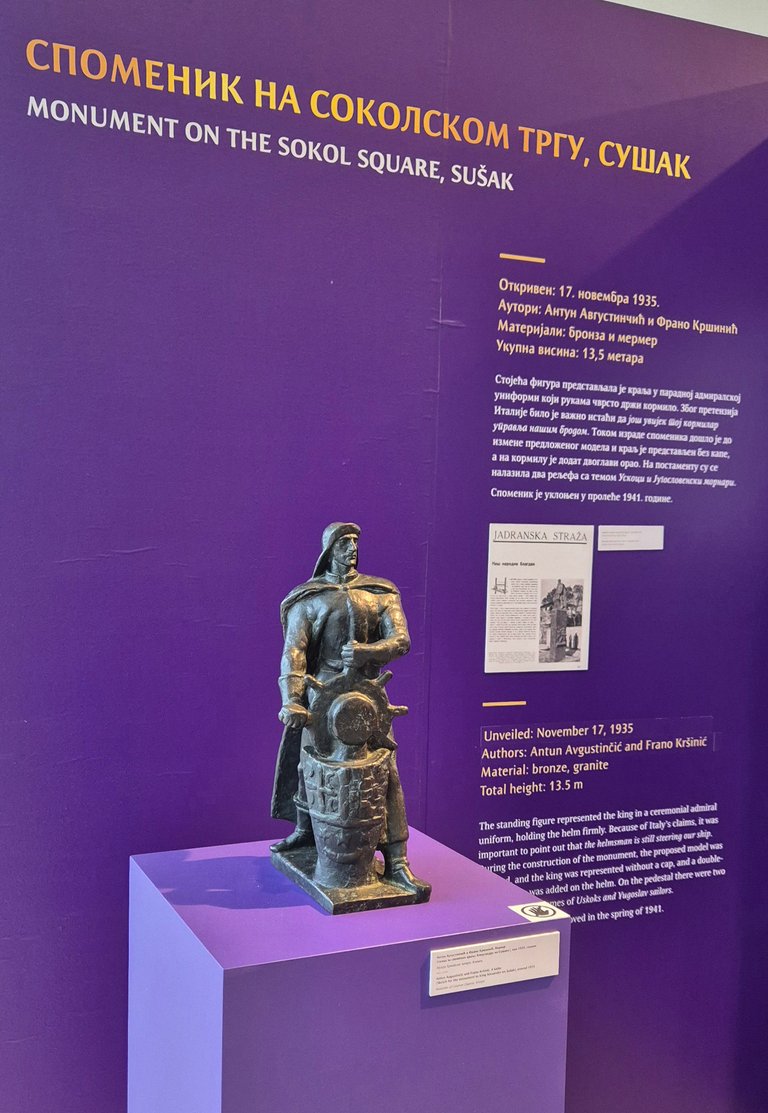
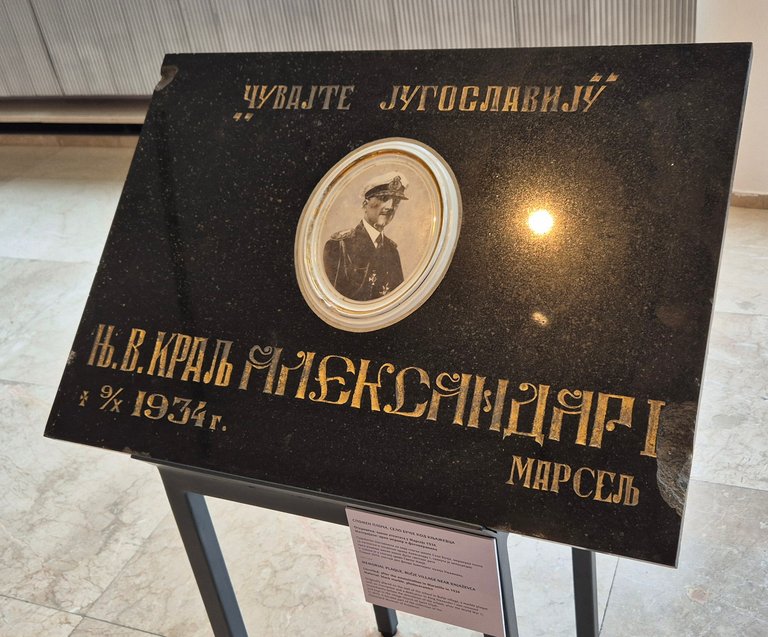
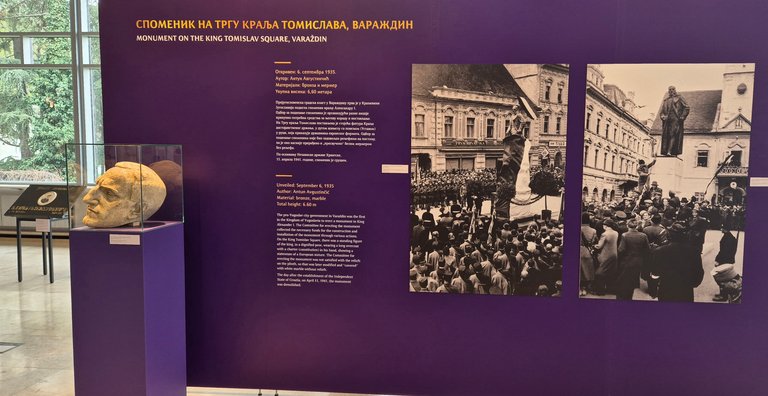
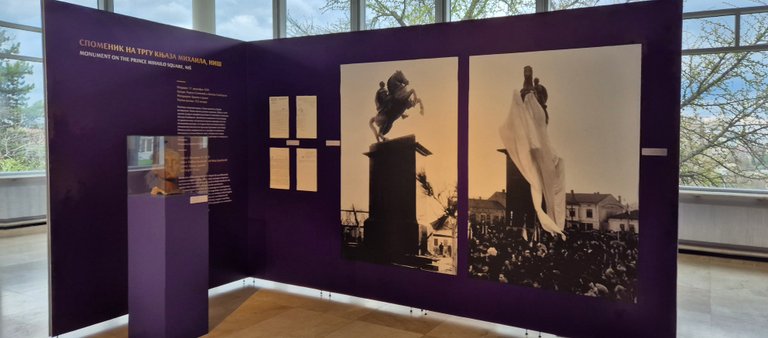
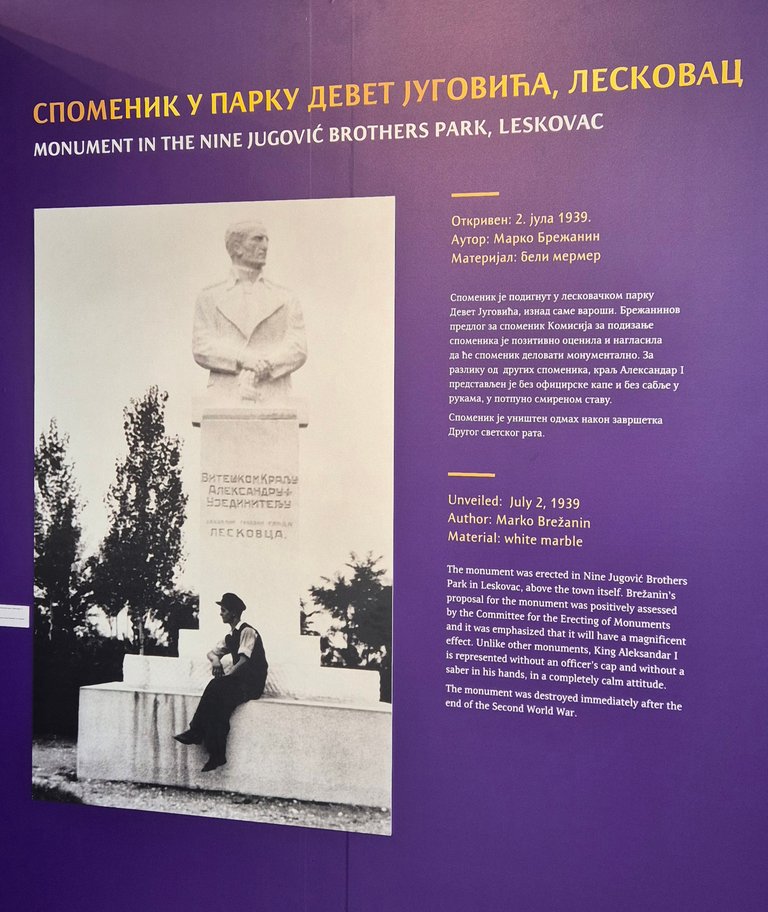
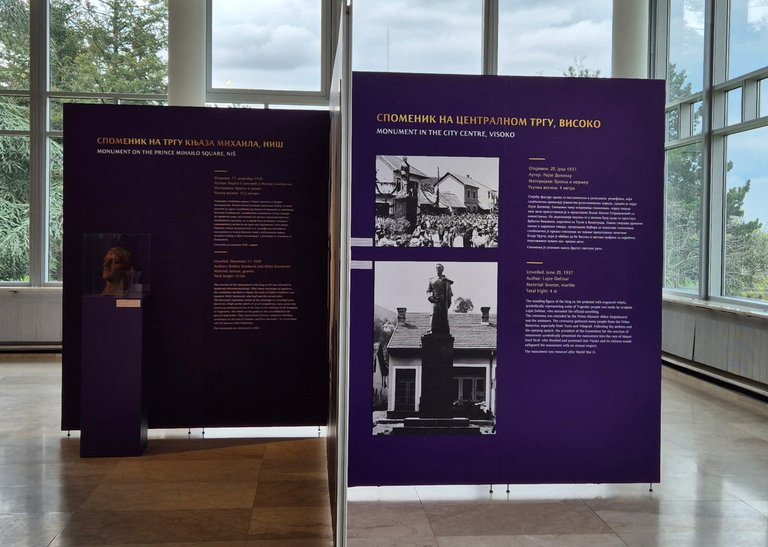

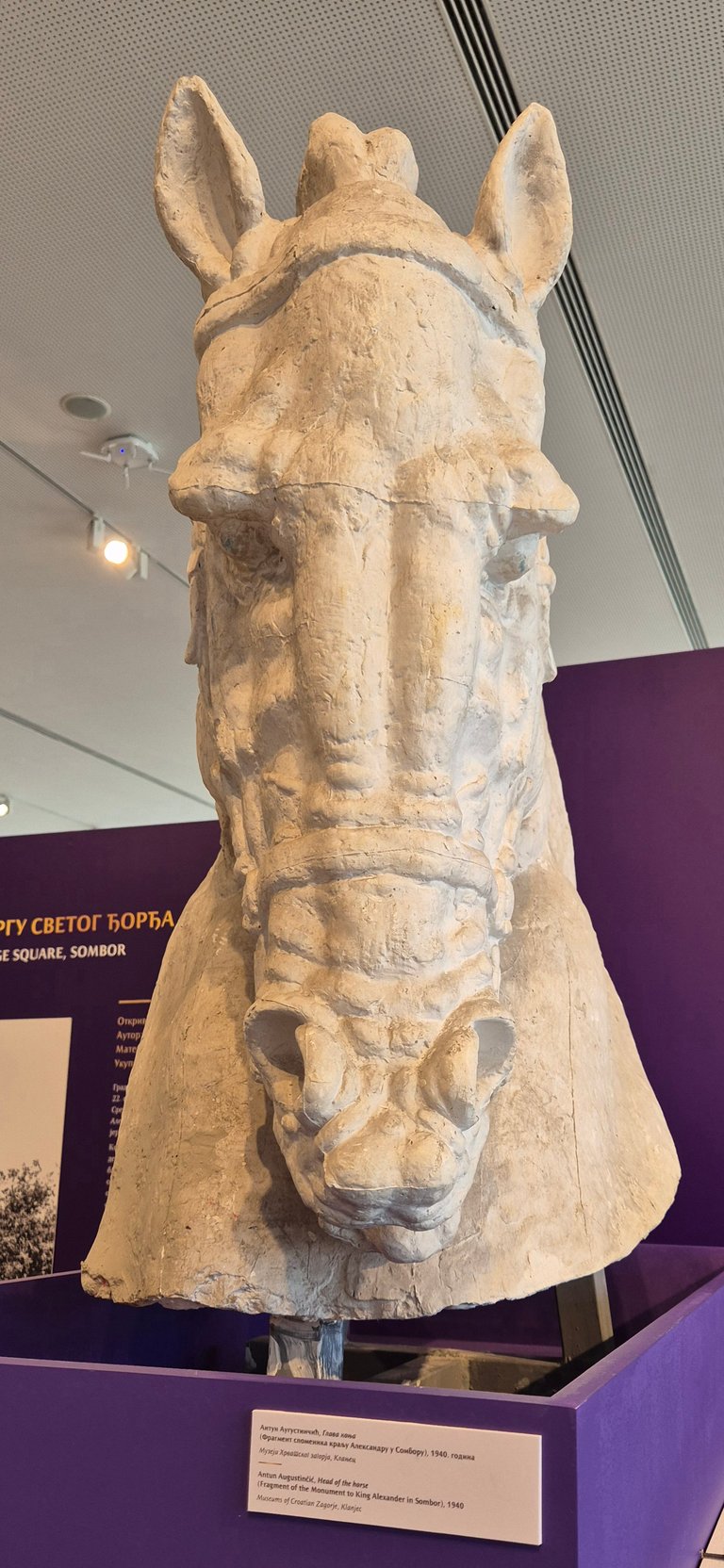
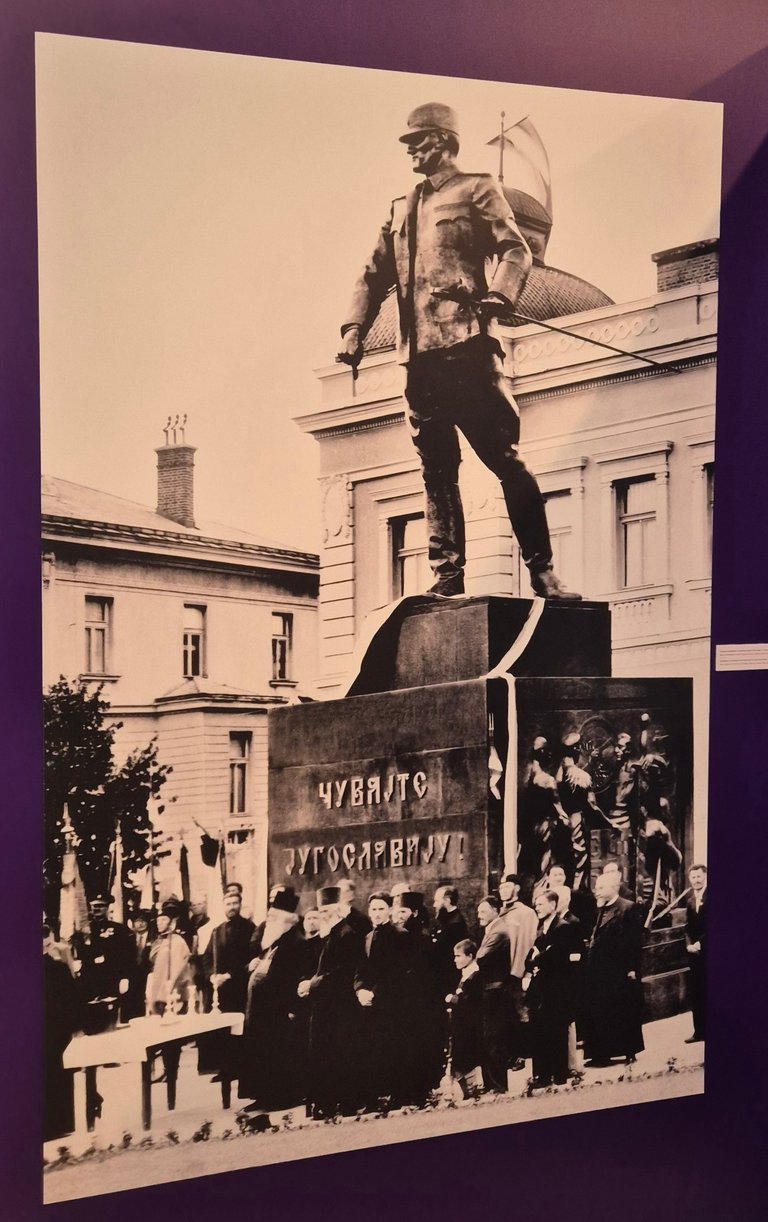
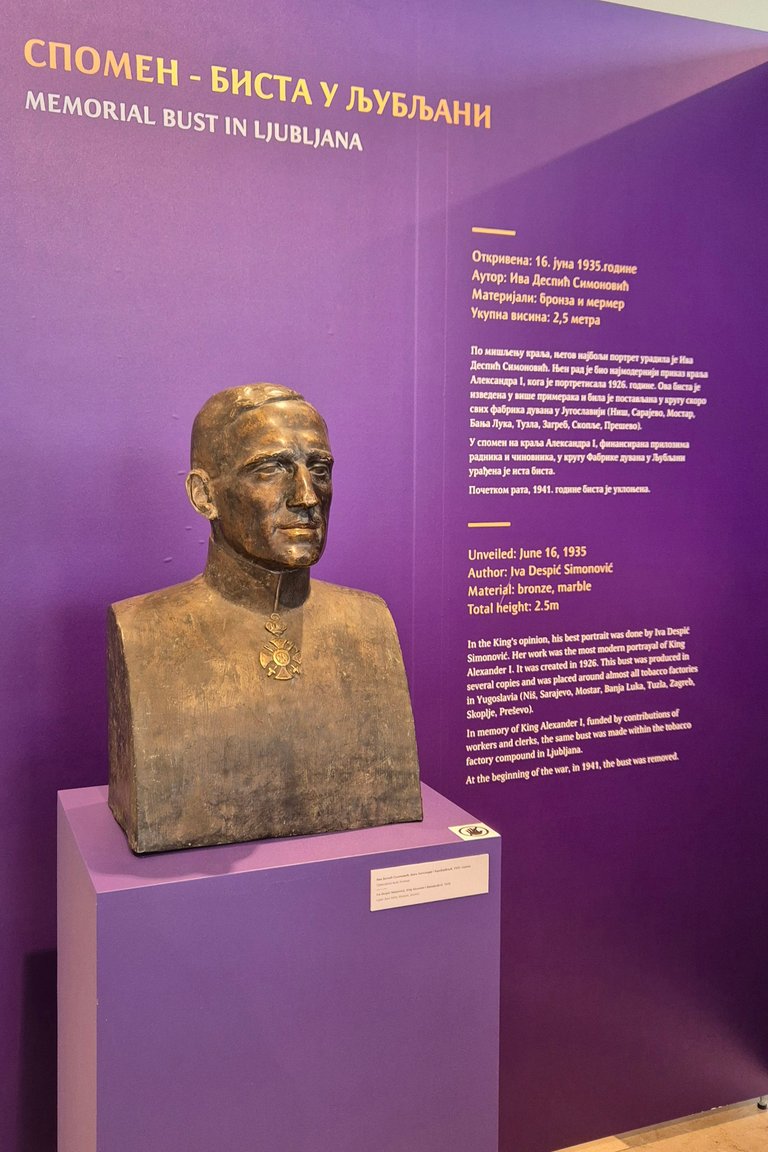
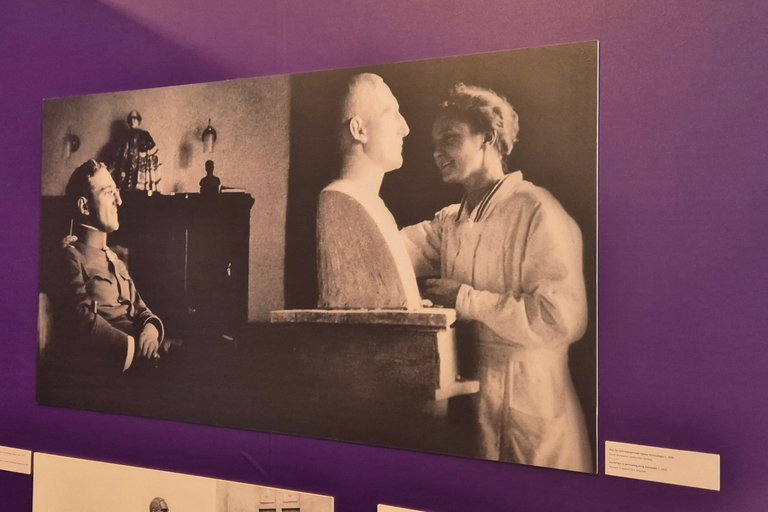

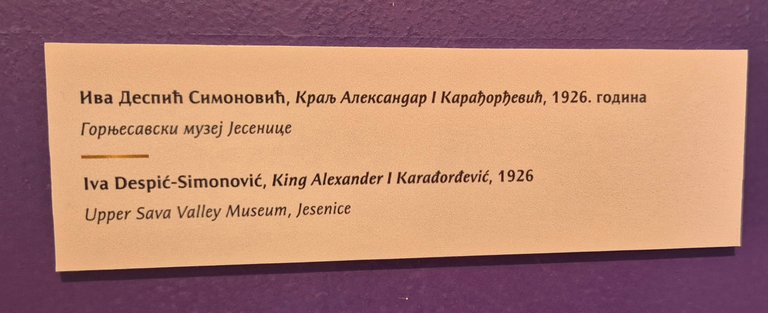
In addition to the construction of a large number of monuments, in the name of the late king (as well as during his lifetime), schools, bridges, centers of culture were built and opened...
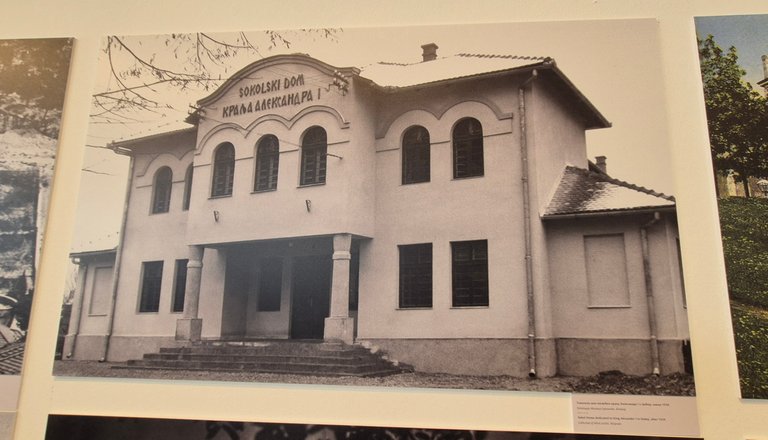
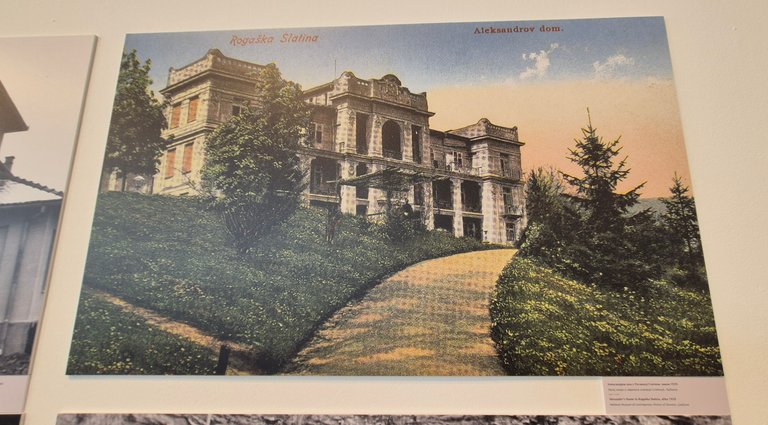
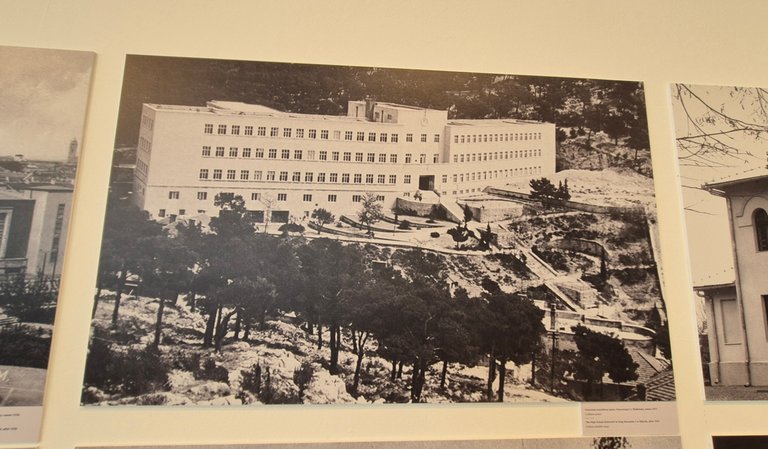
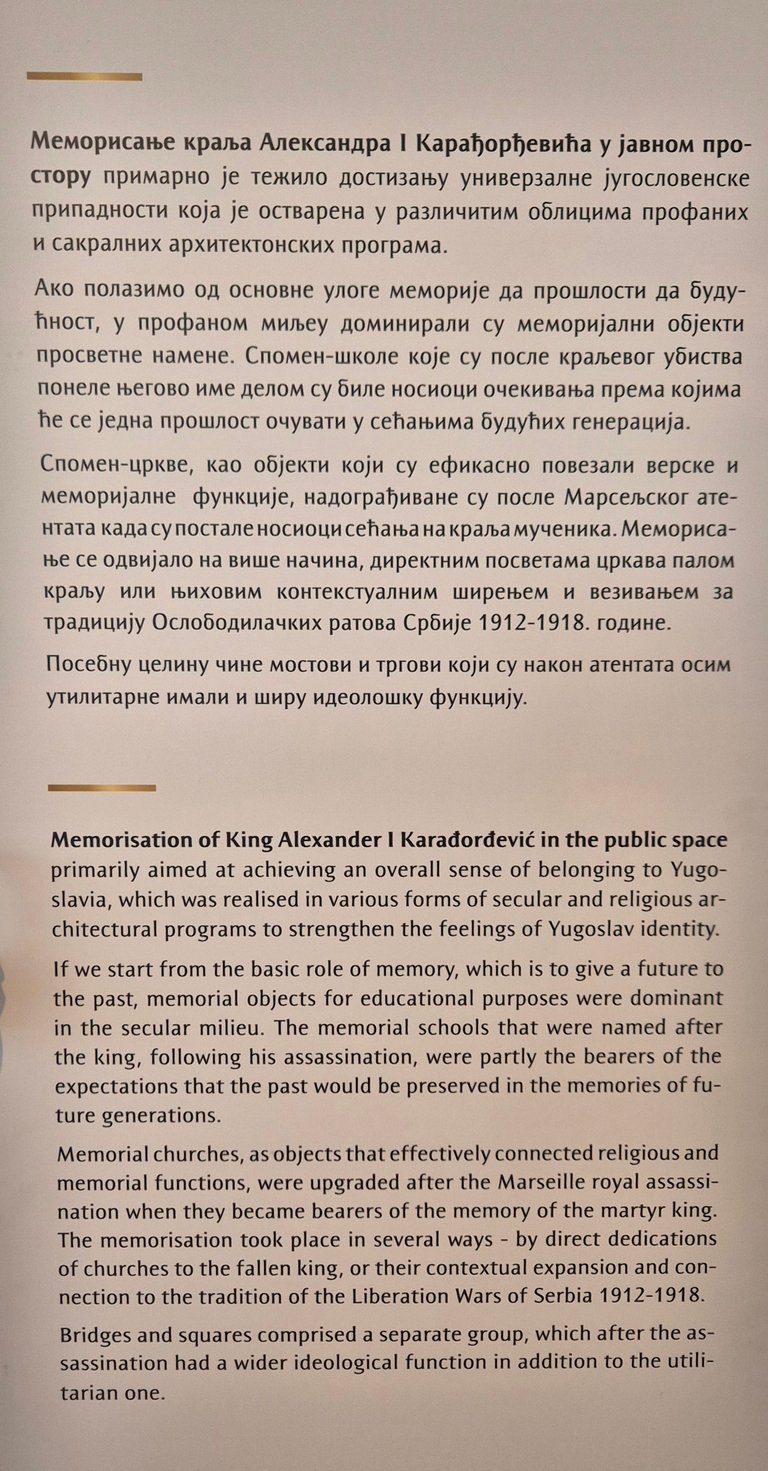

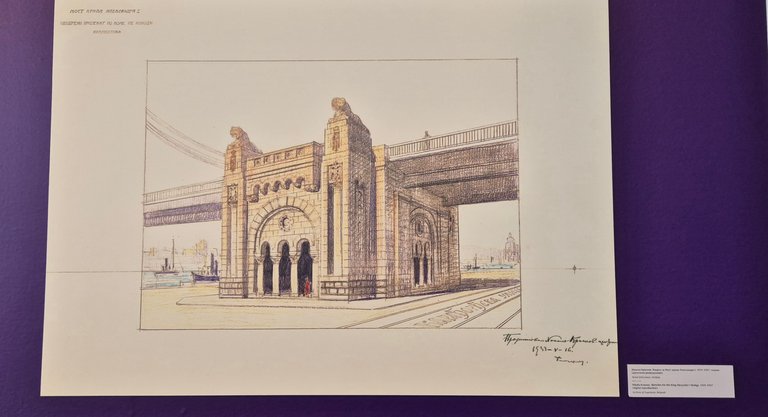
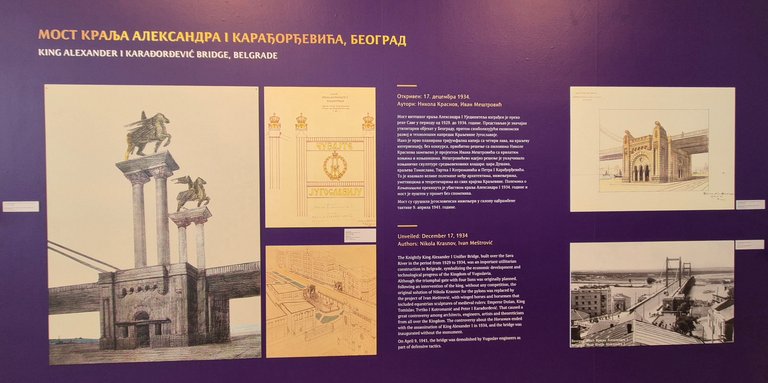
Unfortunately, at the beginning of the second world war, when the royal family fled to London, with the arrival of communism and the abolition of the kingdom, all these monuments were destroyed or dismantled. There is only evidence of them thanks to these photographs.
From the photos, as well as these models, you can tell how monumental they were...
An interesting collection of letters sent in the days after the assassination was also presented, with postage stamps of special series marking the days of mourning.
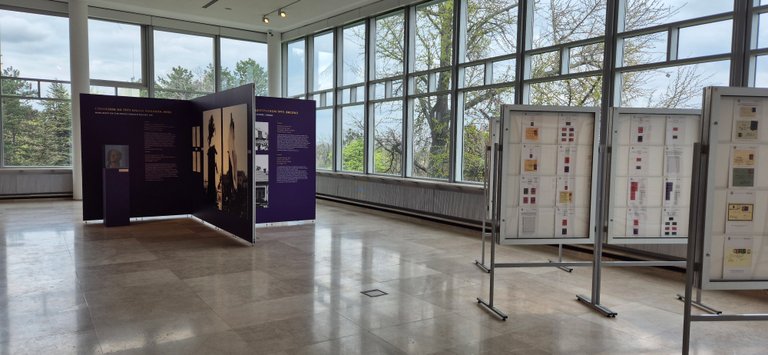
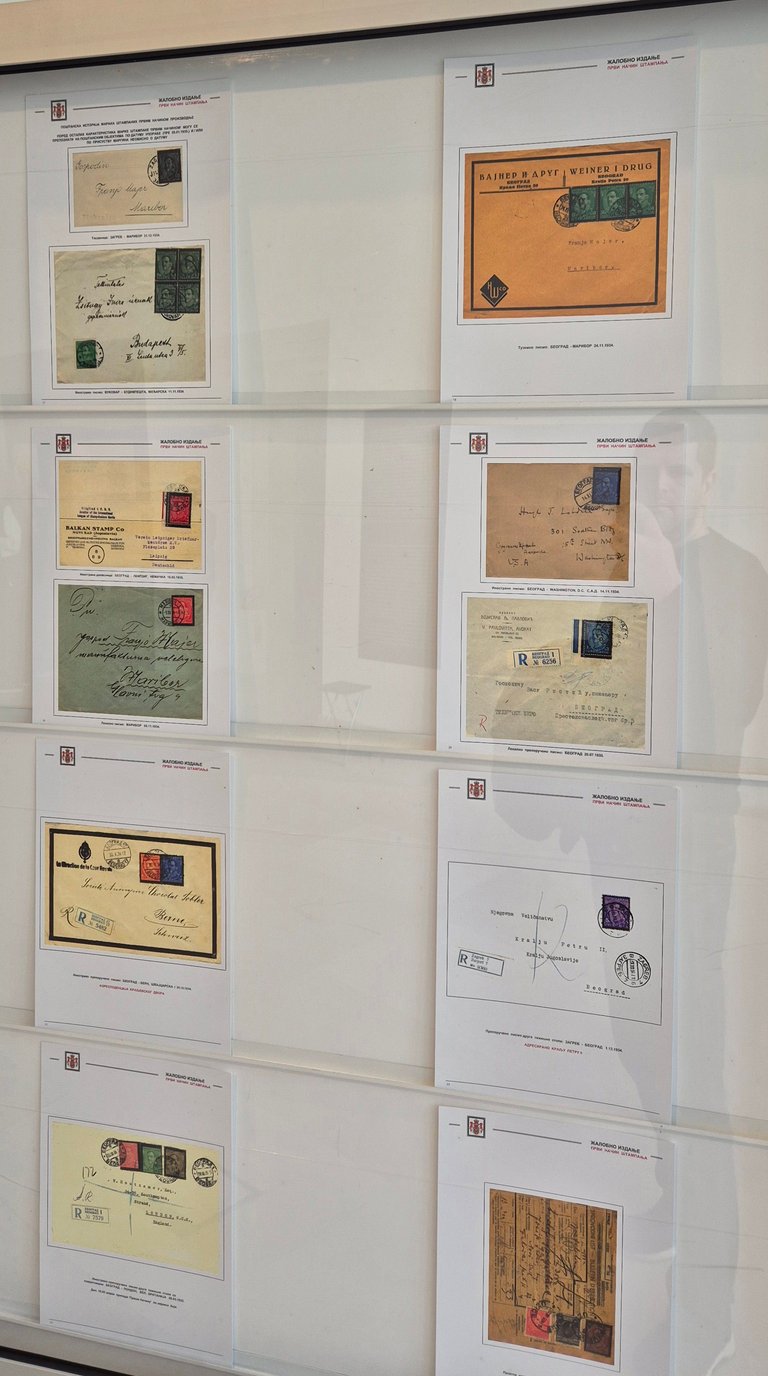
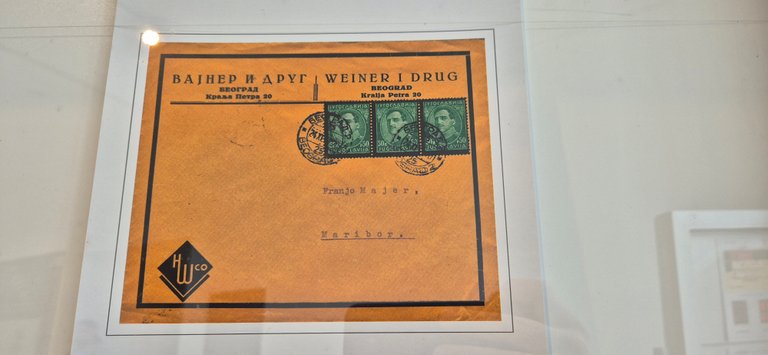
In that room there is also a collection of canvases and wall decorations from that time. The image of the King and the symbols of the kingdom were found as details on the carpets. tapestries. they were woven, knitted and drawn as a precious gift or for everyday use.
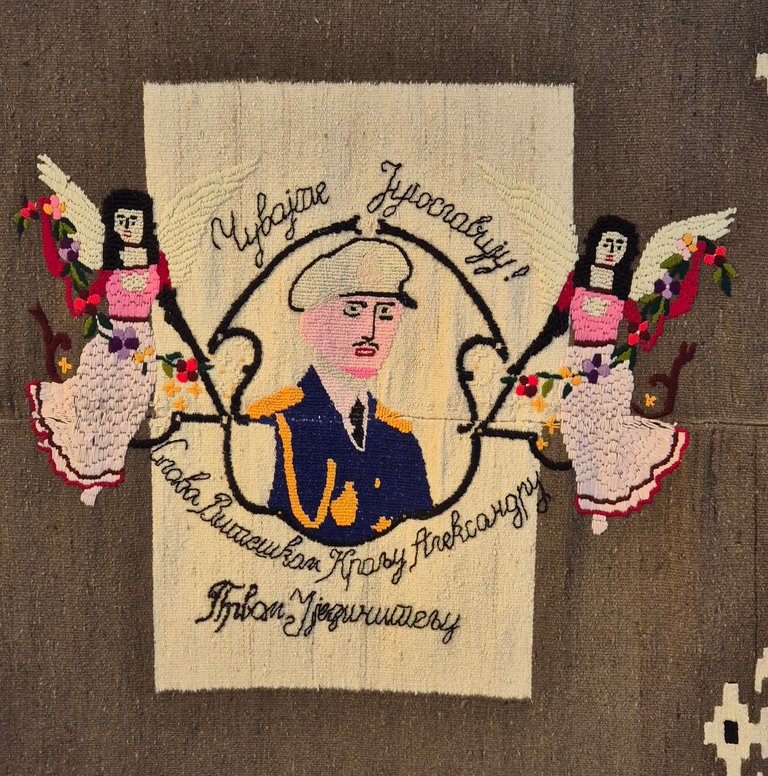
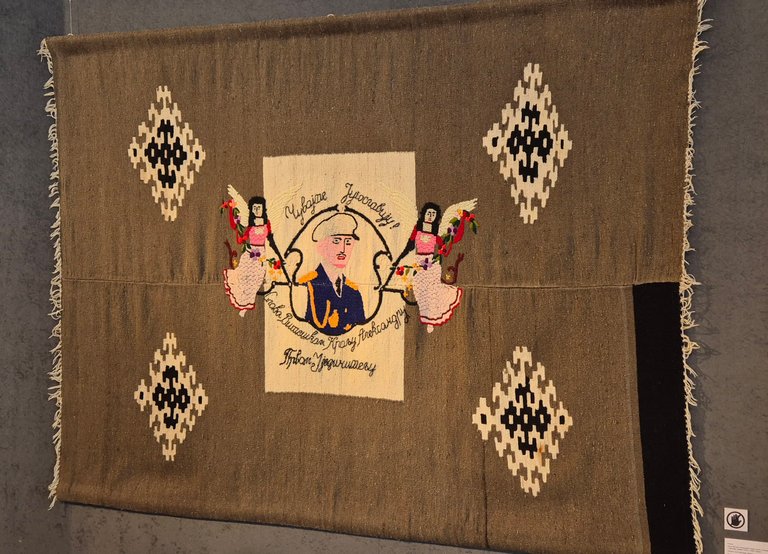
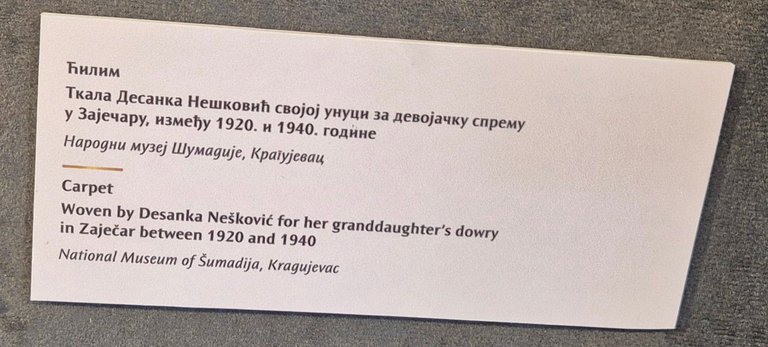
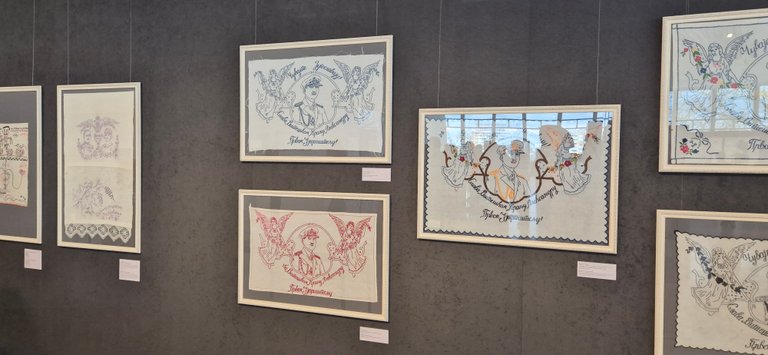
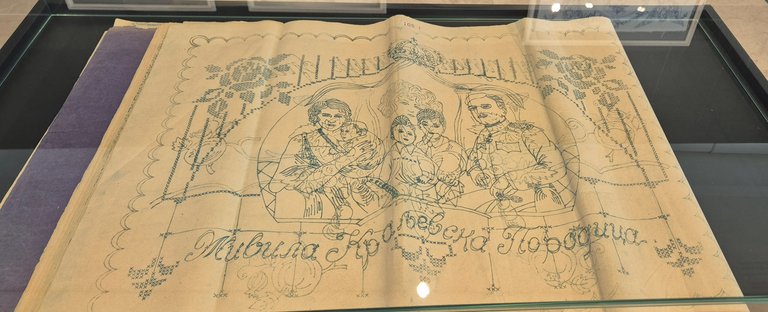
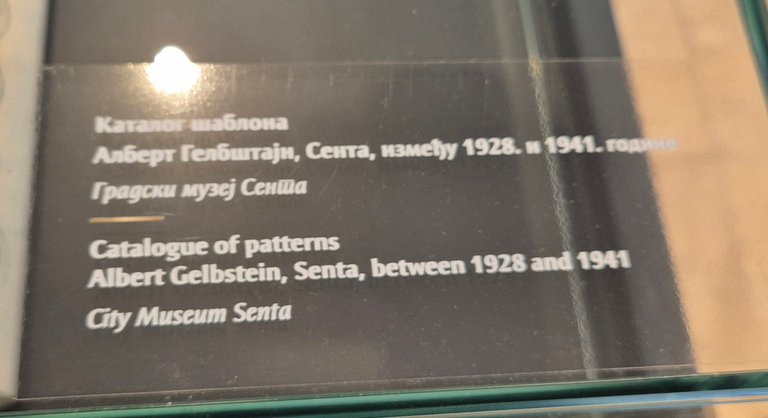
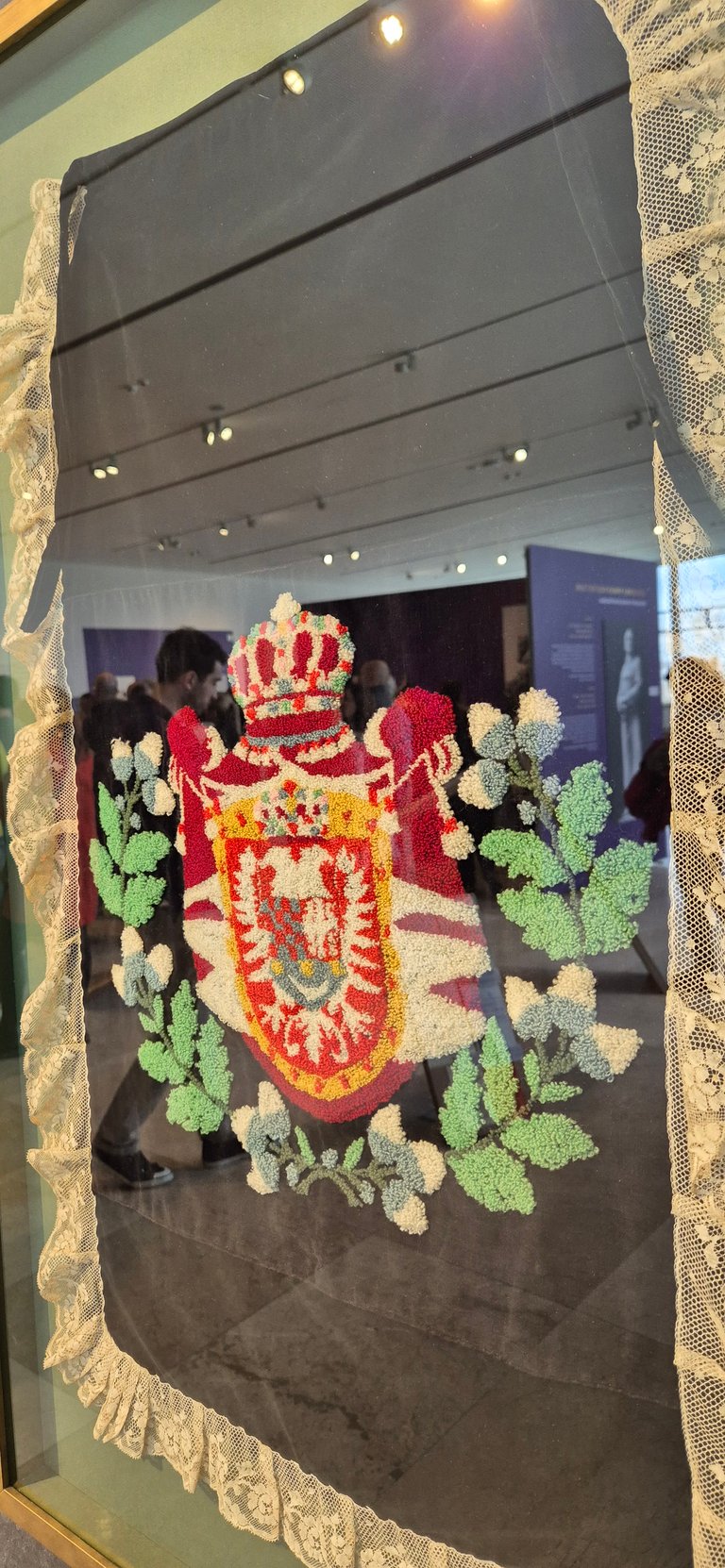
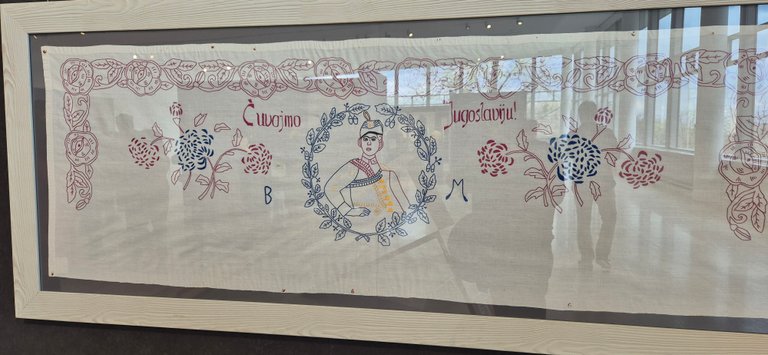
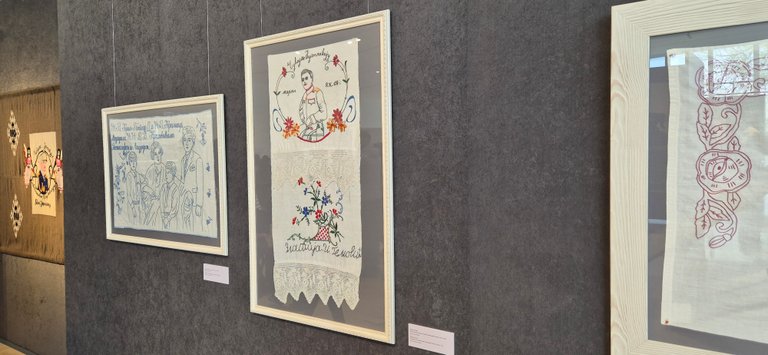
And the collection of fiddles is also very interesting, with very interesting details on them.
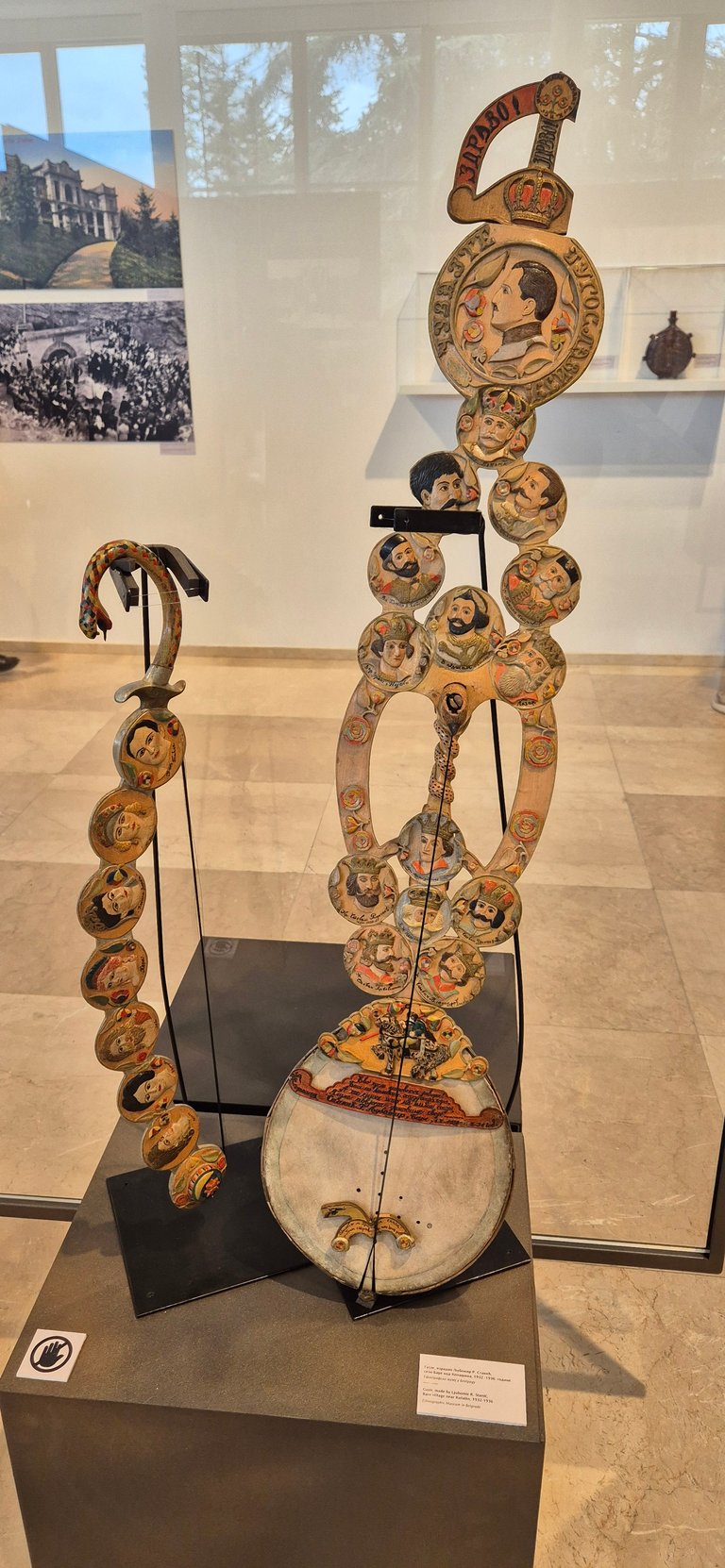

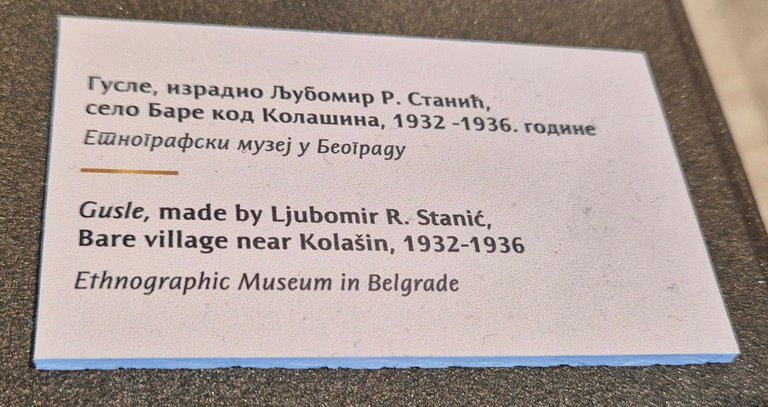
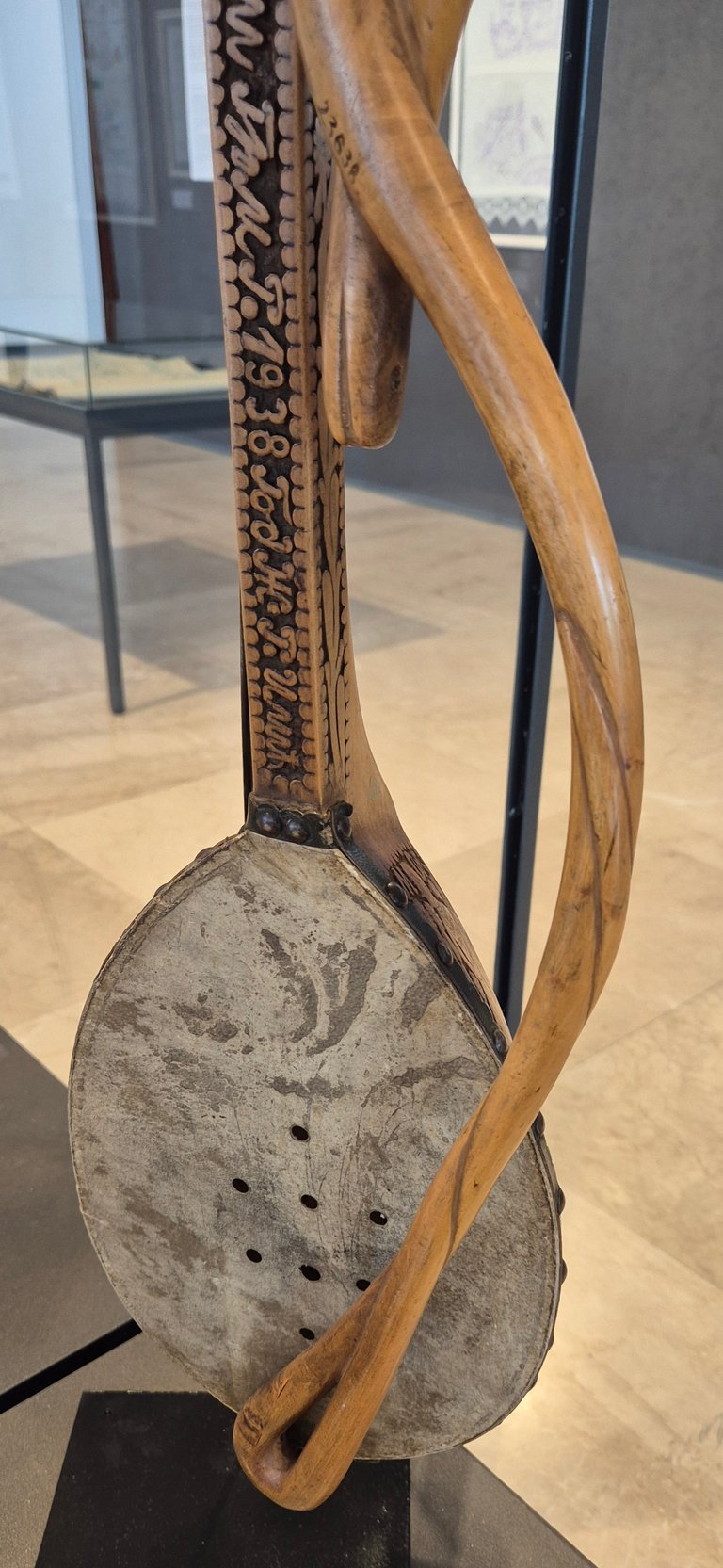

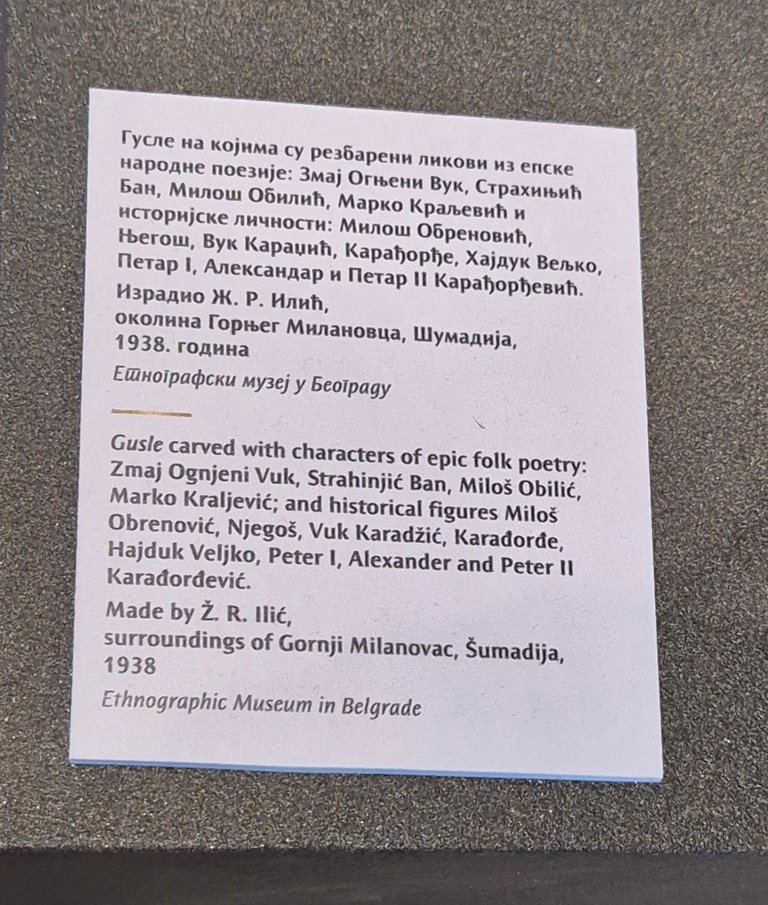
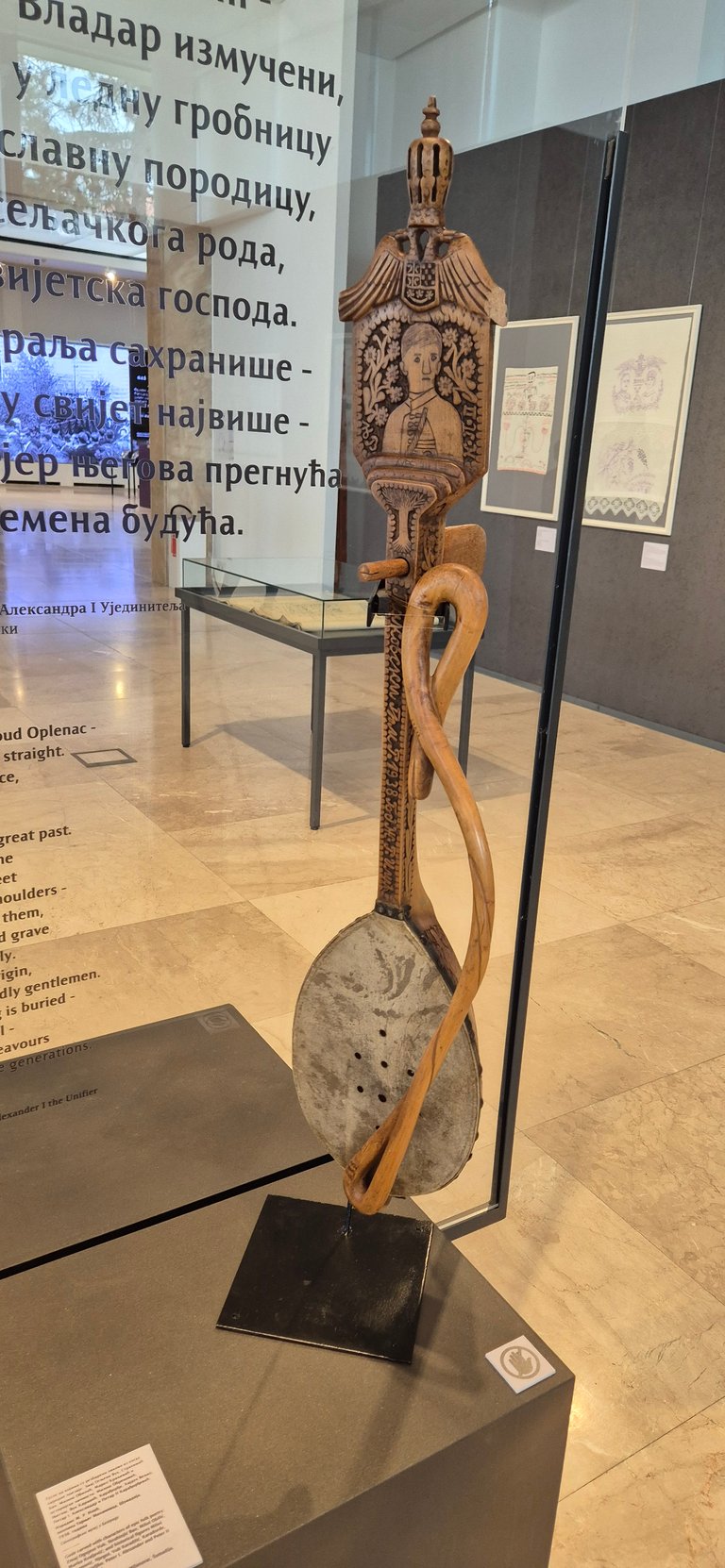

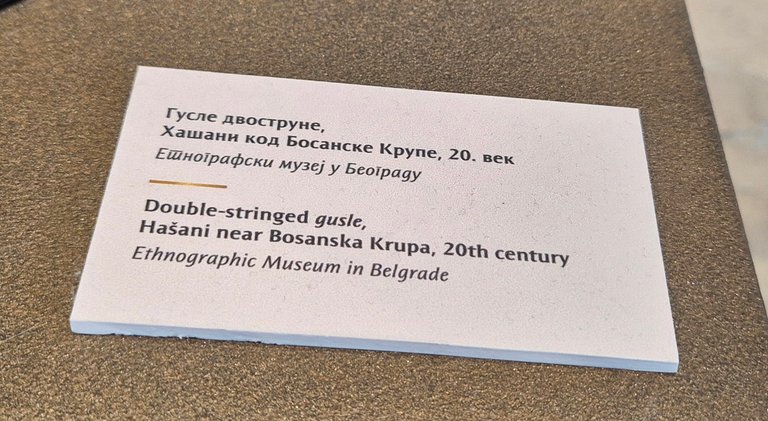
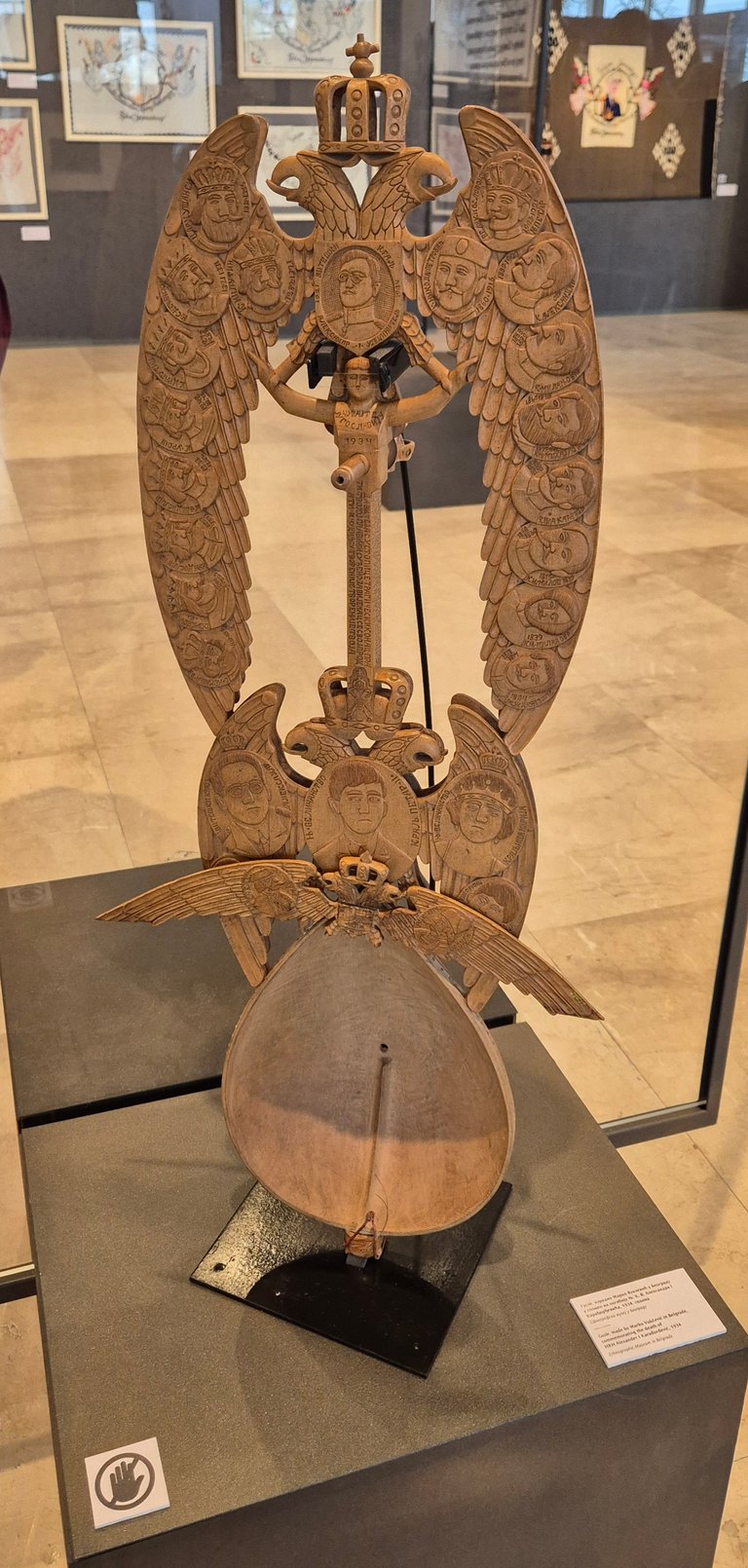
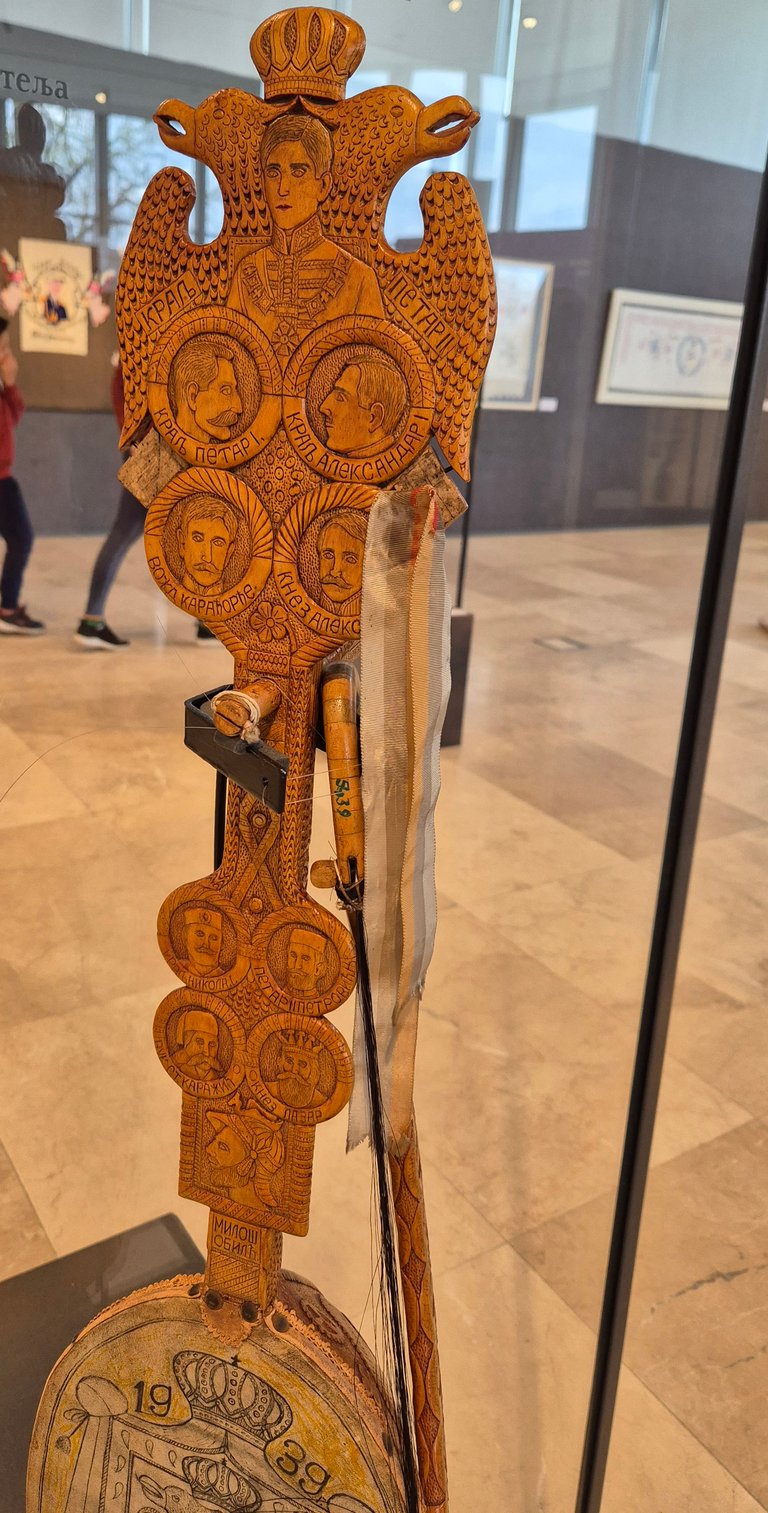
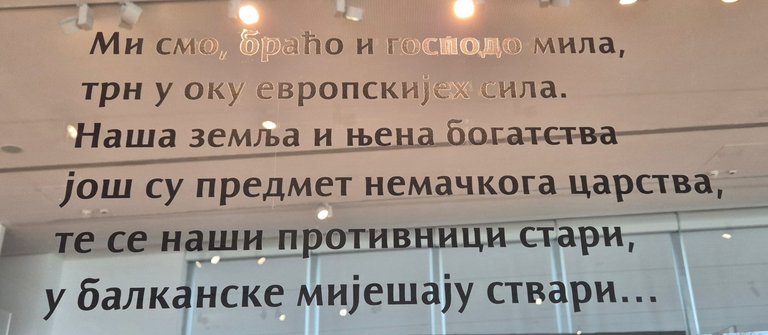
This stringed instrument is characteristic of the Balkan region, and was used by our ancestors while singing epic songs. A wooden instrument with a long and thin neck, with skin stretched over the resonance box, and the sound is produced by pulling the bow over a single string on the instrument.
The sound it produces is not beautiful, but it is therefore very impressive and reminds us of our (Serbian, Montenegrin or Herzegovina) culture and history.
Just as this exhibition also reminds of a period of unity among the people of a region, which is reawakening these months.
Thank you for stopping by my post and I hope you enjoyed the photos and the story I shared with you
All photos are my property, taken with a mobile phone
You can check out this post and your own profile on the map. Be part of the Worldmappin Community and join our Discord Channel to get in touch with other travelers, ask questions or just be updated on our latest features.
Hiya, @ybanezkim26 here, just swinging by to let you know that this post made it into our Honorable Mentions in Travel Digest #2520.
Your post has been manually curated by the @worldmappin team. If you like what we're doing, please drop by to check out all the rest of today's great posts and consider supporting other authors like yourself and us so we can keep the project going!
Become part of our travel community:
Thanks for mentioning my post in Travel Digest ❤️
You picked some great posts for today!👌
You are very welcome @duskobgd! it was well deserved. ☀️
Keep up the great work 💪
https://www.reddit.com/r/serbia/comments/1js0bi5/exhibition_protect_yugoslavia_museum_of_yugoslavia/
https://www.reddit.com/r/Yugoslavia/comments/1jssokp/exhibition_protect_yugoslavia/
The rewards earned on this comment will go directly to the people( @loading, @x-rain ) sharing the post on Reddit as long as they are registered with @poshtoken. Sign up at https://hiveposh.com. Otherwise, rewards go to the author of the blog post.
Congratulations @duskobgd! You have completed the following achievement on the Hive blockchain And have been rewarded with New badge(s)
Your next target is to reach 4000 comments.
You can view your badges on your board and compare yourself to others in the Ranking
If you no longer want to receive notifications, reply to this comment with the word
STOPCheck out our last posts: